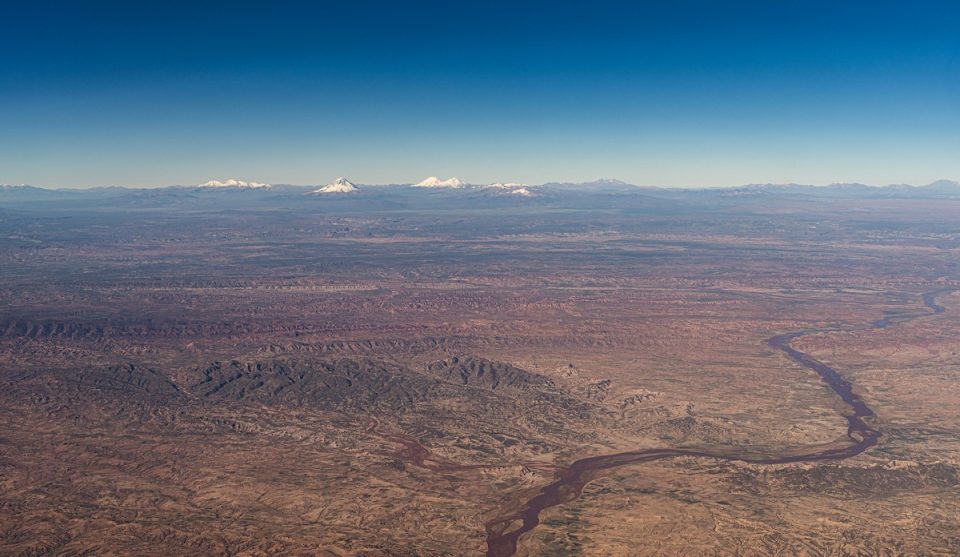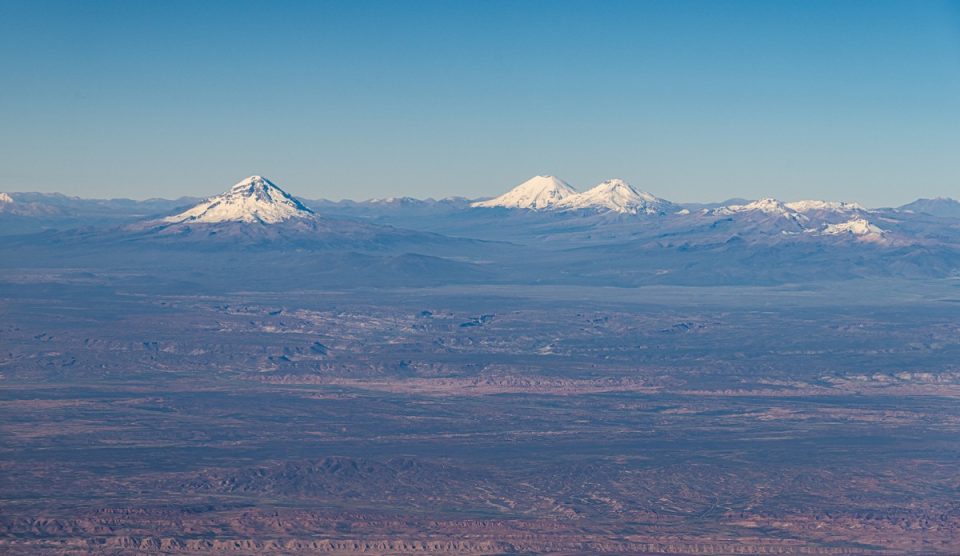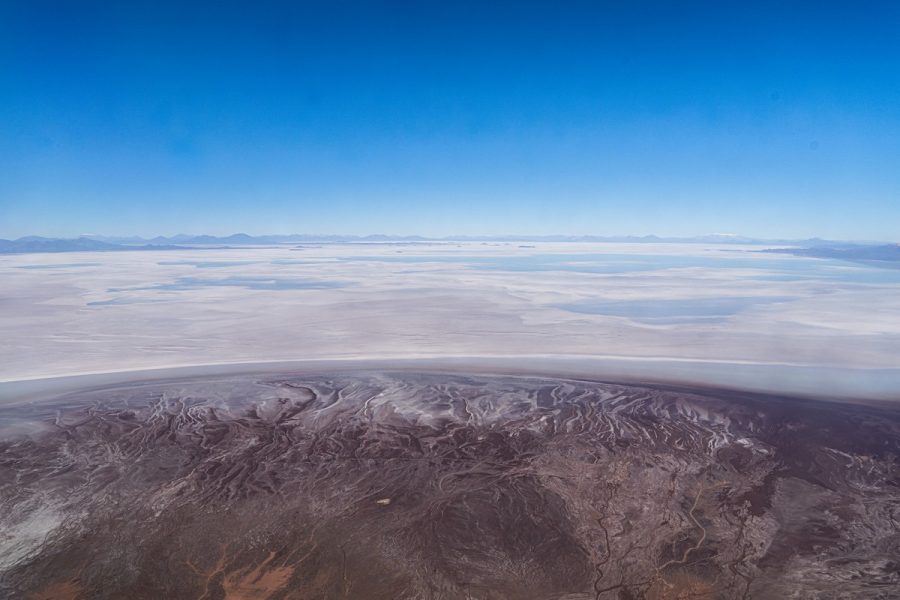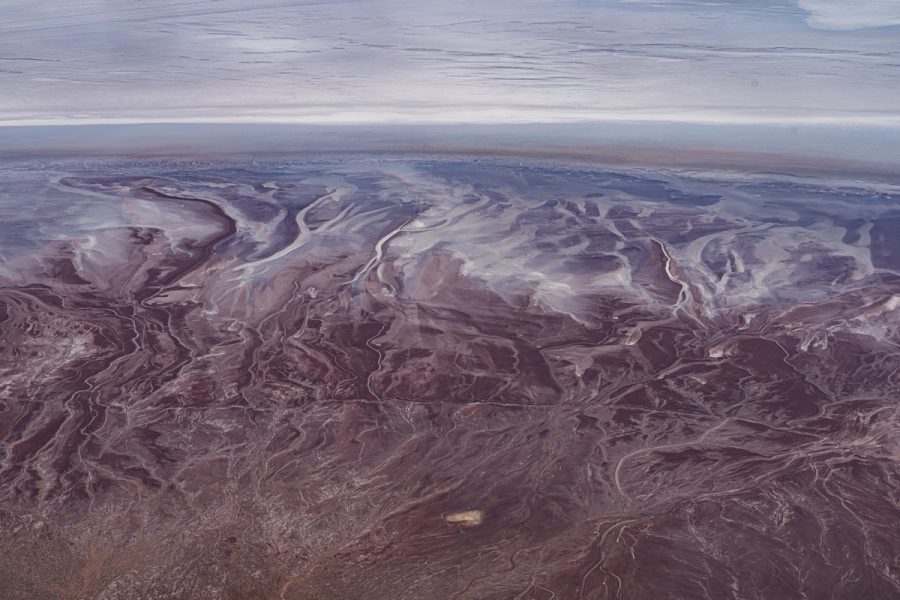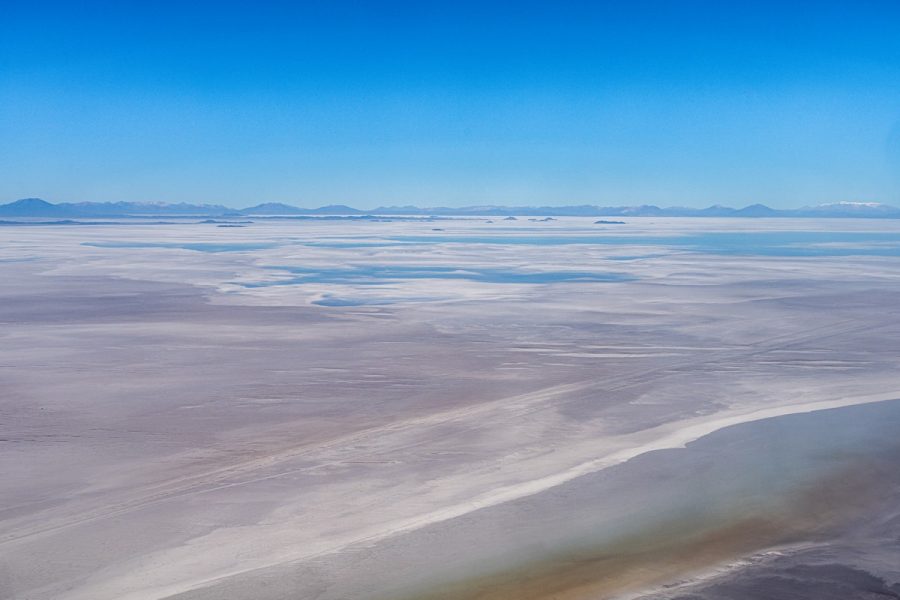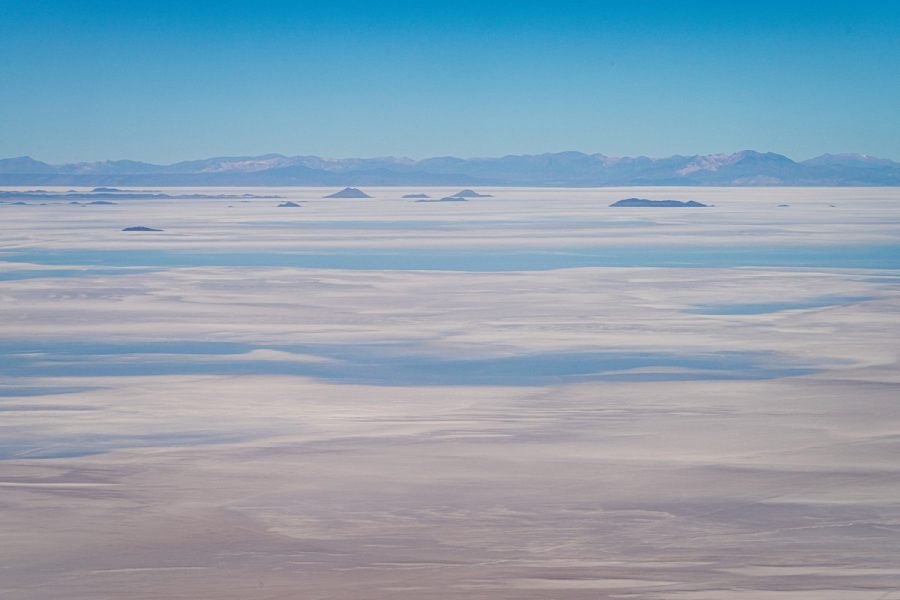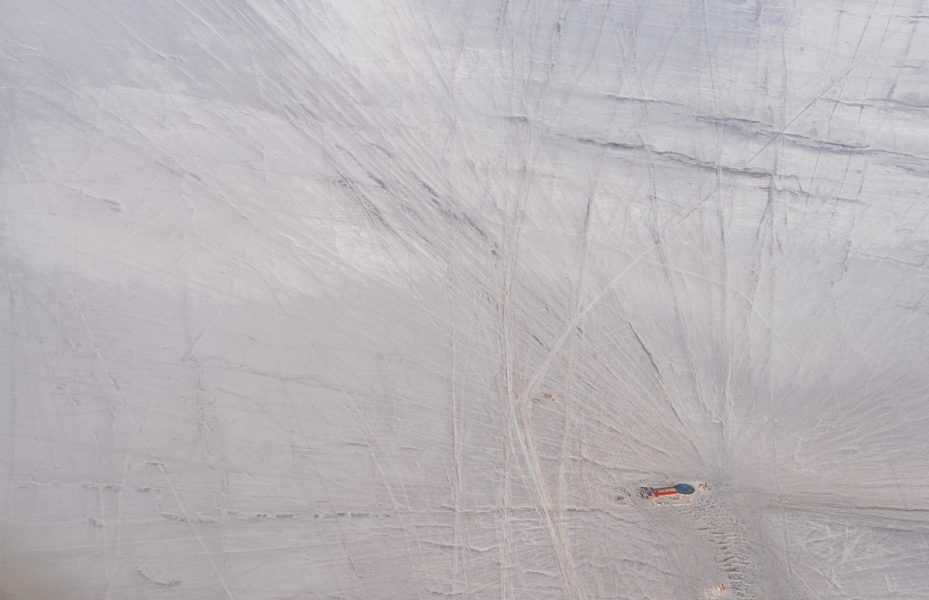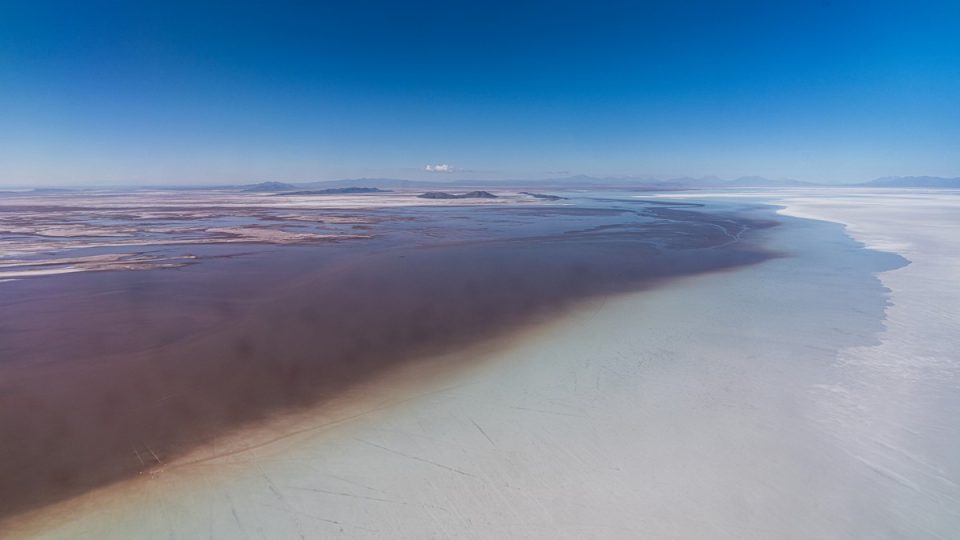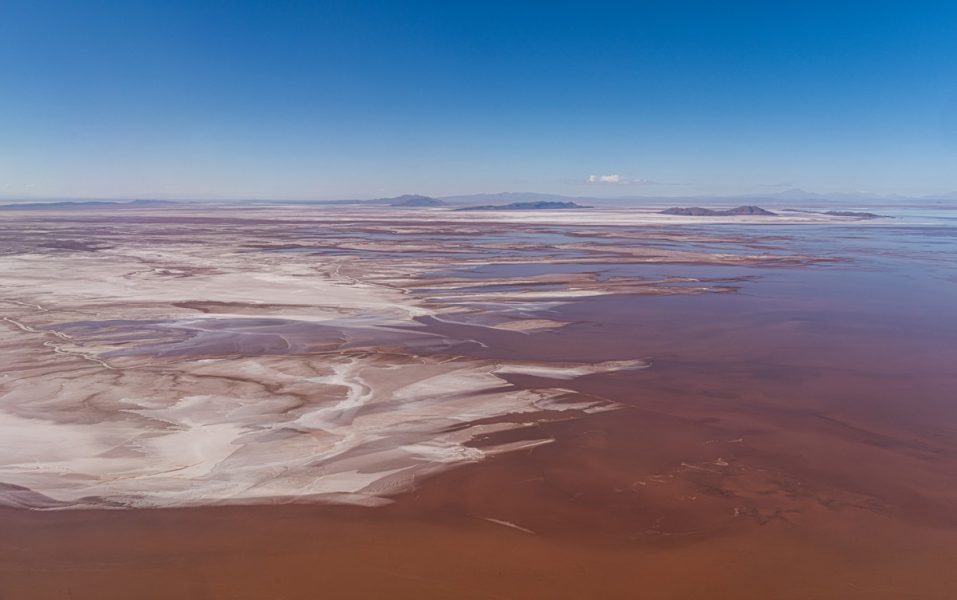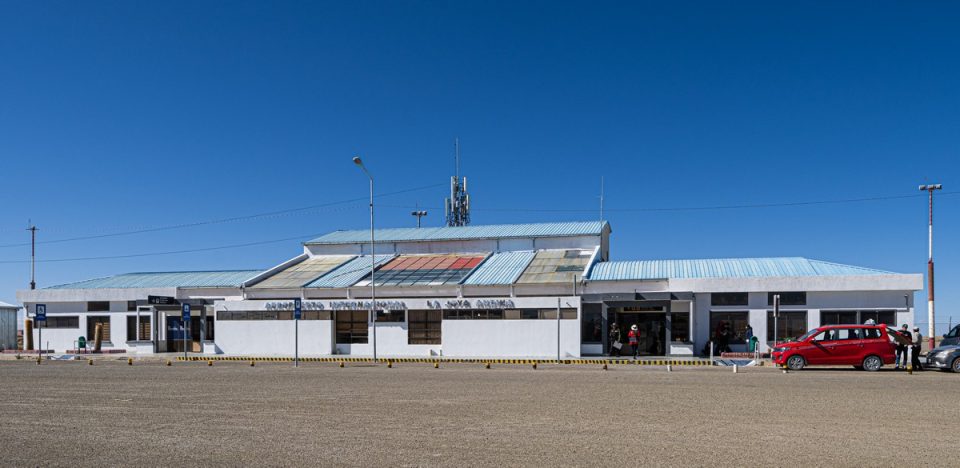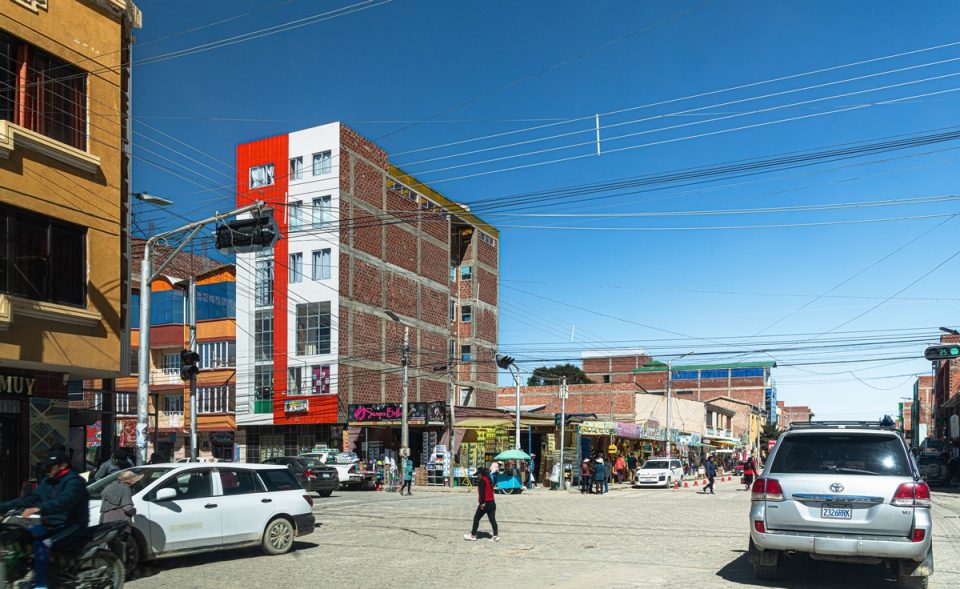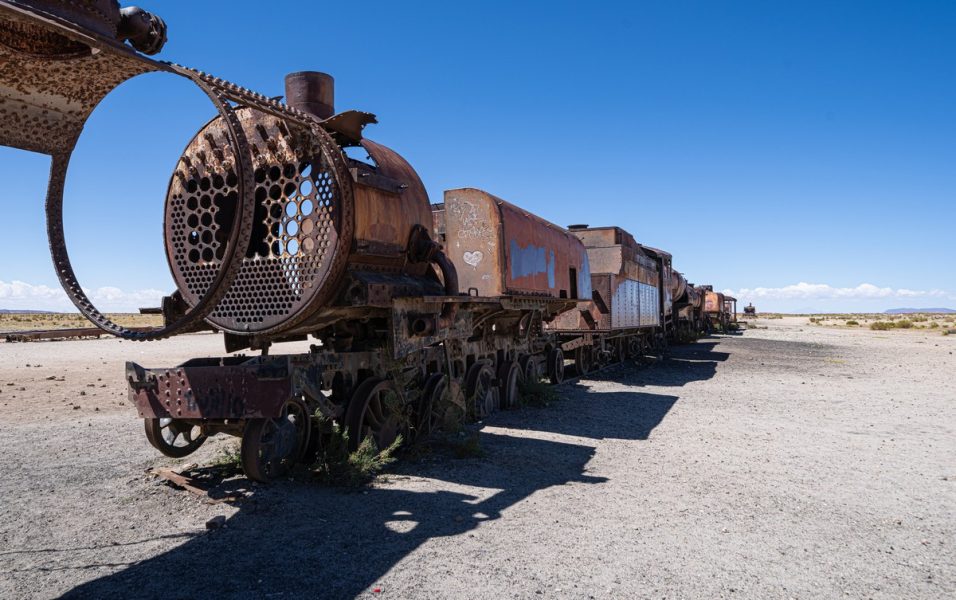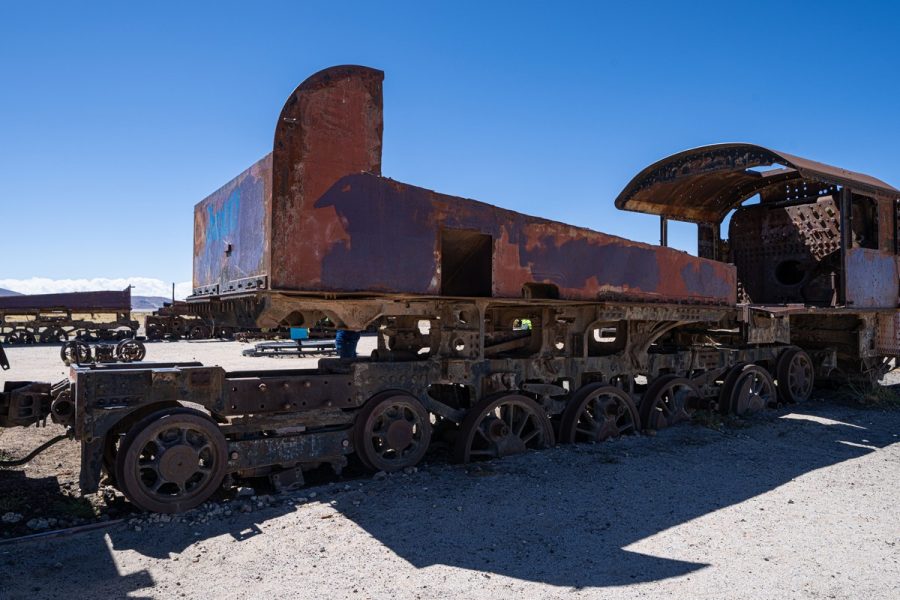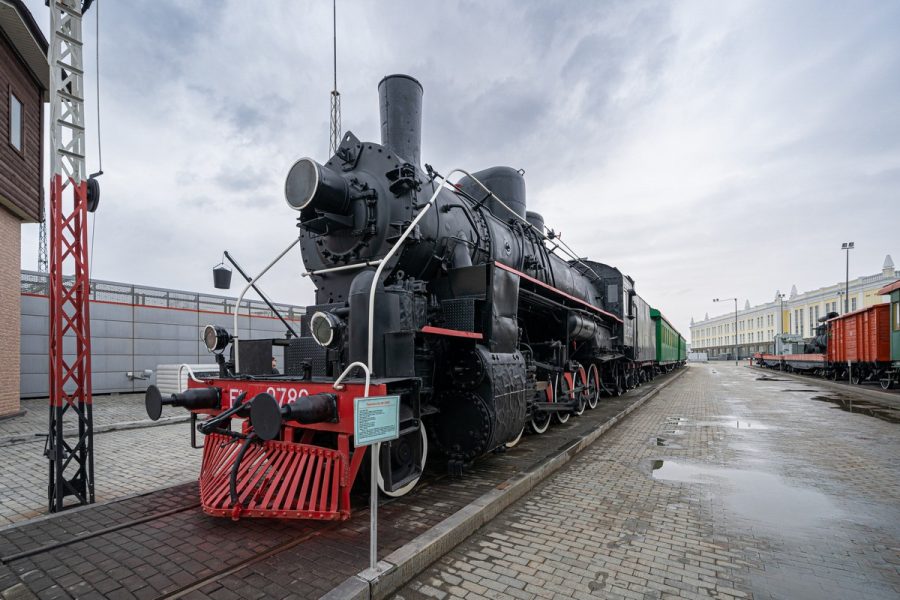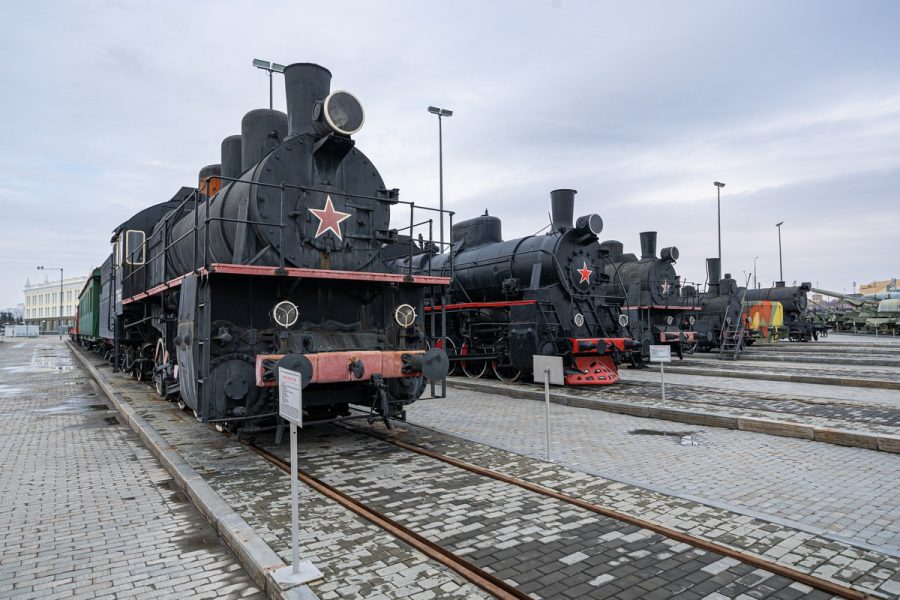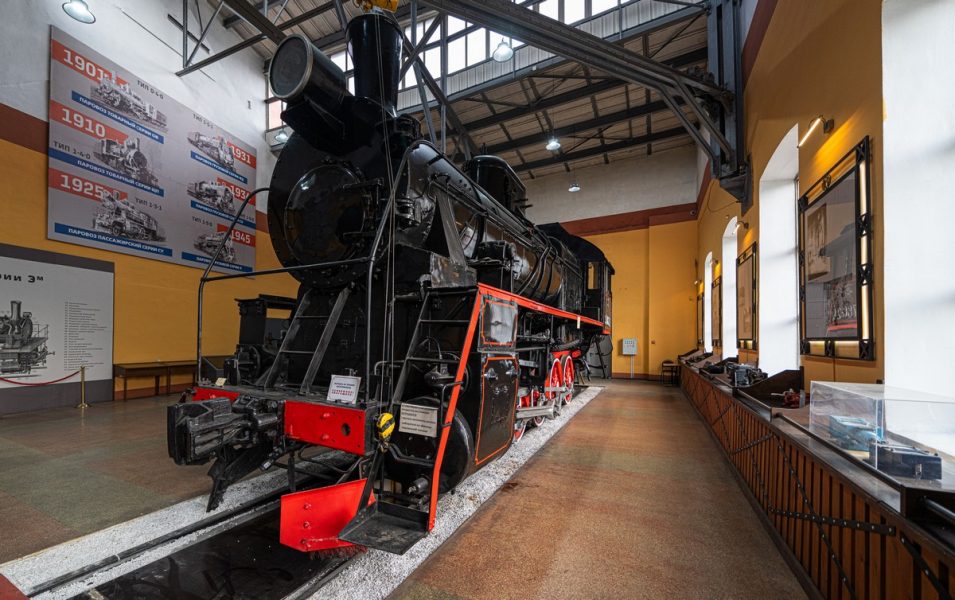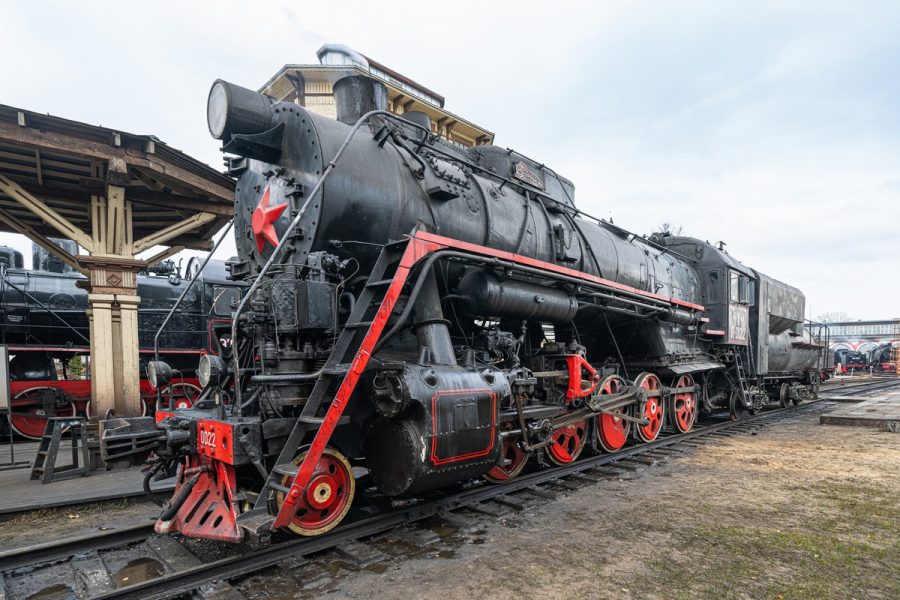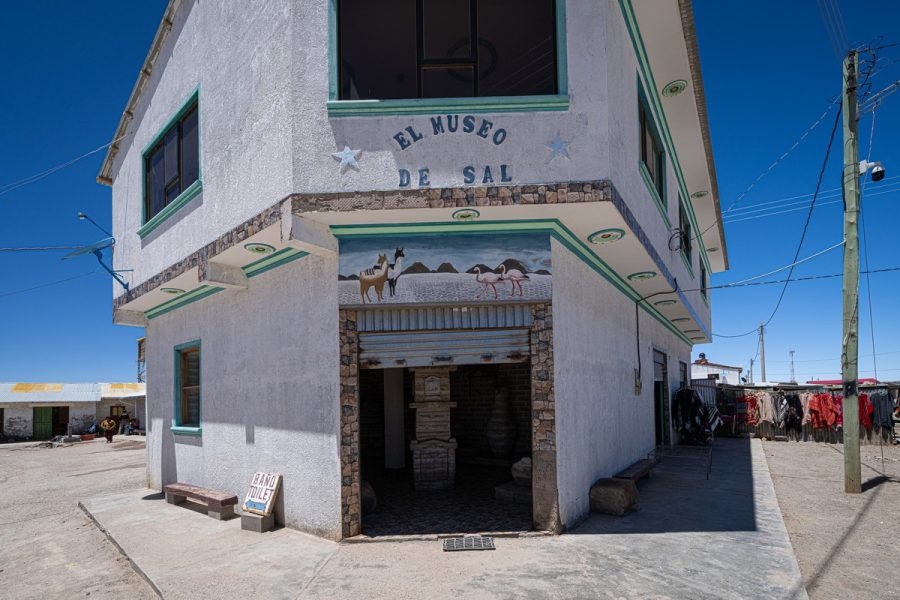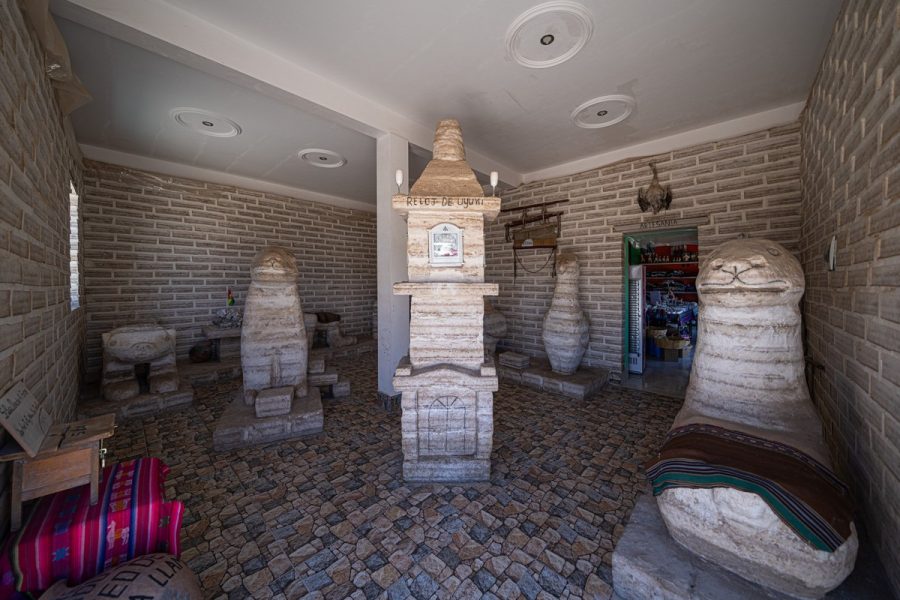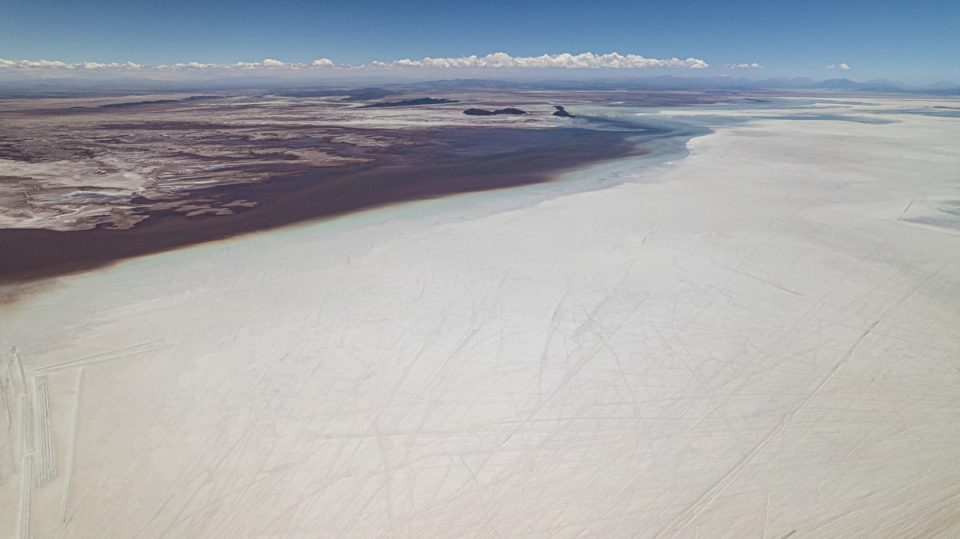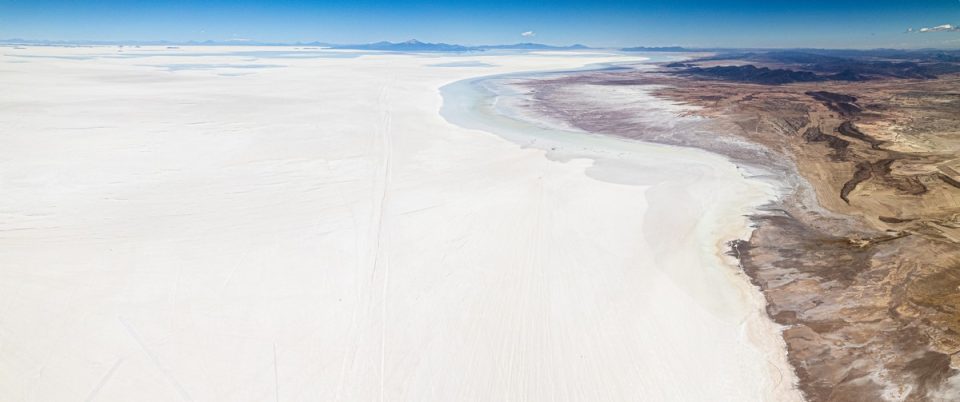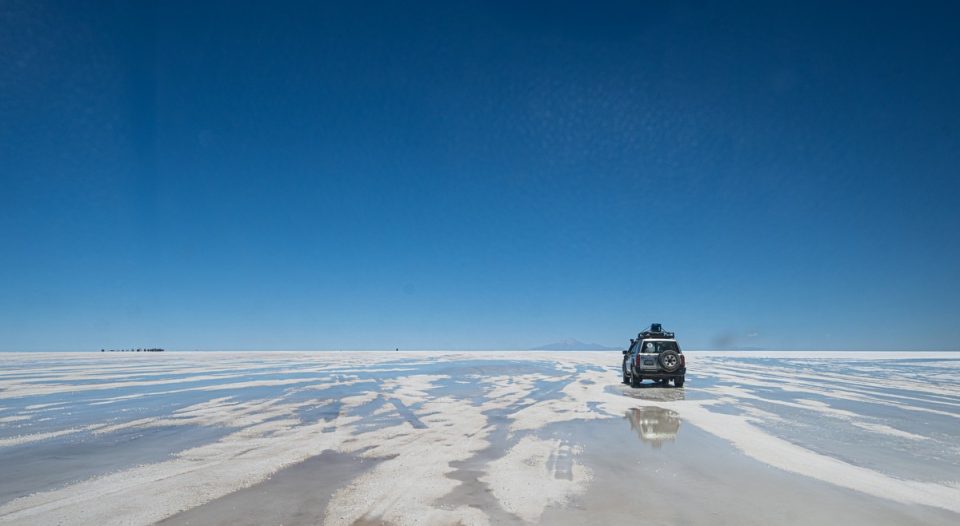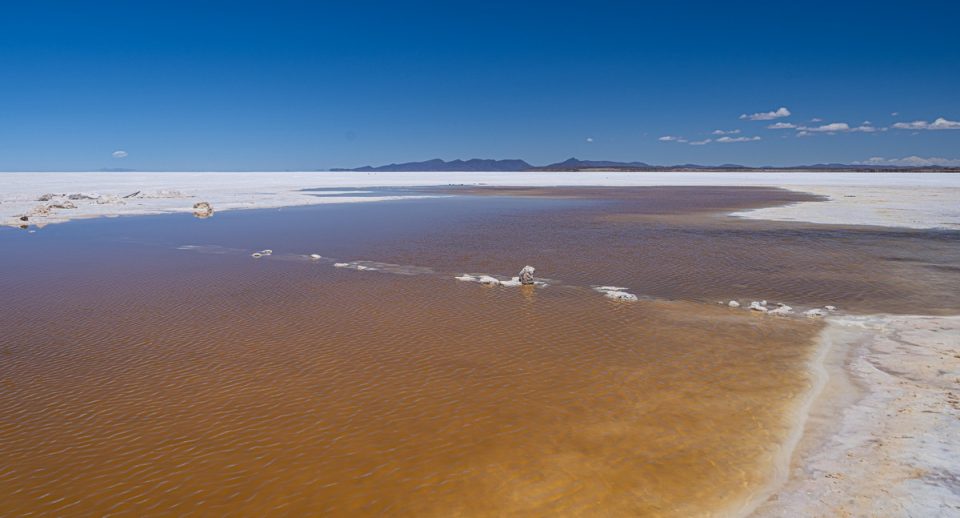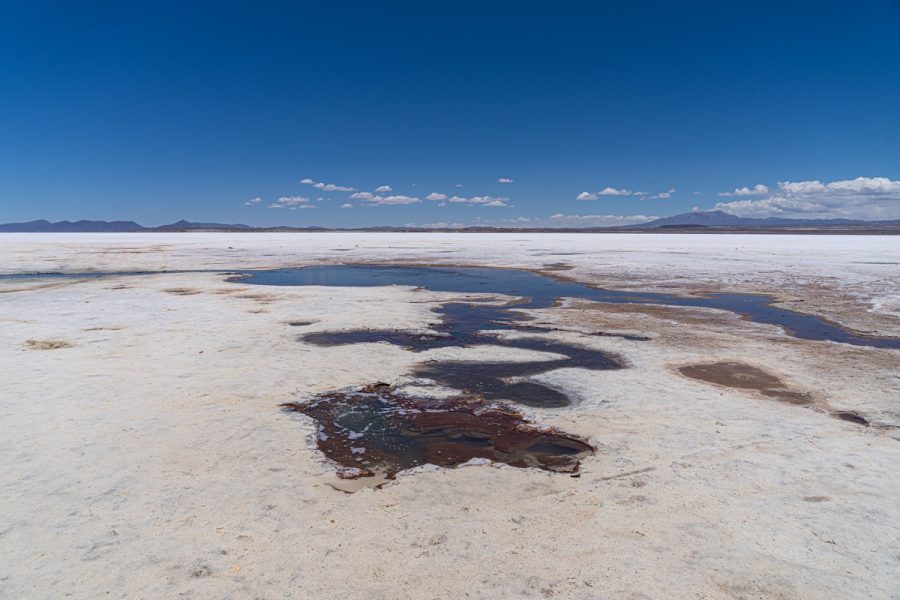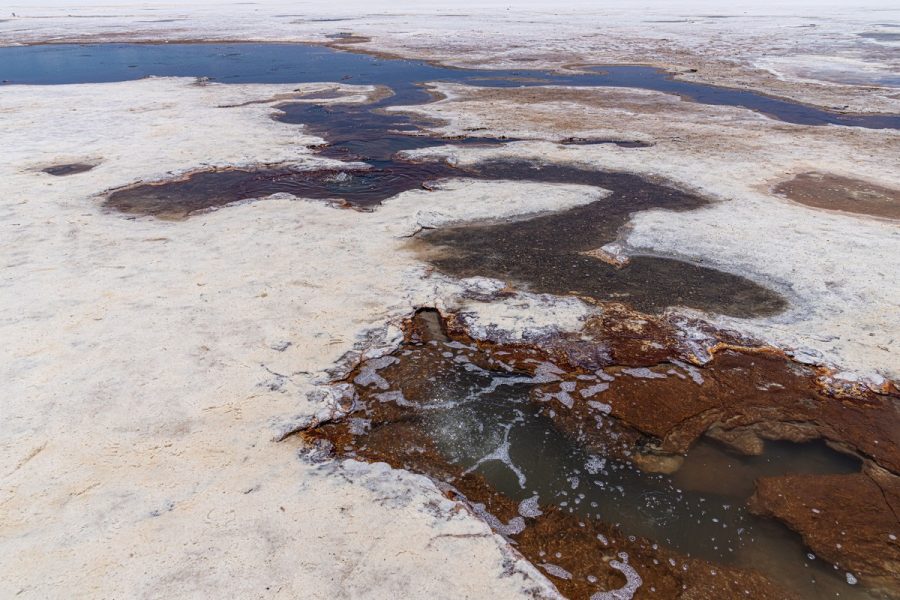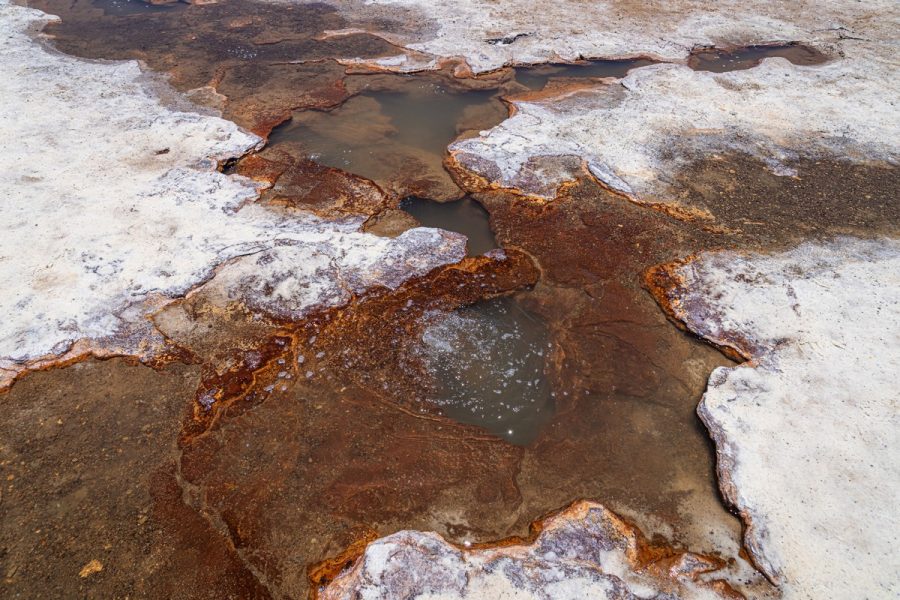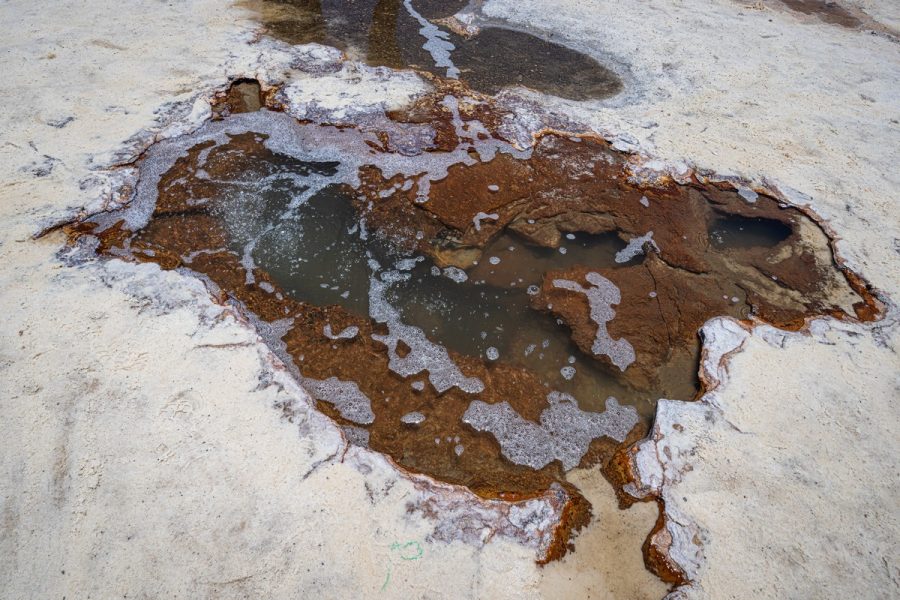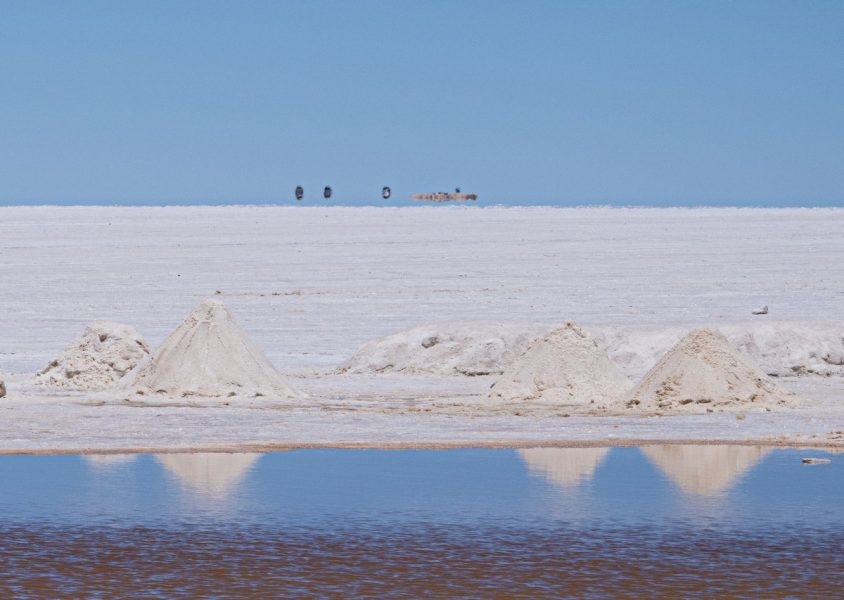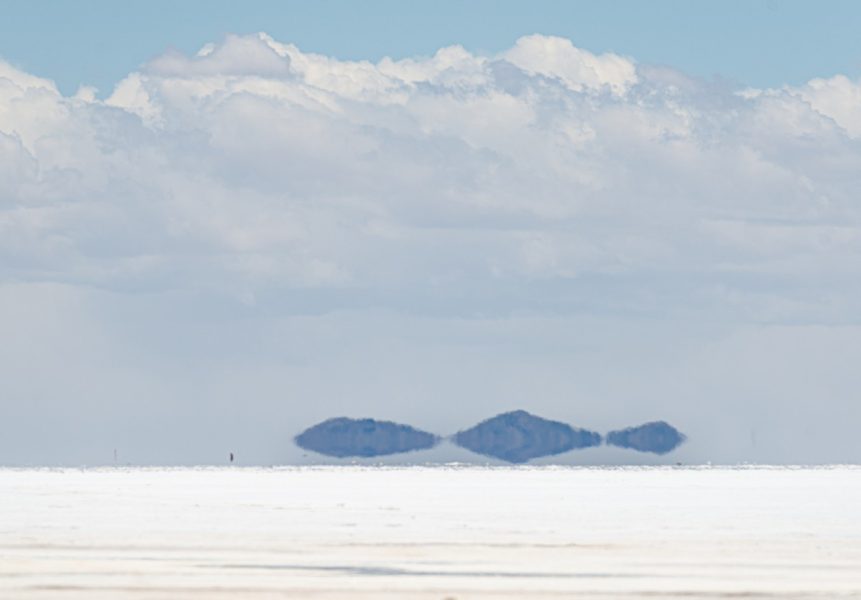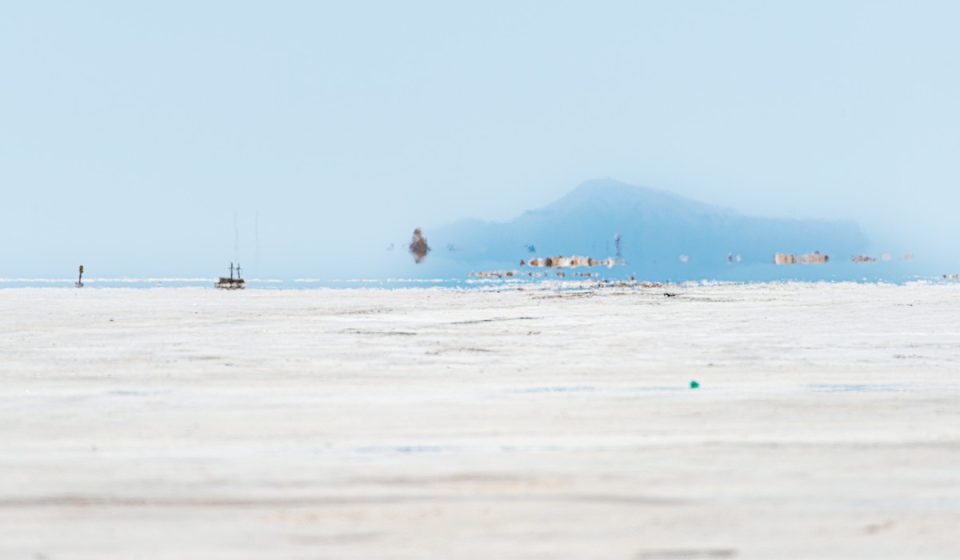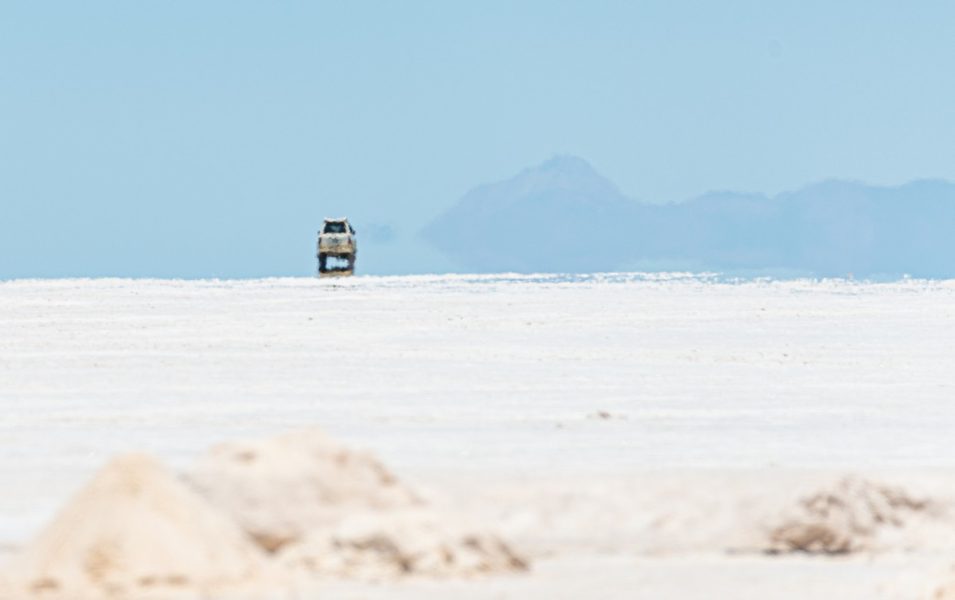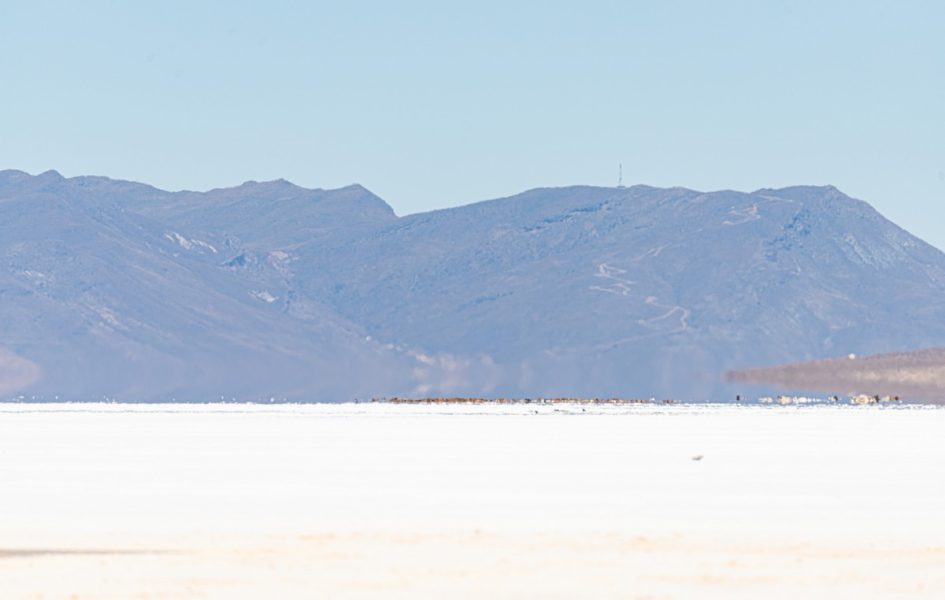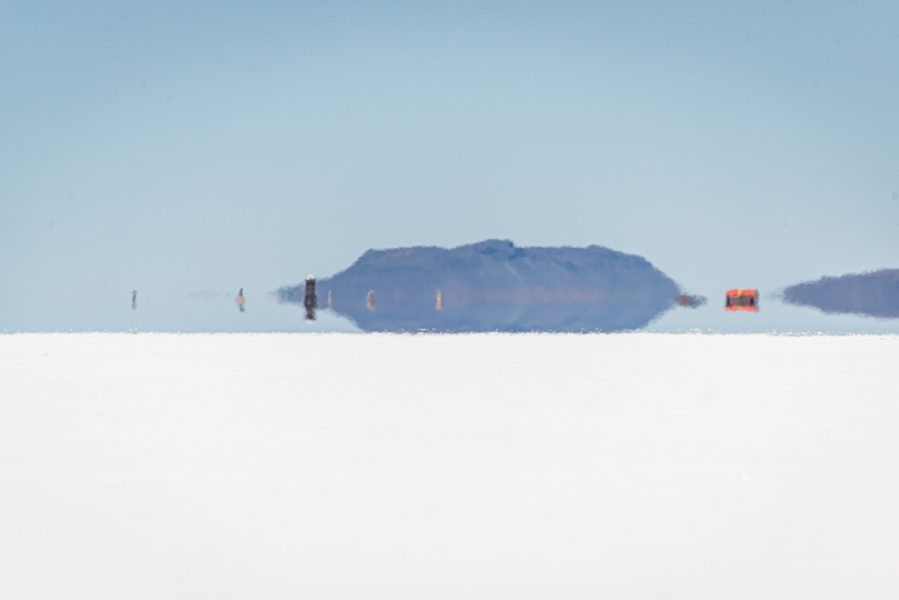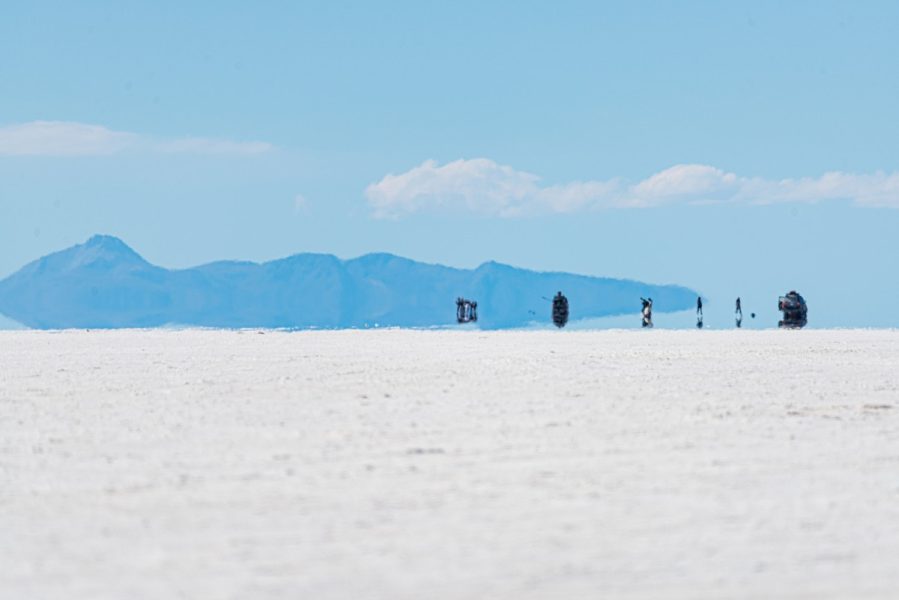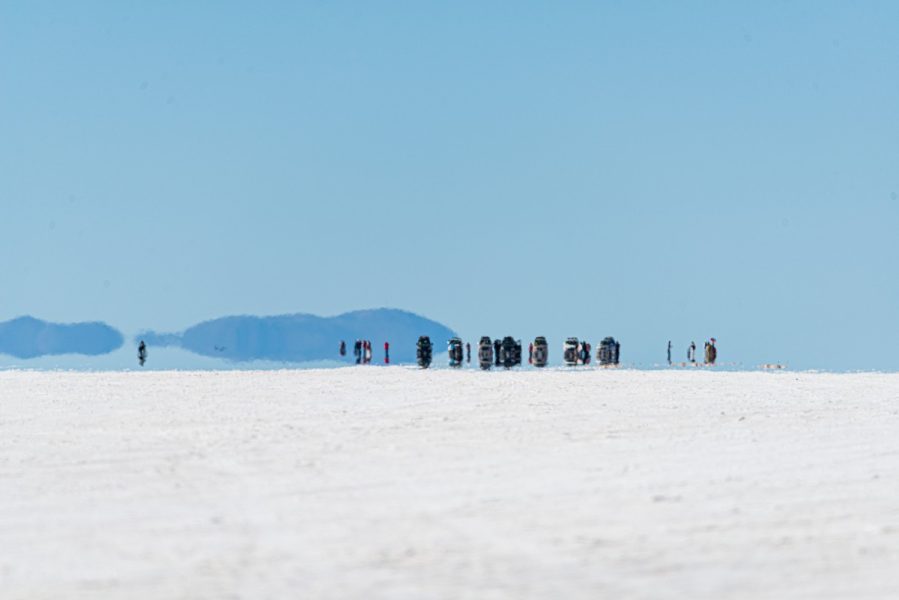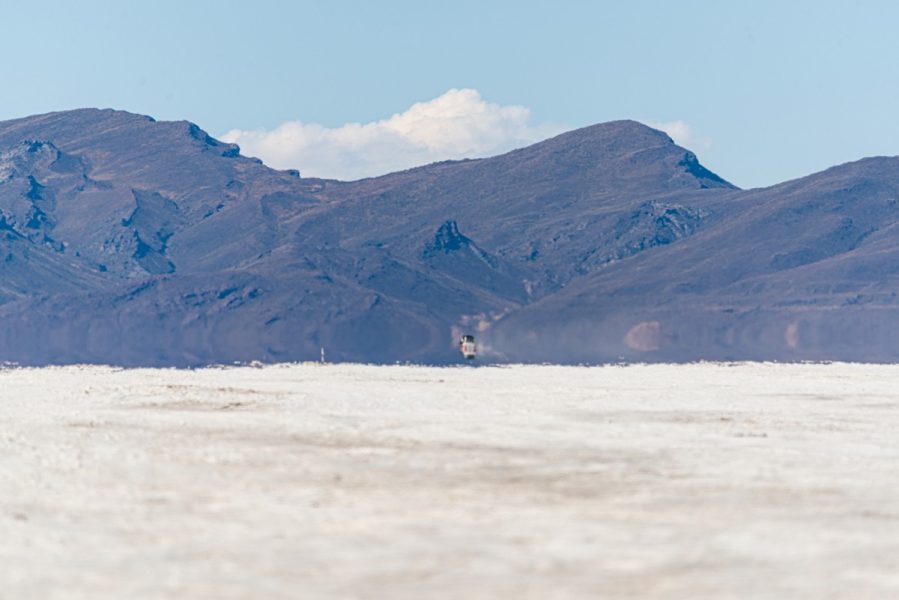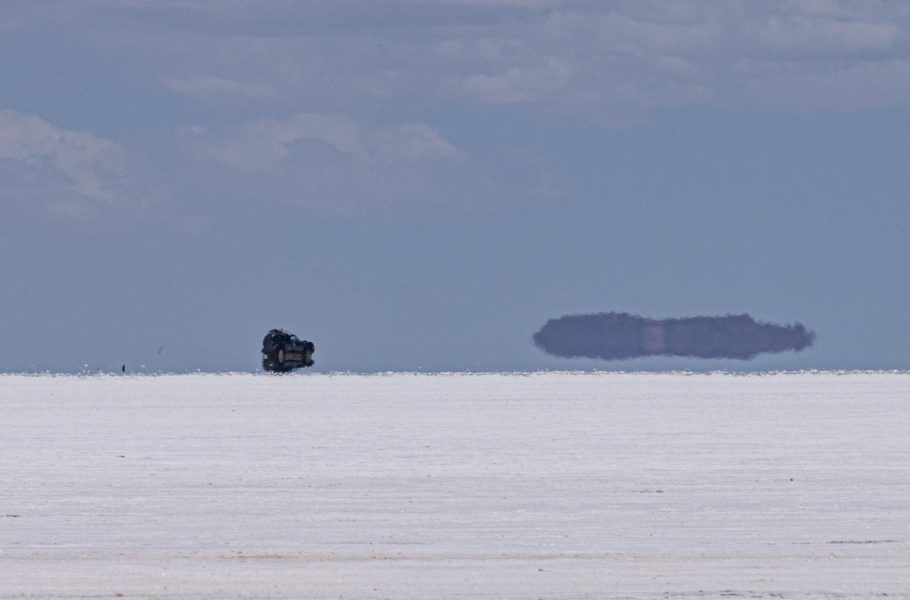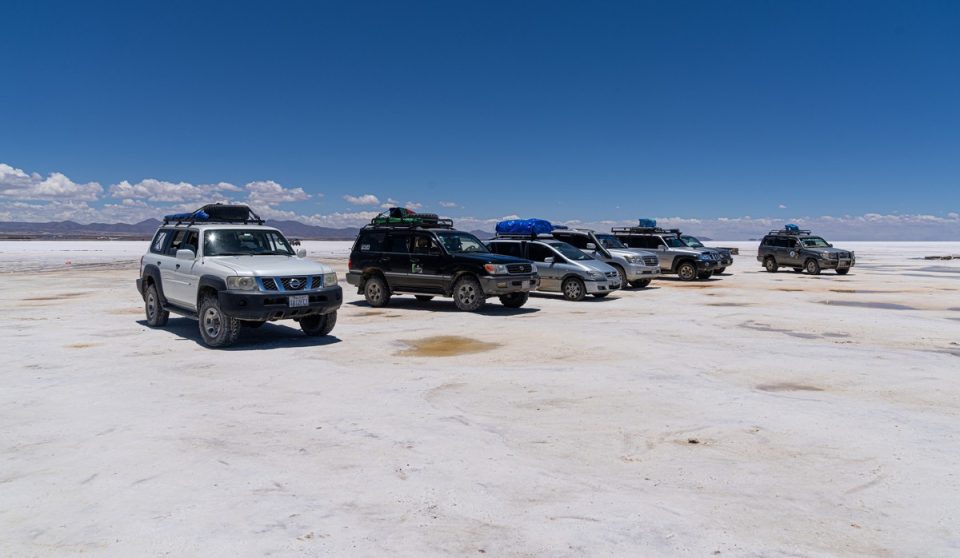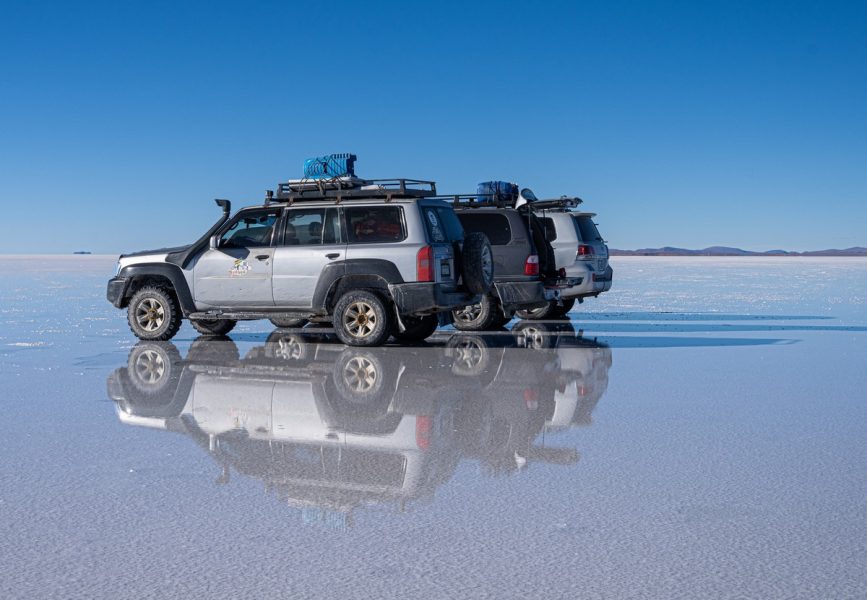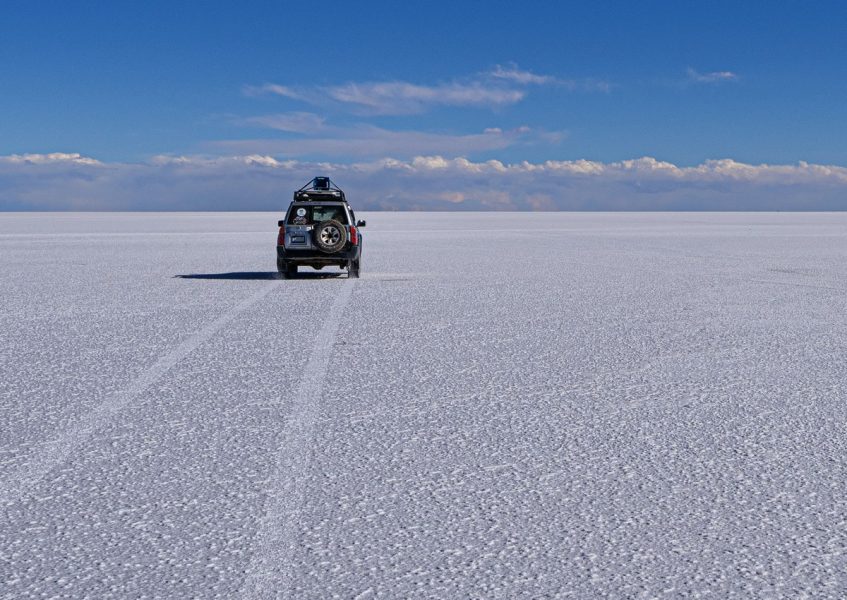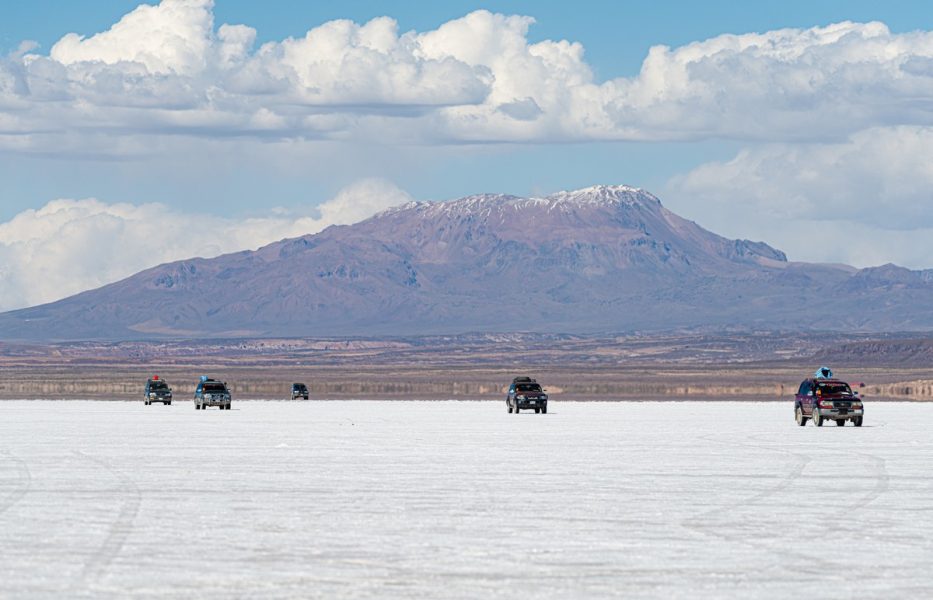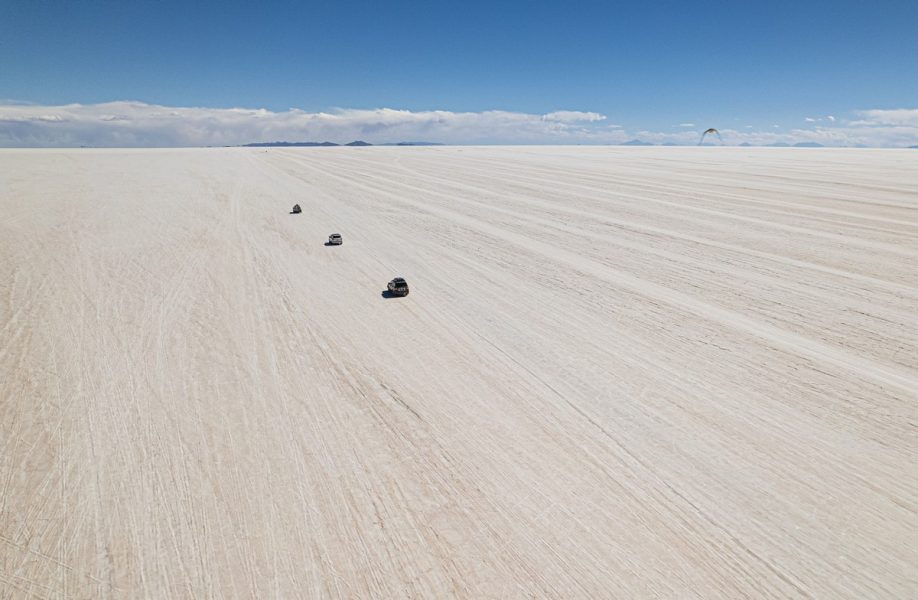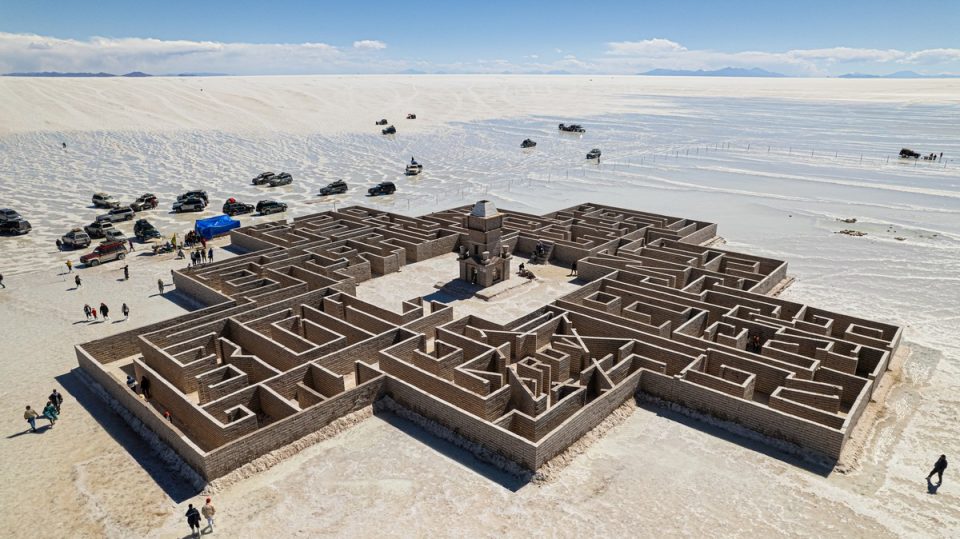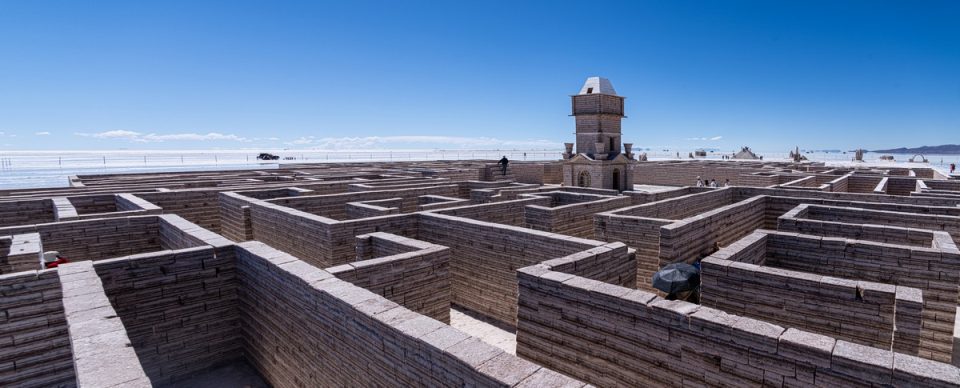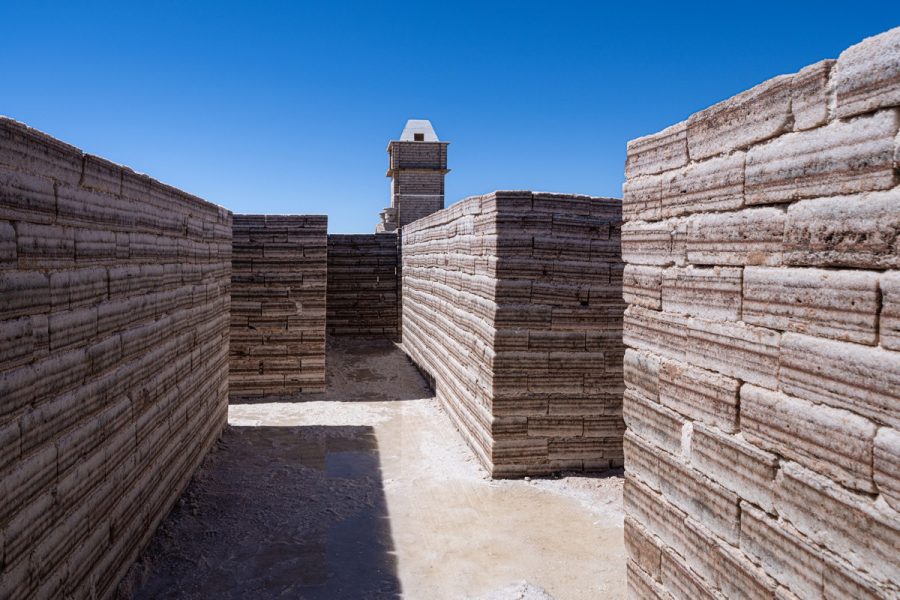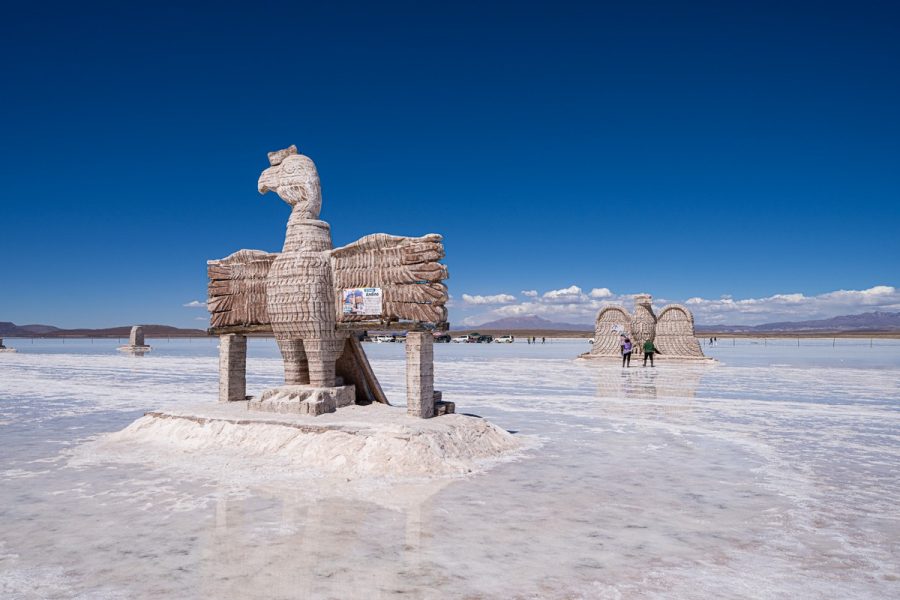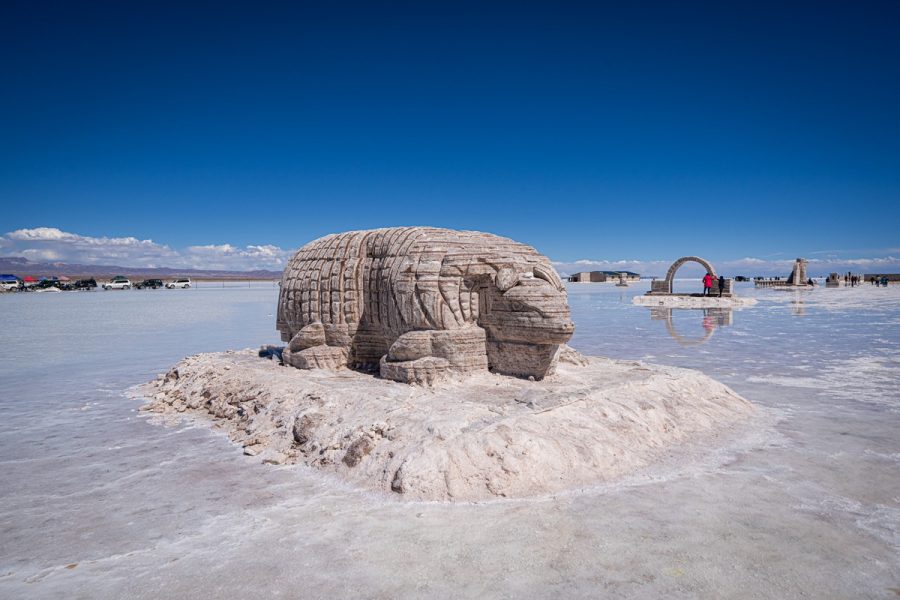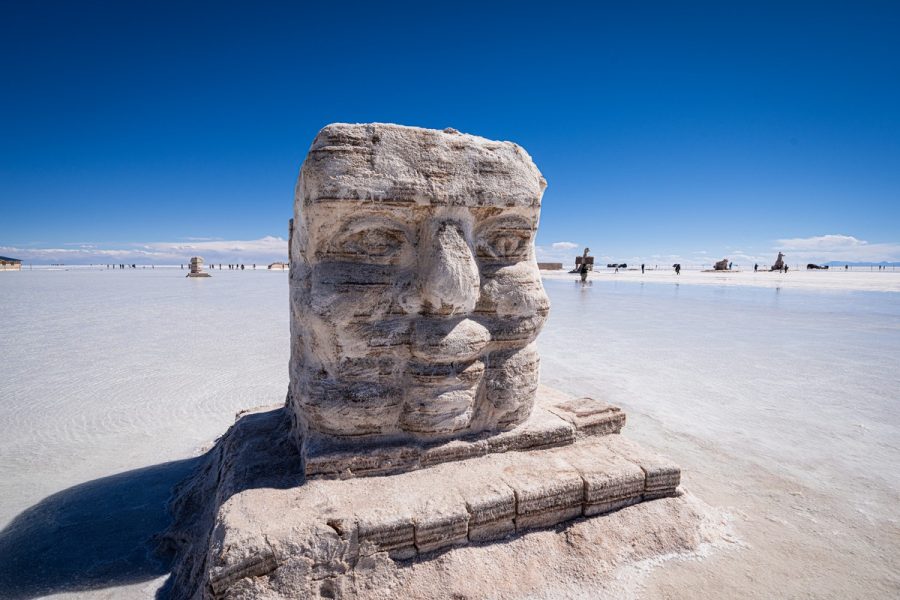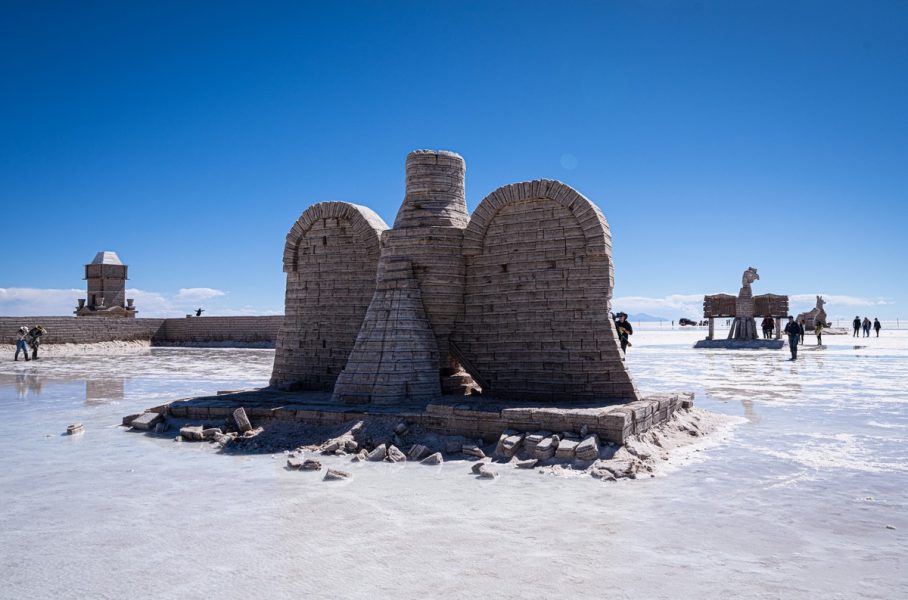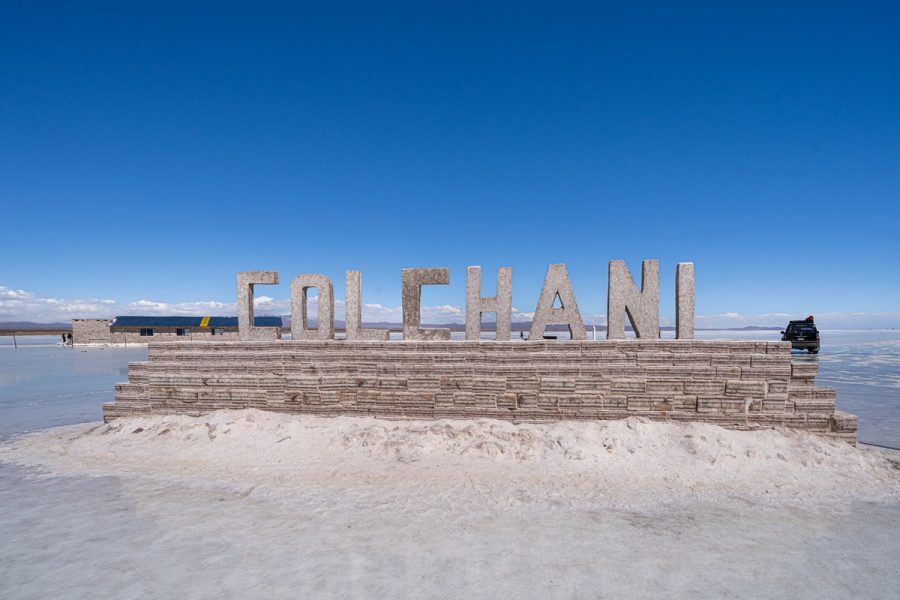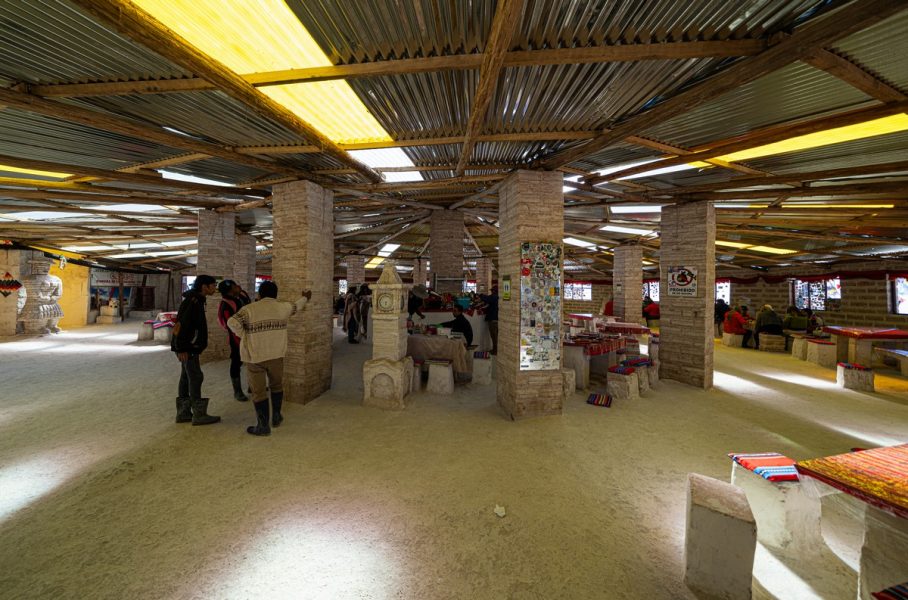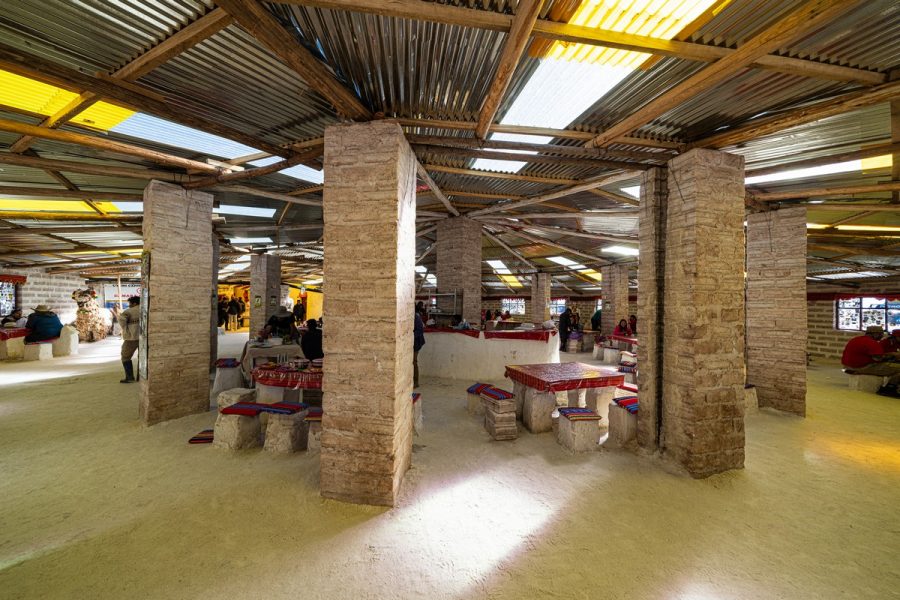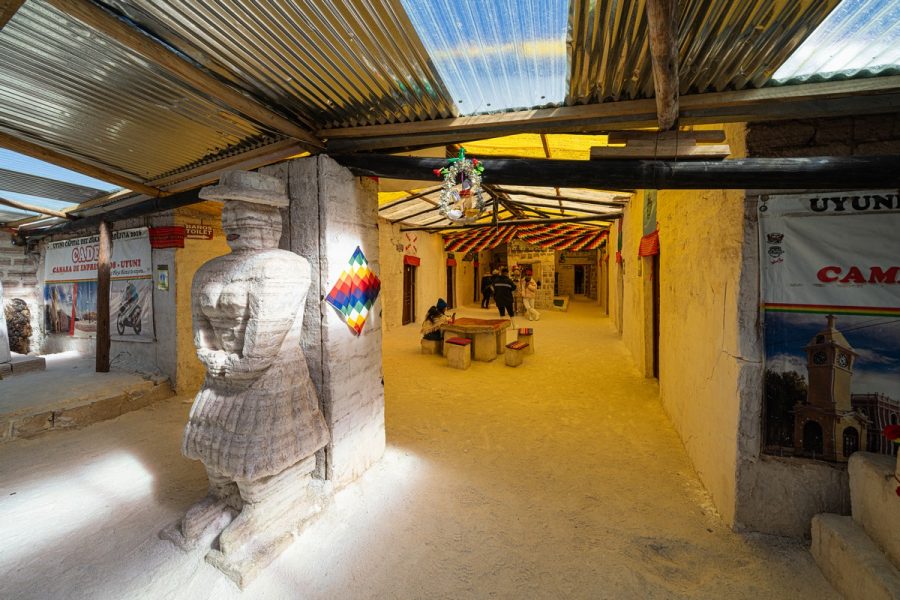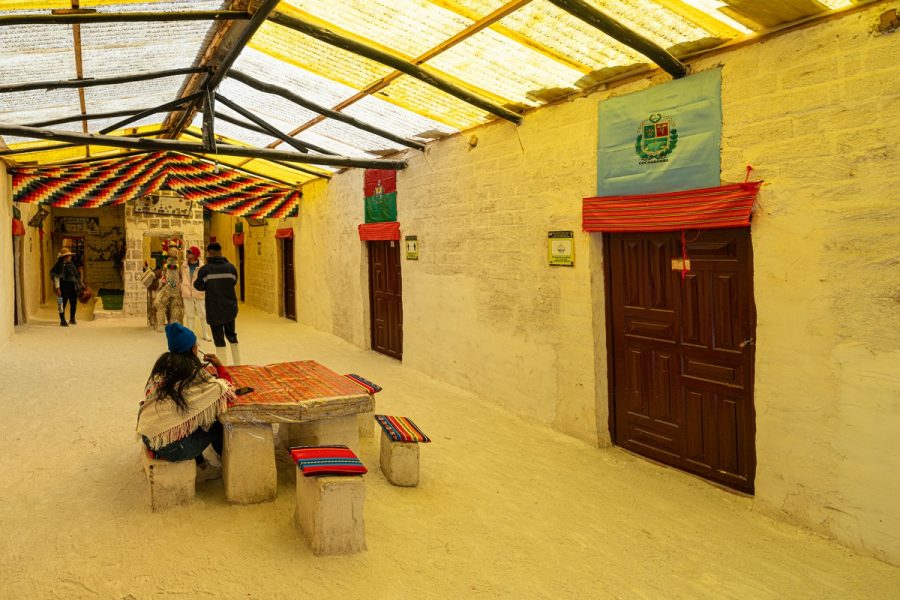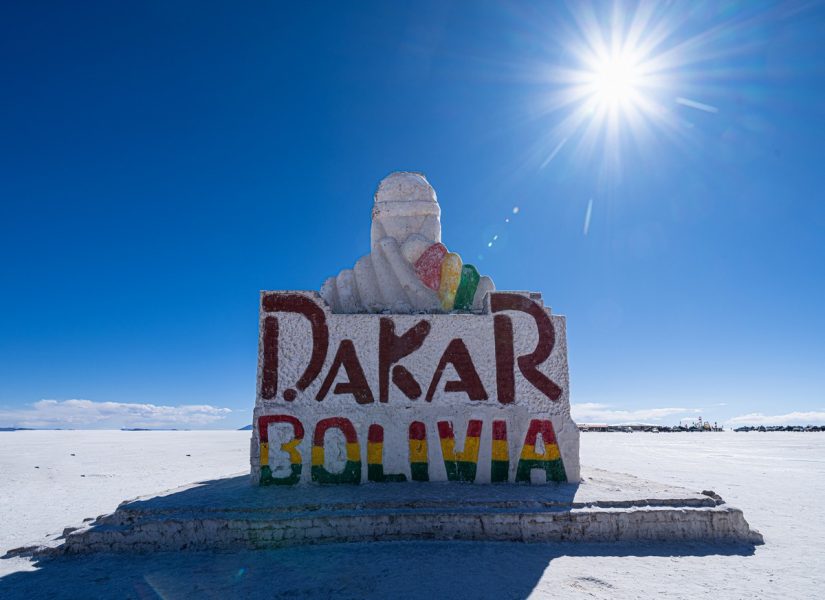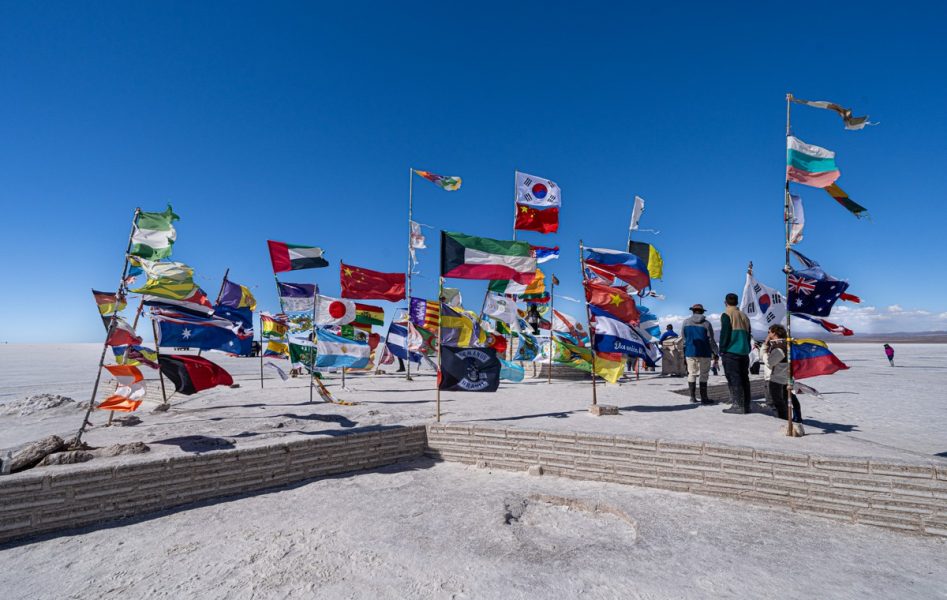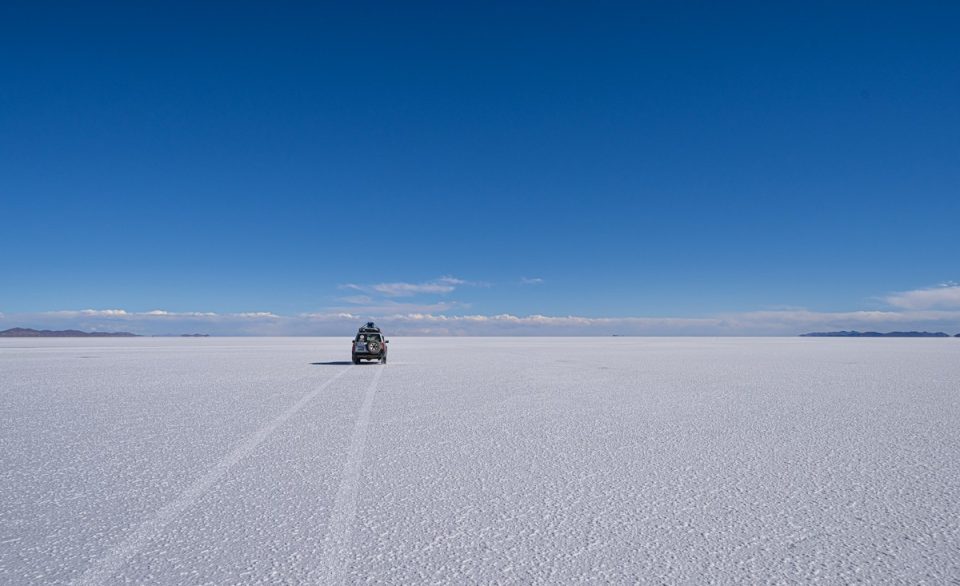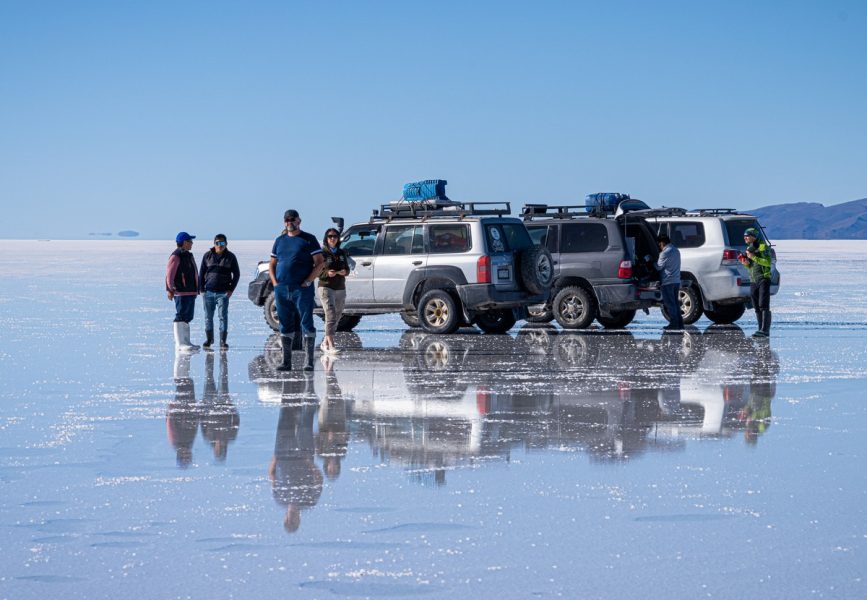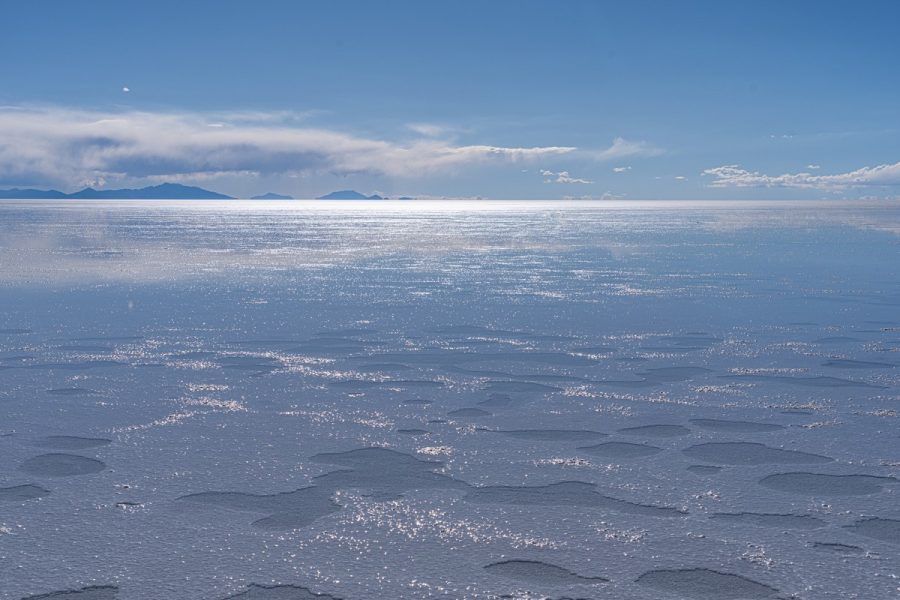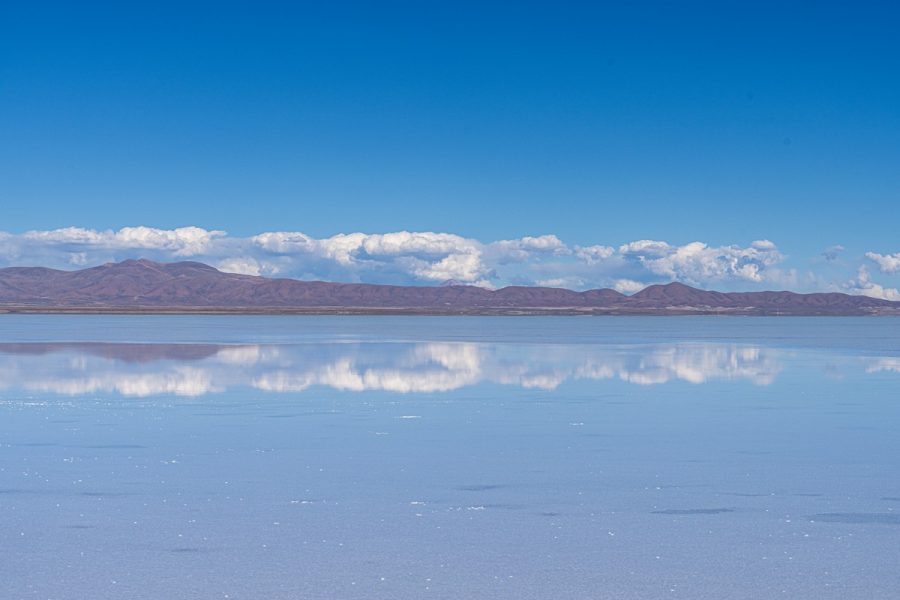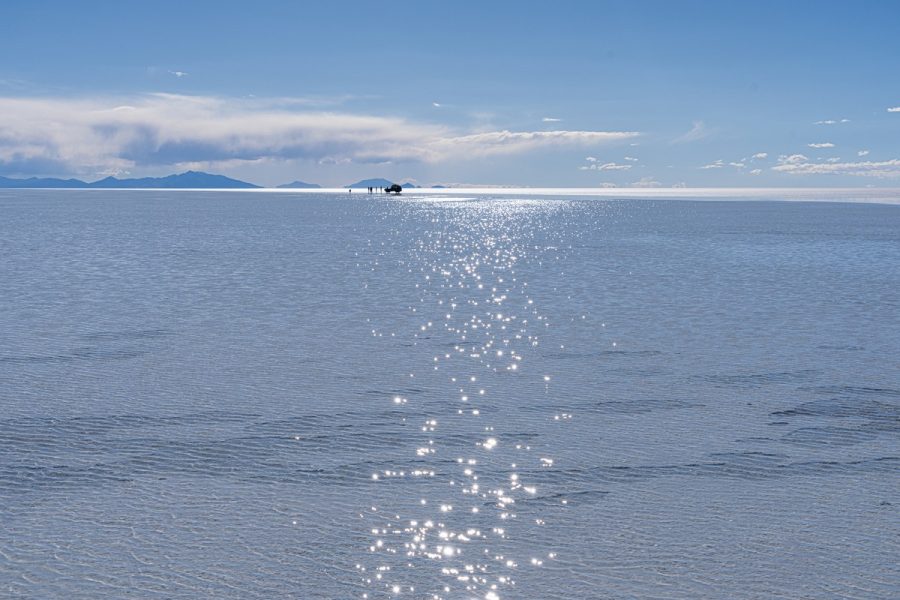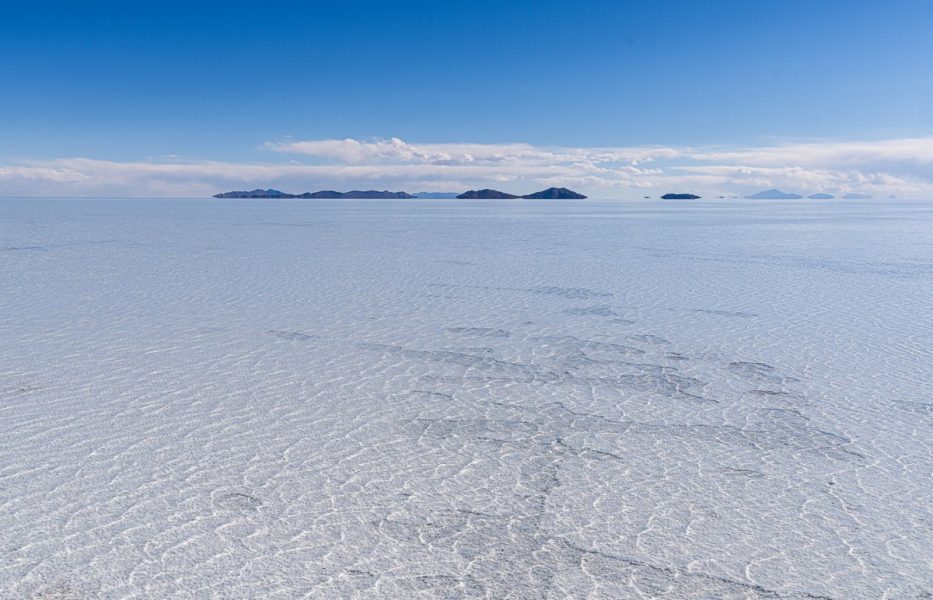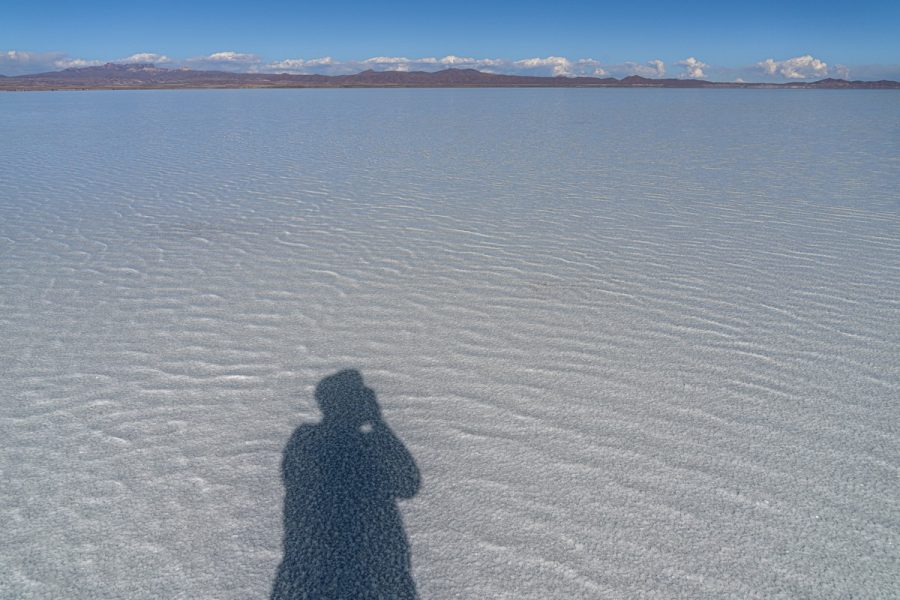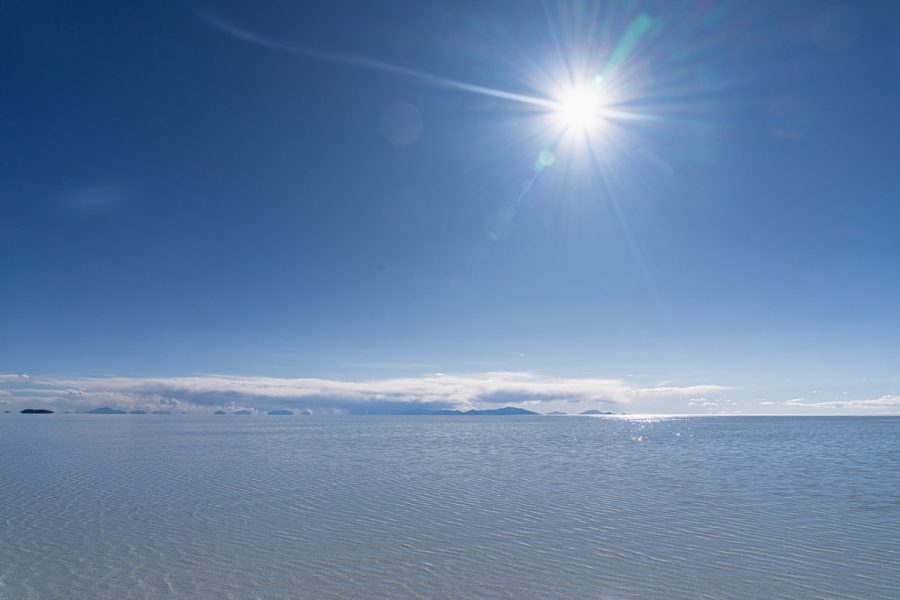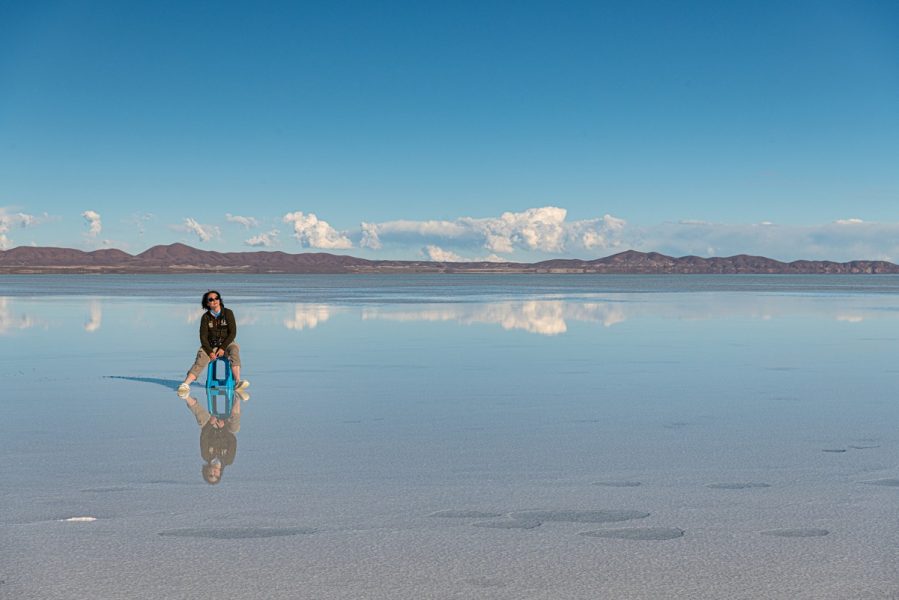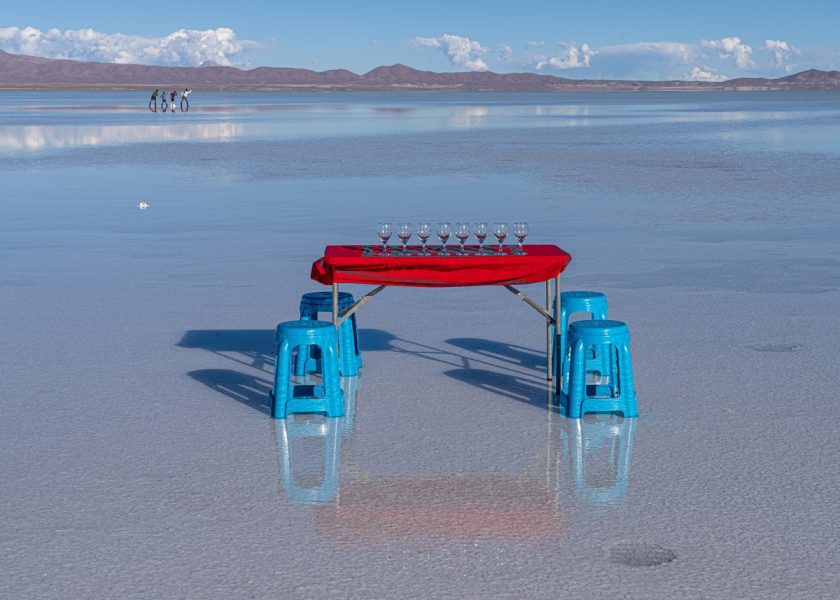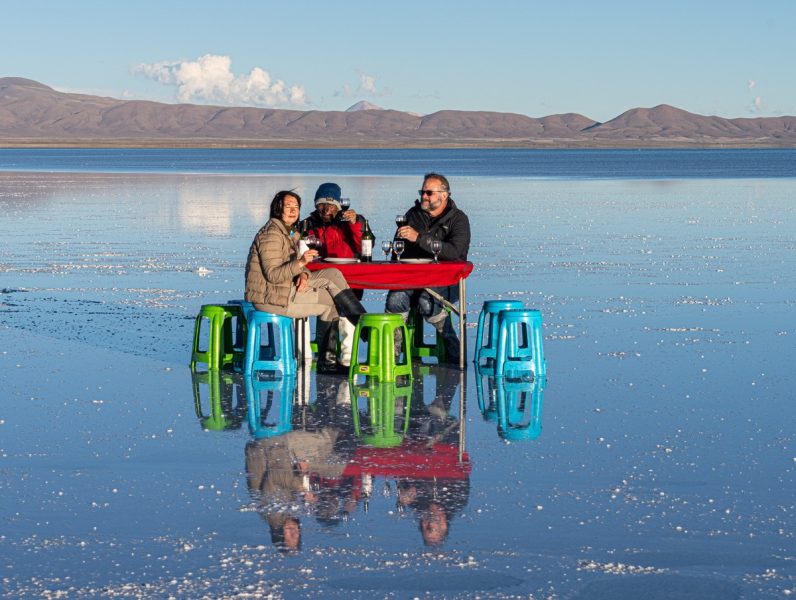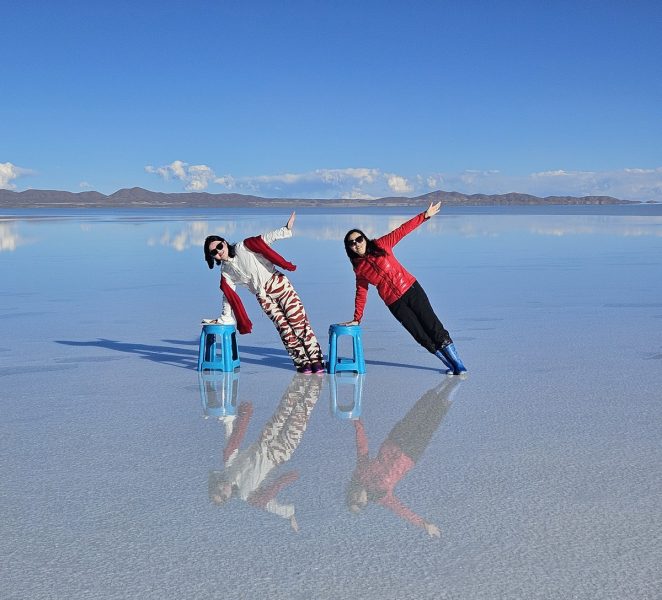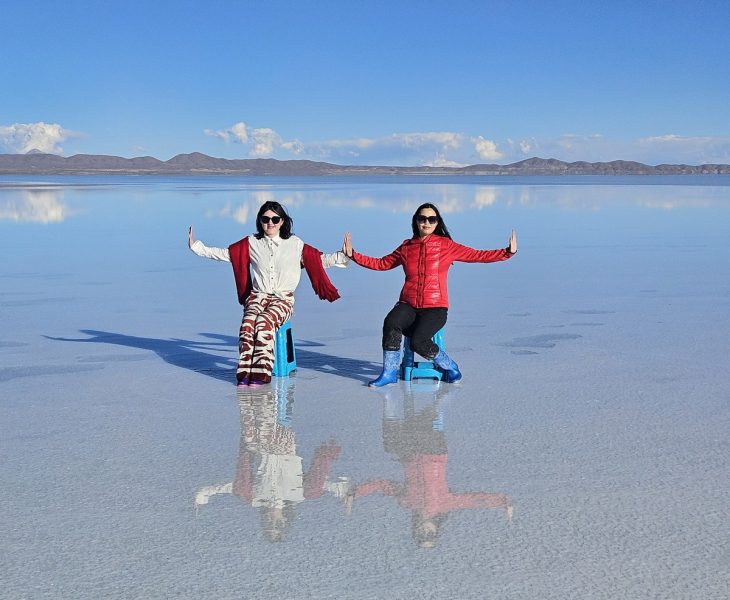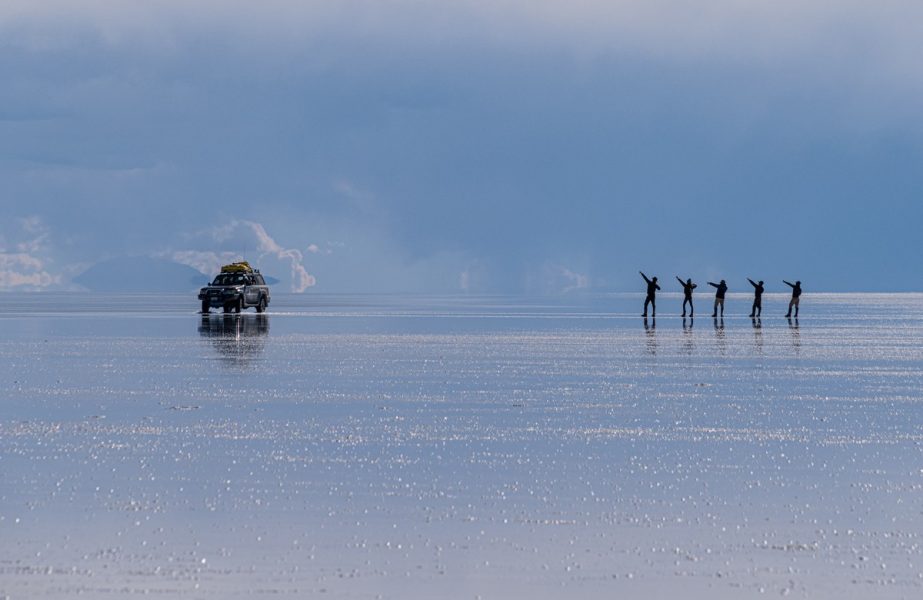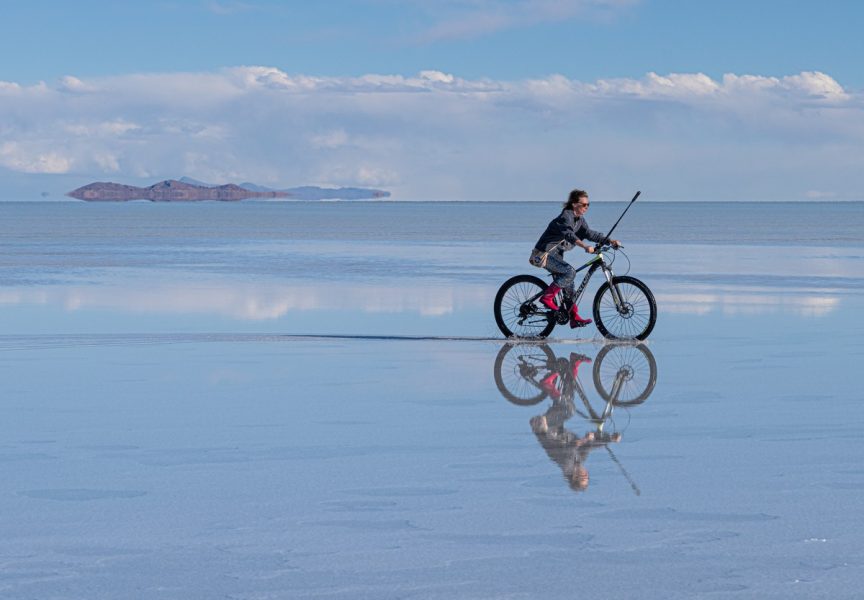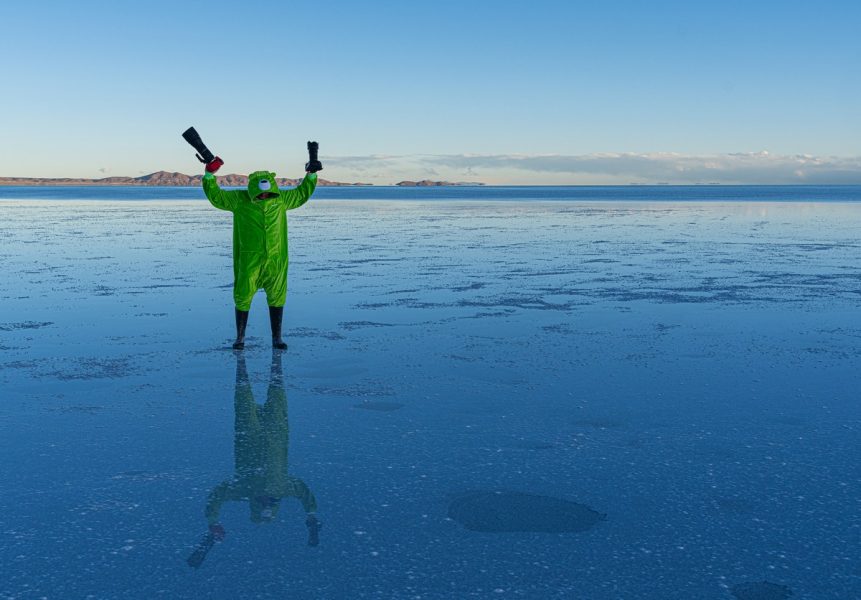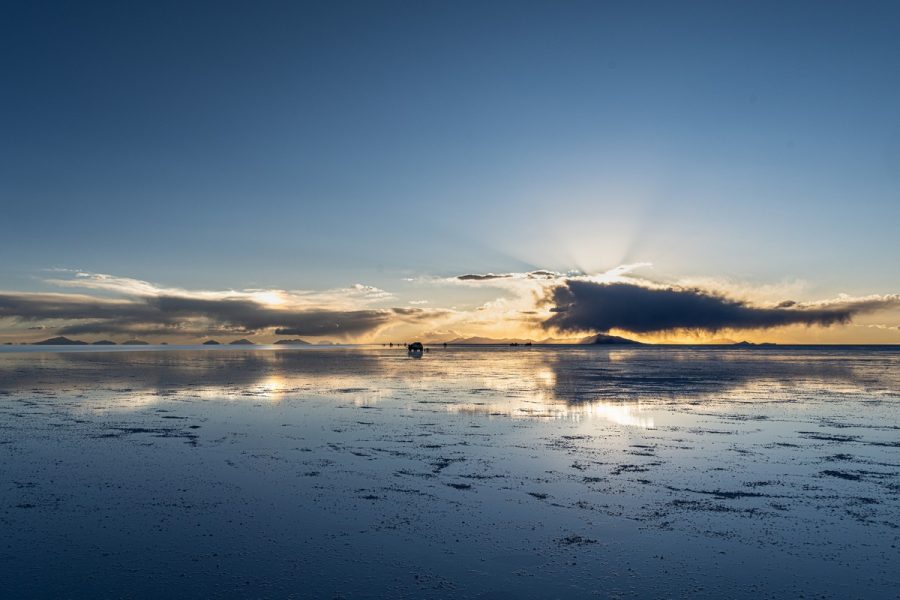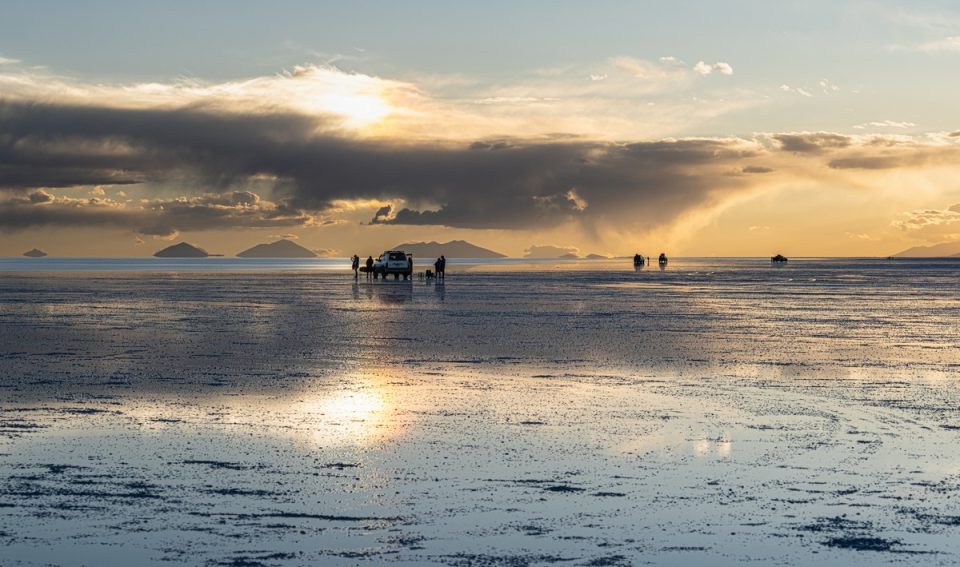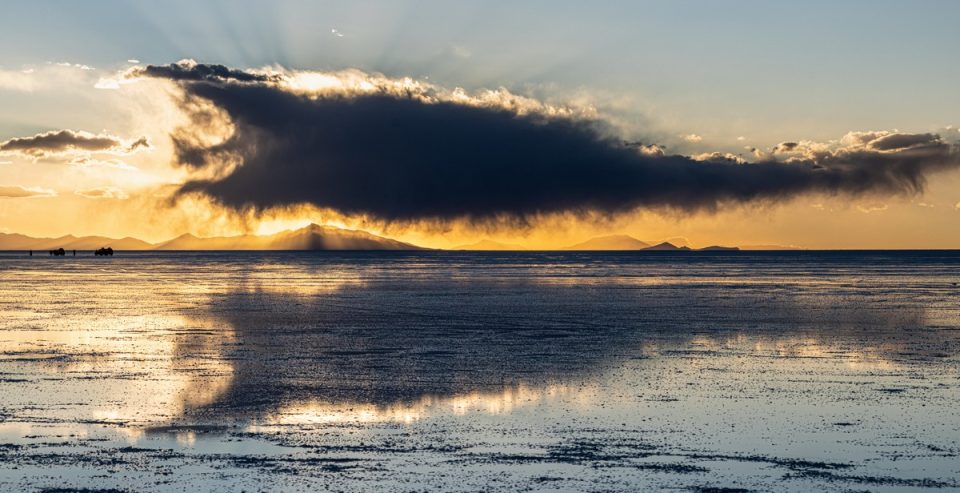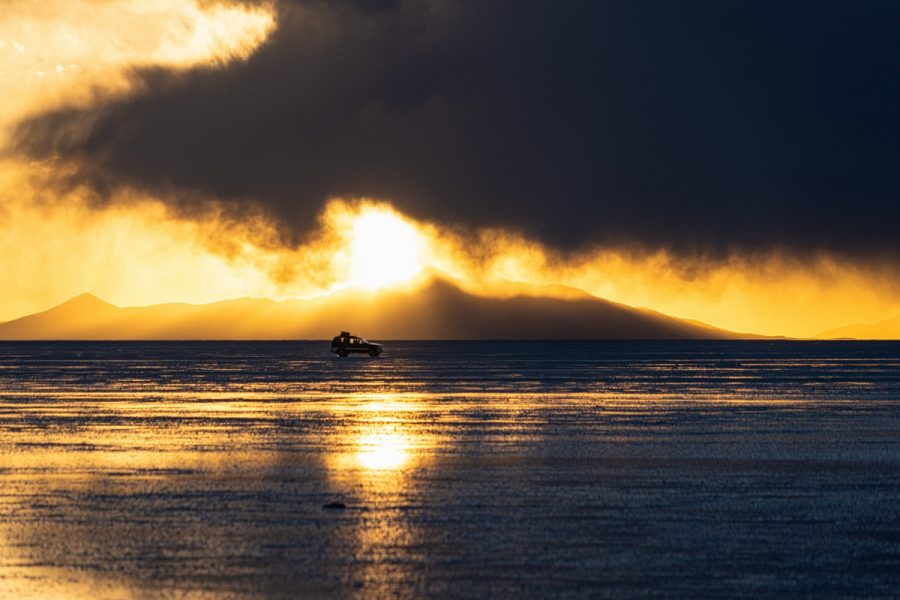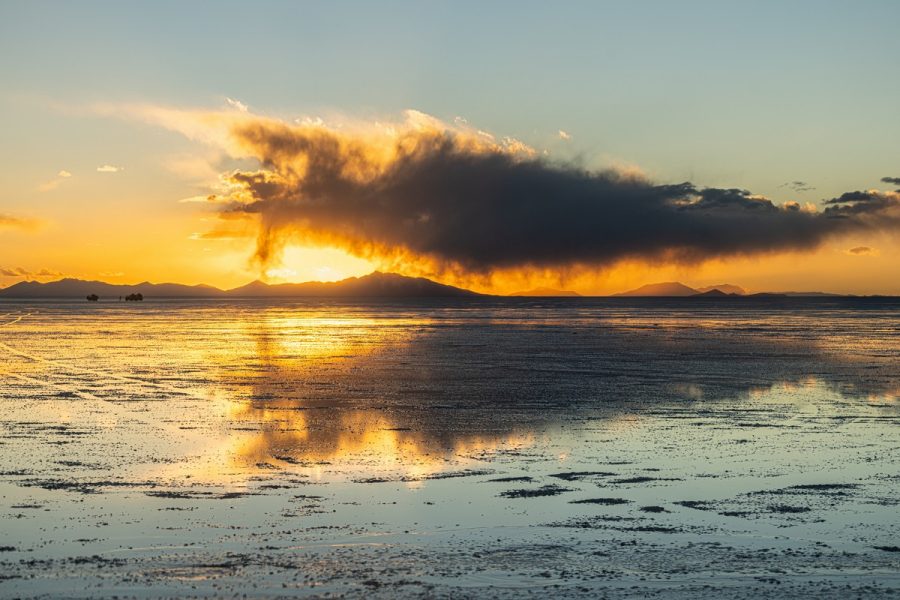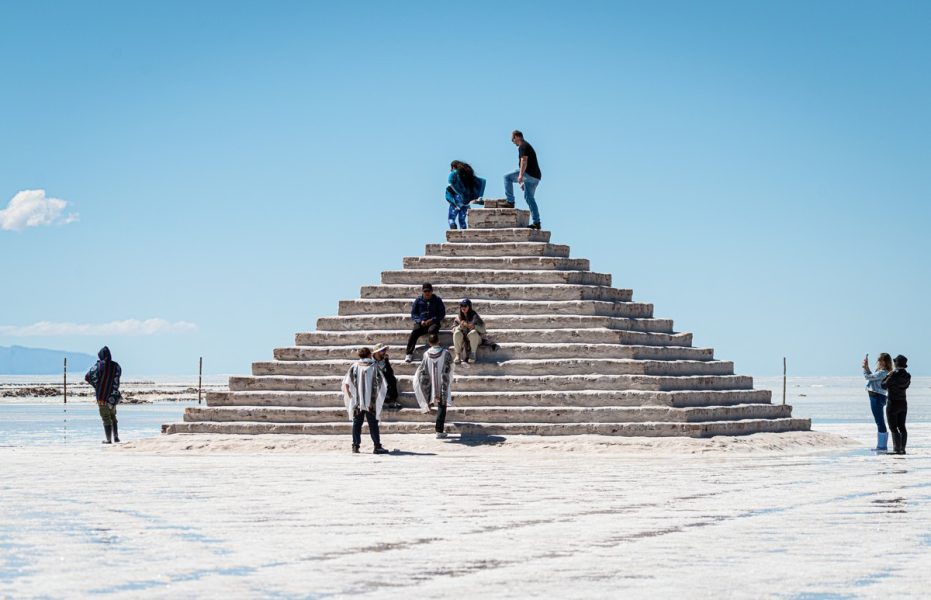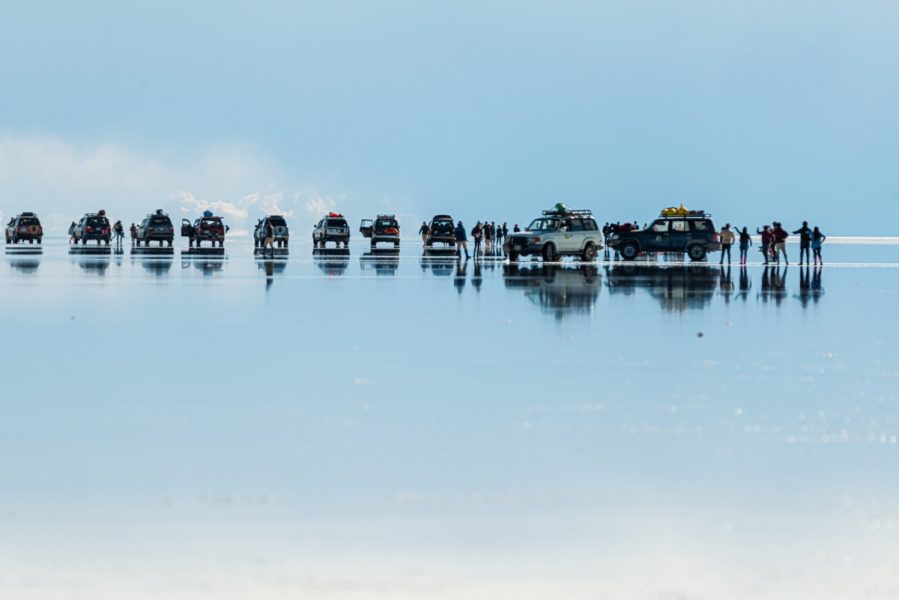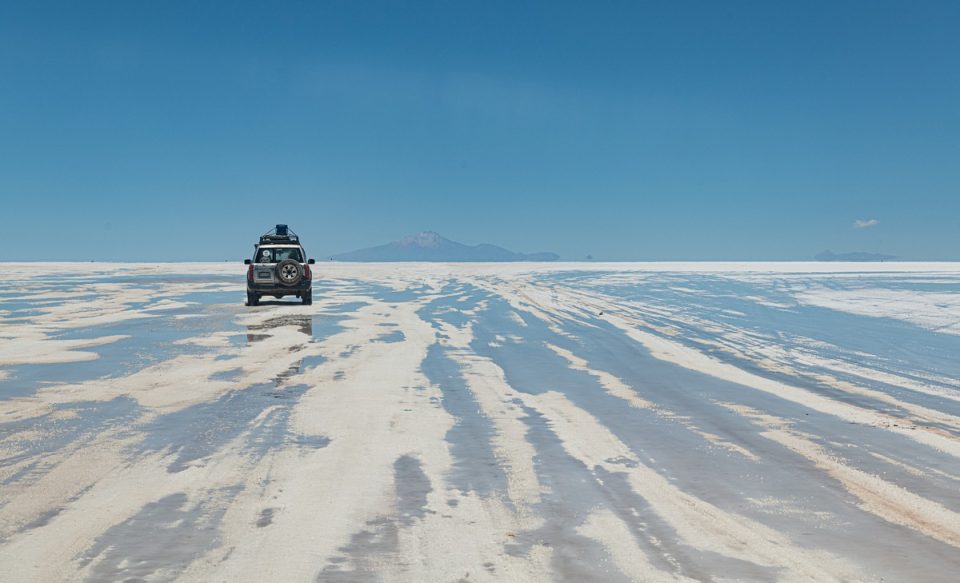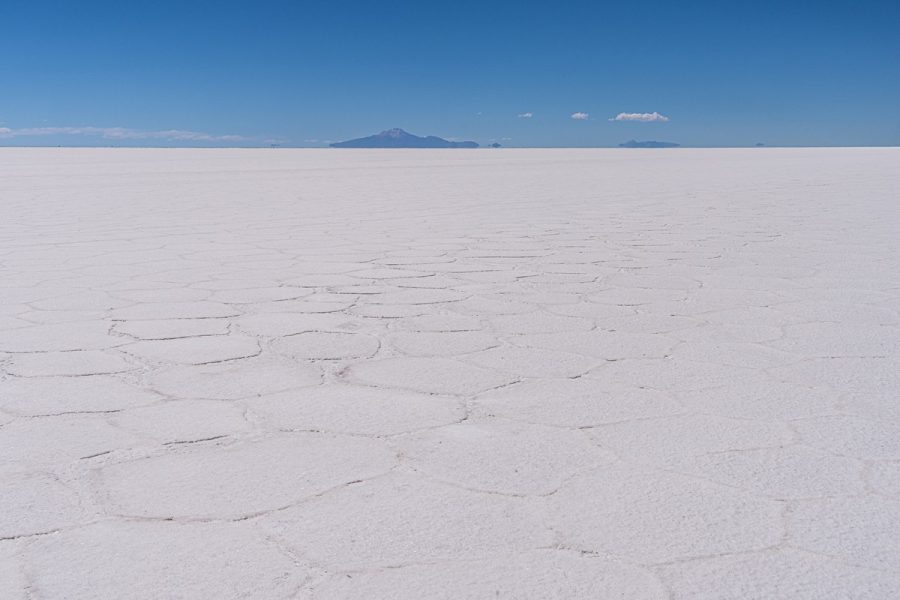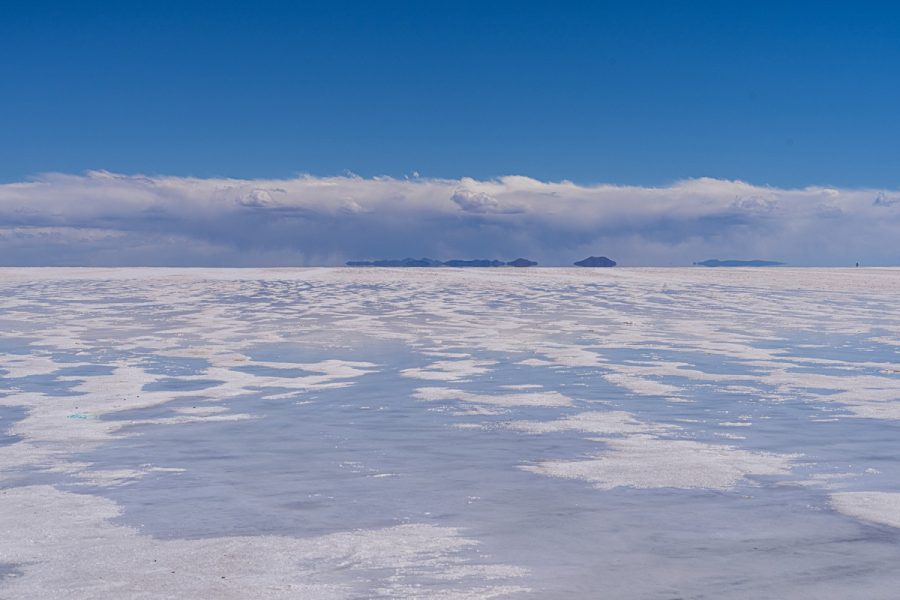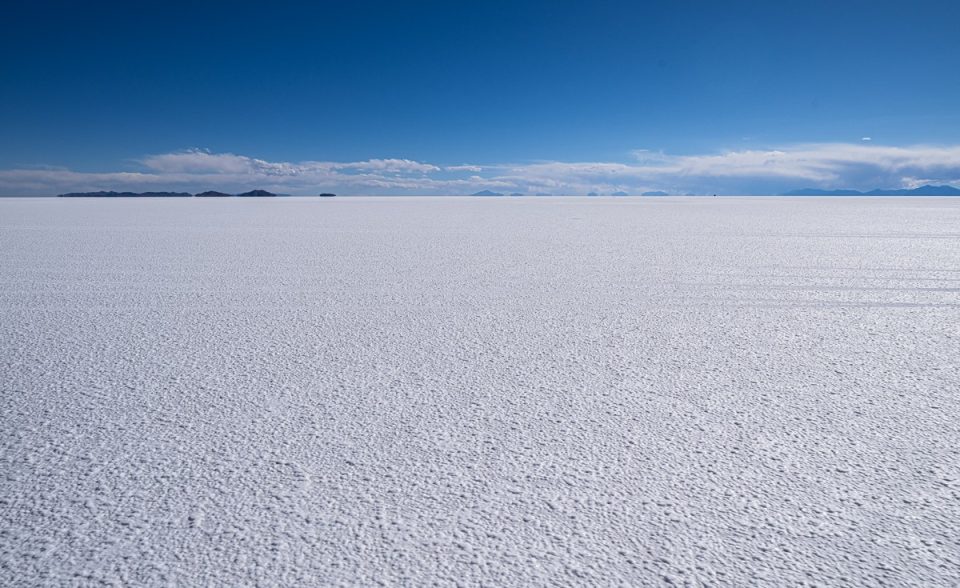April 4, 2025
Bolivia’s Uyuni Salt Flat – don’t forget your wellies and hat!
Fasten your seatbelts – in every sense! We’re flying to an absolutely mind-blowing place – Salar de Uyuni, or the Uyuni Salt Flat in Bolivia!
The distance from La Paz to Uyuni by car is only 540km, but Google Maps claims the journey takes a whopping eight hours – for Bolivian roads are far from speedy highways. That’s why most tourists opt for a flight. Plus the view from the plane window is stunning; just be sure to sit on the right side.
Just after take-off you get a great view of El Alto (whose airport is at a dizzying altitude of 4061 meters!):
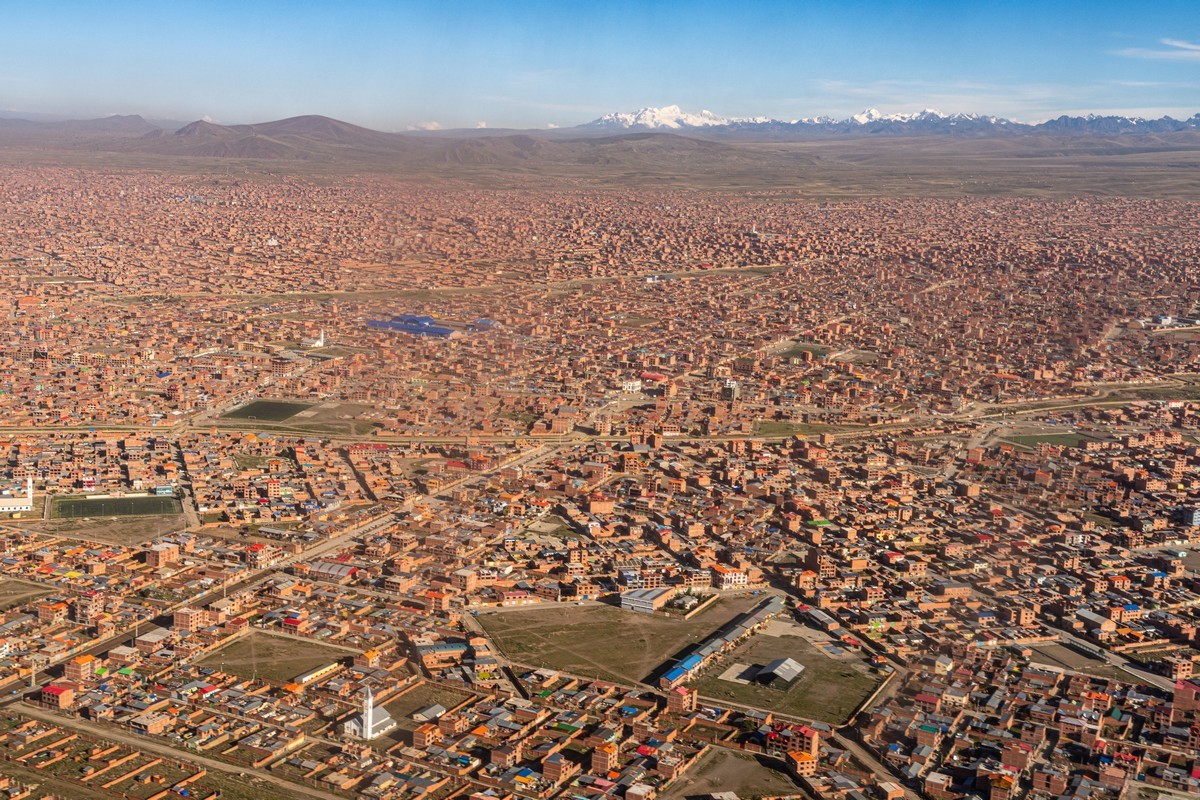
Then come colorful desert landscapes with volcanoes on the horizon:
And here it is – the salt flat! The opposite shore is a staggering 120km away – the visibility is incredible! The view of the lake is breathtaking…
There’s some kind of structure visible on the salt crust. Later we found out it was an old hotel (made of salt!) – but more on that later…
There’s water below – meaning the views will be spectacular…
After 40 minutes of contemplative flight, we arrive. A small airport, quick baggage claim, and off we pop to Uyuni – the city. By the way, Boliviana de Aviación is a new airline for me. But that’s not surprising, since this is my first time in Bolivia.
Curious about what the city of Uyuni looks like, sitting on the edge of its famous salt flat? Here’s the main street:
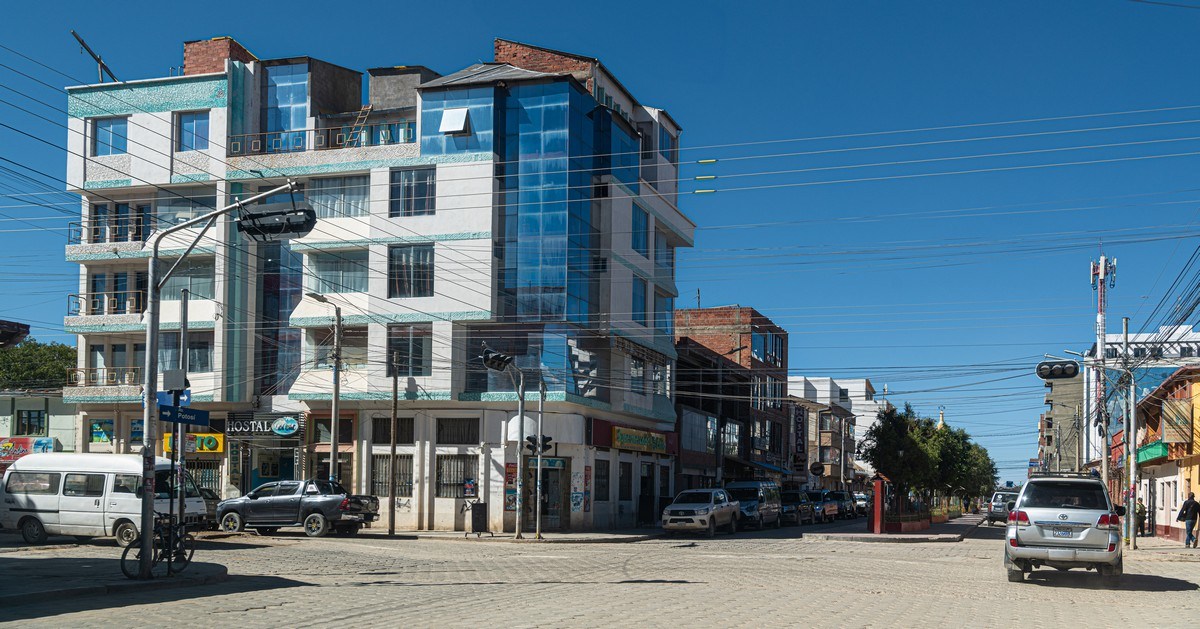
The street is paved with stone and is not always even. Some houses look quite decent, freshly painted:
If you turn into the side streets, things look a bit bleak: dirt roads, dust, and an overall feeling of neglect. Uyuni has many faces.
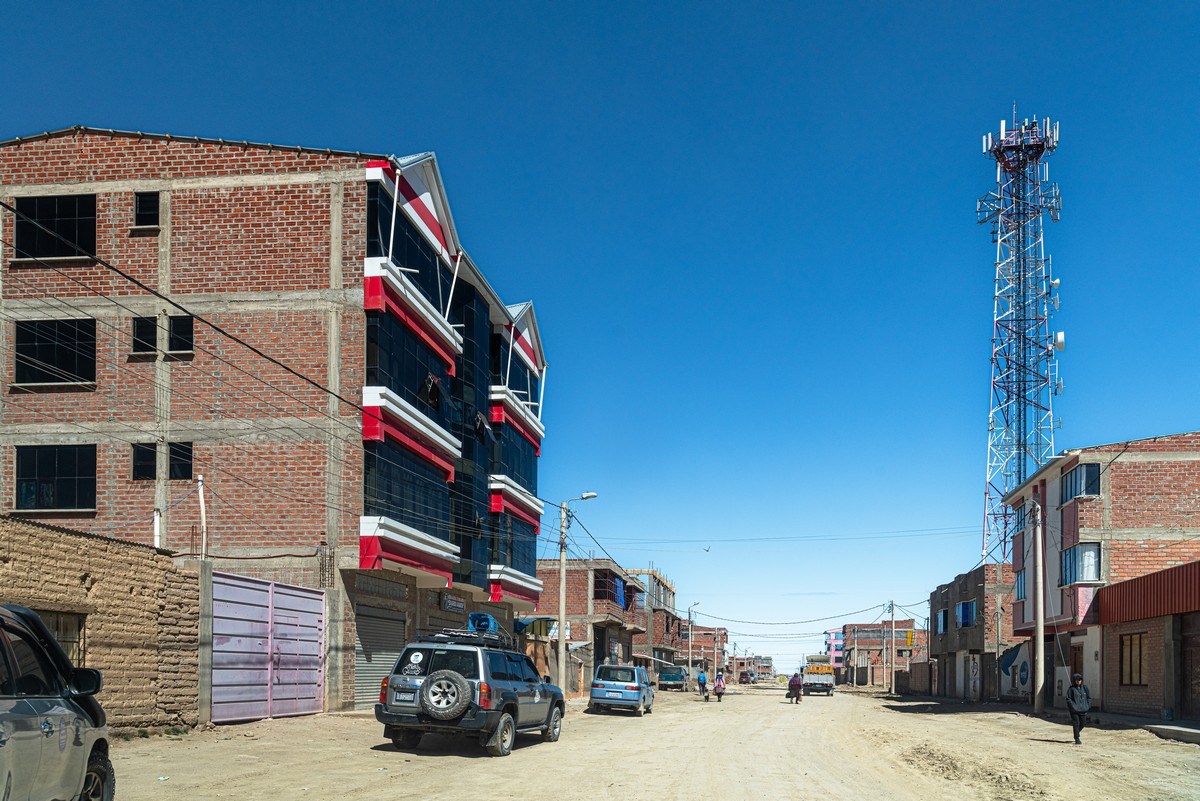
The main non-natural local attraction is… a steam-train graveyard – lying right next to the city:
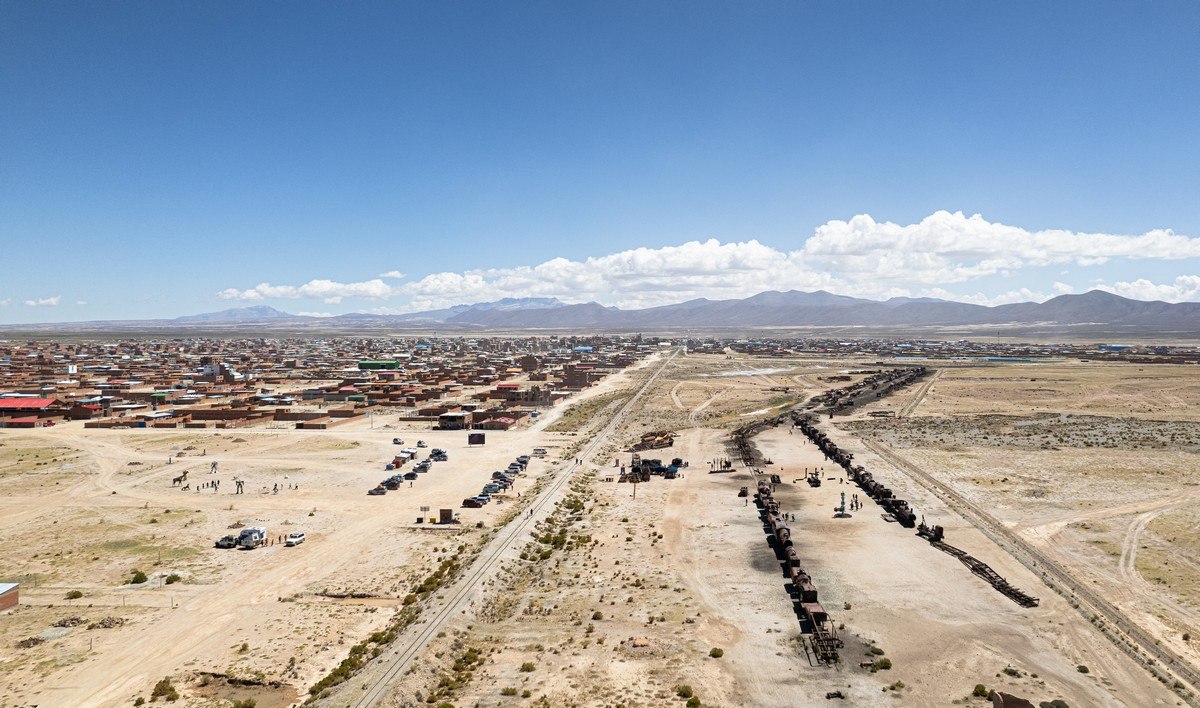
A busy railroad line once connected Bolivia and Chile. But political and economic turmoil led to its abandonment, leaving behind a decaying rail yard. The valuable metals were stripped from the train cars and locomotives, leaving only rusting shells to rot in forgotten rail sidings. A depressing sight:
Kids’ swings have even been hung from the skeletons of these once-working machines.

People climb on these rusting relics and happily take photos:
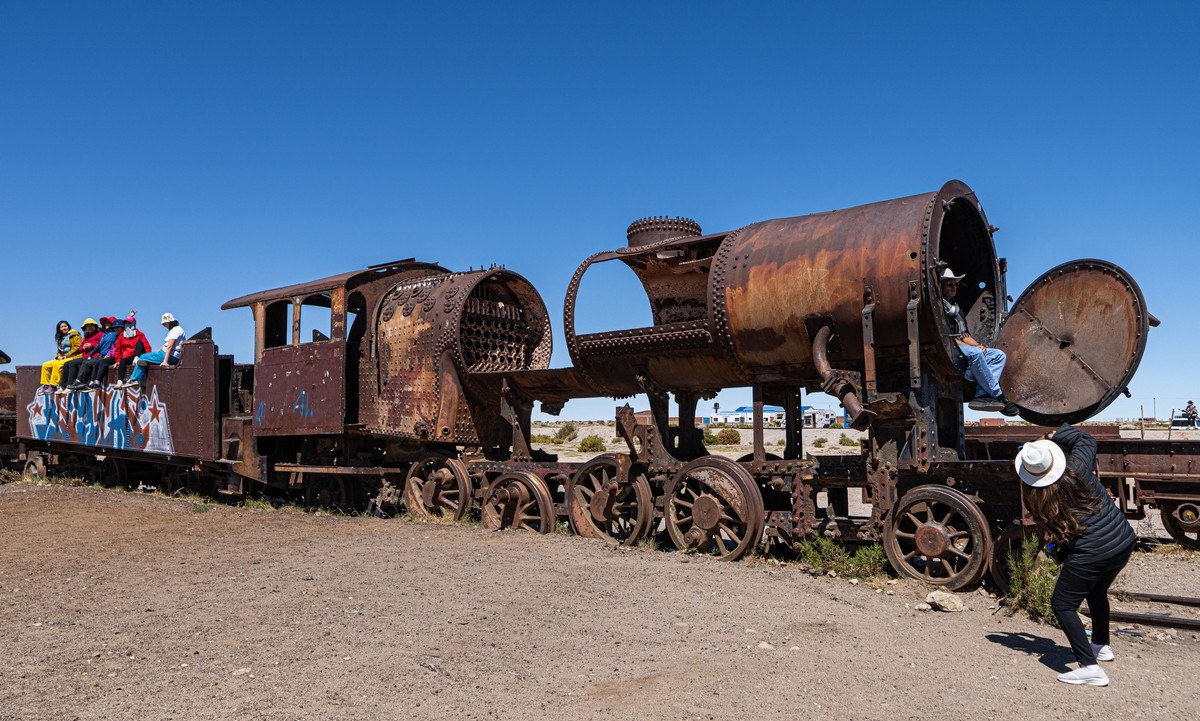
Some even seem to be enjoying themselves:
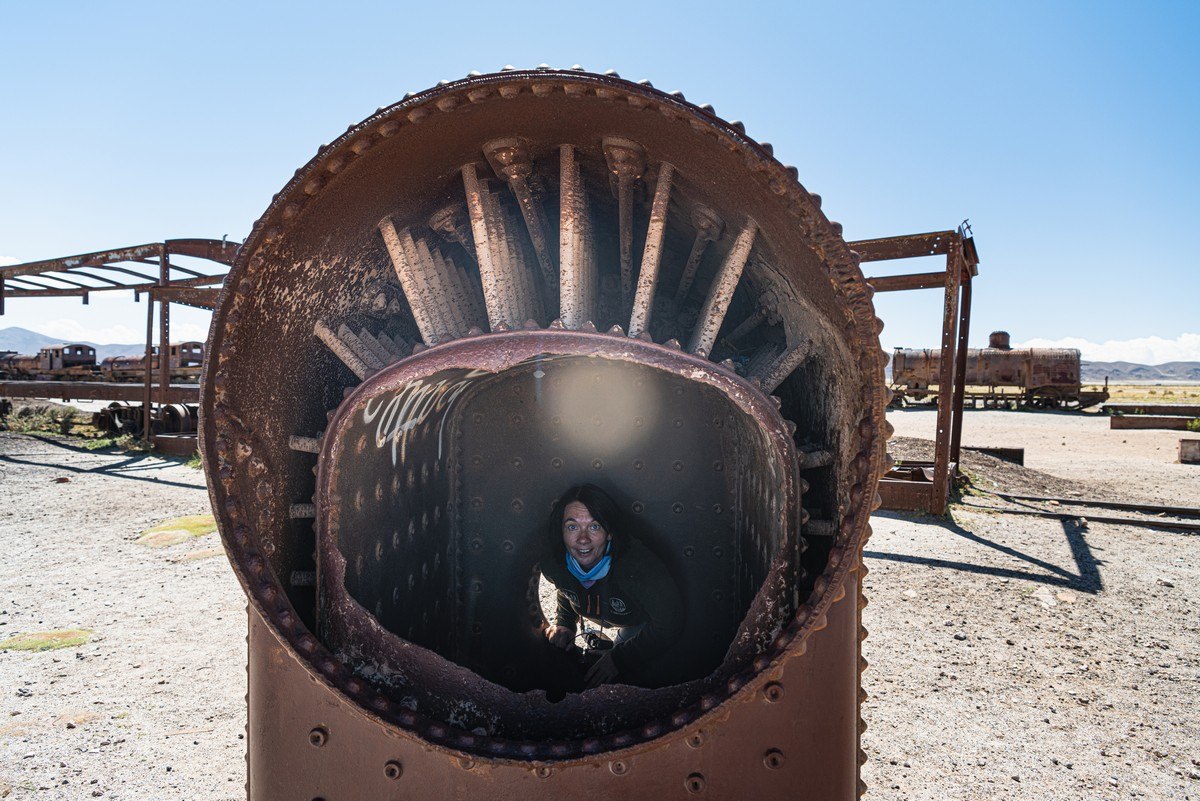
For me, it was sad to see these locomotives rusting away. Old trains and machinery, IMHO, should be displayed proudly in museums, like in the UMMC Technical Museum in Verkhnyaya Pyshma (an amazing place I’ve visited multiple times!), or the Steam Locomotive Museum in Moscow:
Oh well, we didn’t come here for the trains! We came for… the salt – so off we go!…
On the way to the salt flat, we passed through a small village that historically specialized in salt extraction but has since diversified into tourism. For example, here’s its Salt Museum. Entrance fee: five bolivianos, paid into an honesty box. The walls and sculptures inside are all made out of salt blocks:
Across from it – a house made of salt bricks, and an ancient truck ->
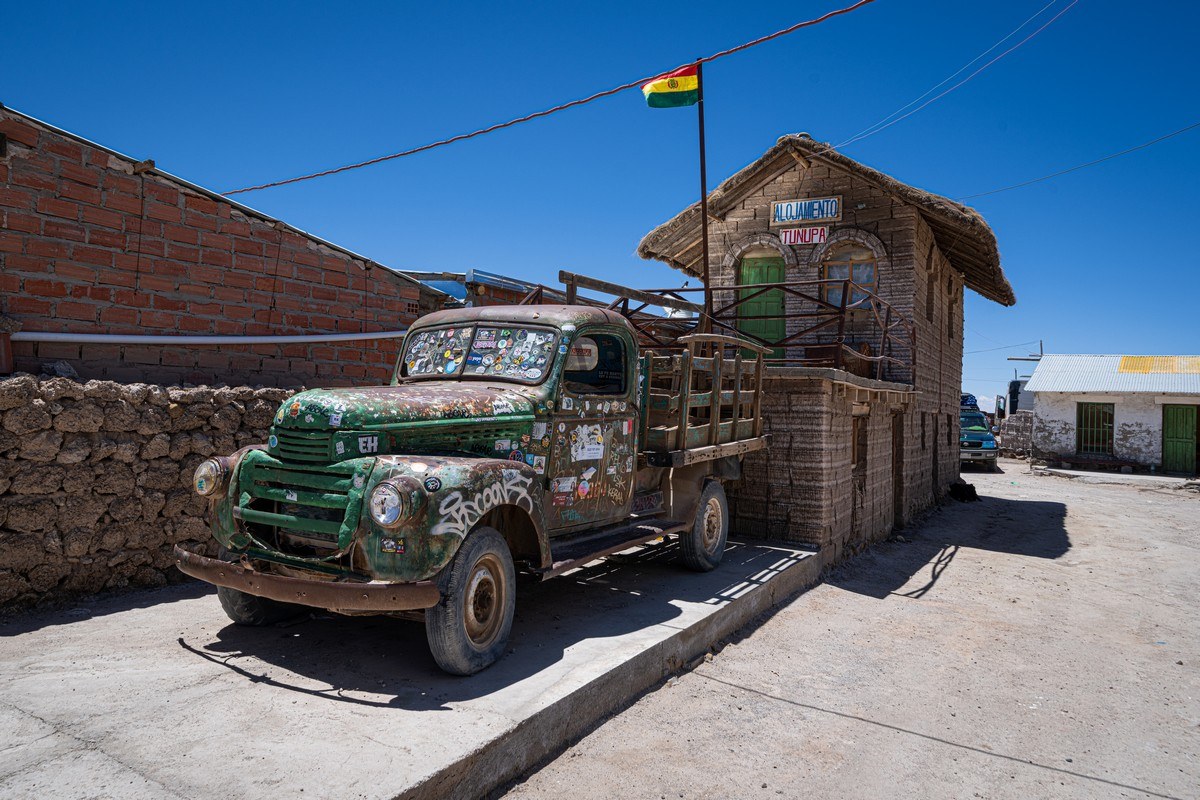
After a brief walk through the “salt village” – we finally head toward the lake! From above, this is what the entrance to the salt flat looks like. From this point, tourist vehicles scatter across different routes. Uyuni! Salt! Let’s go!…
From here, we drove across the vast white landscape, stopping along the way at various tourist spots, also for lunch, and to watch the sunset. Our first stop – geysers, which have carved out a colorful pool in the salt layers – likely tinted by ferric compounds. We noticed bubbling water springs here. Saltwater or freshwater? I didn’t taste it, but I can guess )…
Nearby, on small piles of salt, strange “gadgets” have been set up. Can you guess what they’re for? Don’t scroll ahead just yet!…
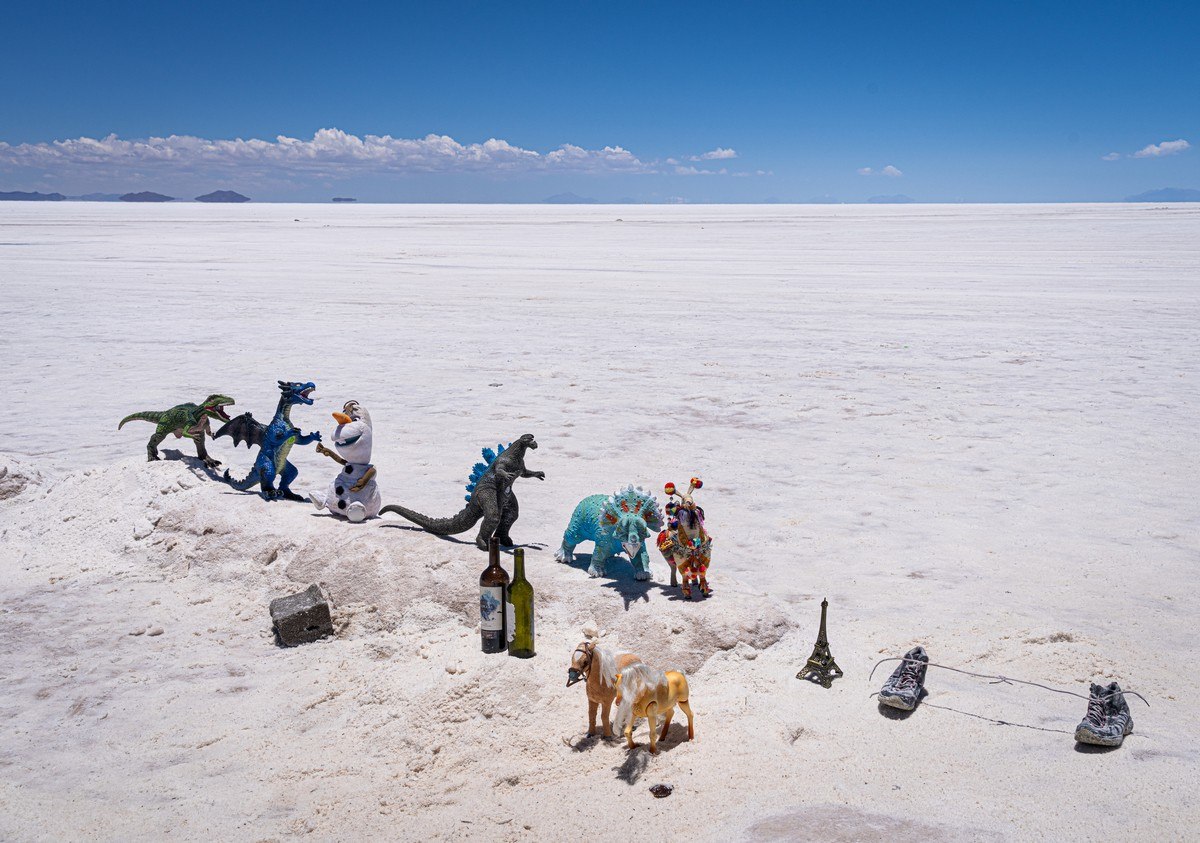
Notice the boots with tied laces in the lower right corner? If you place them close to the camera and have someone stand far away…
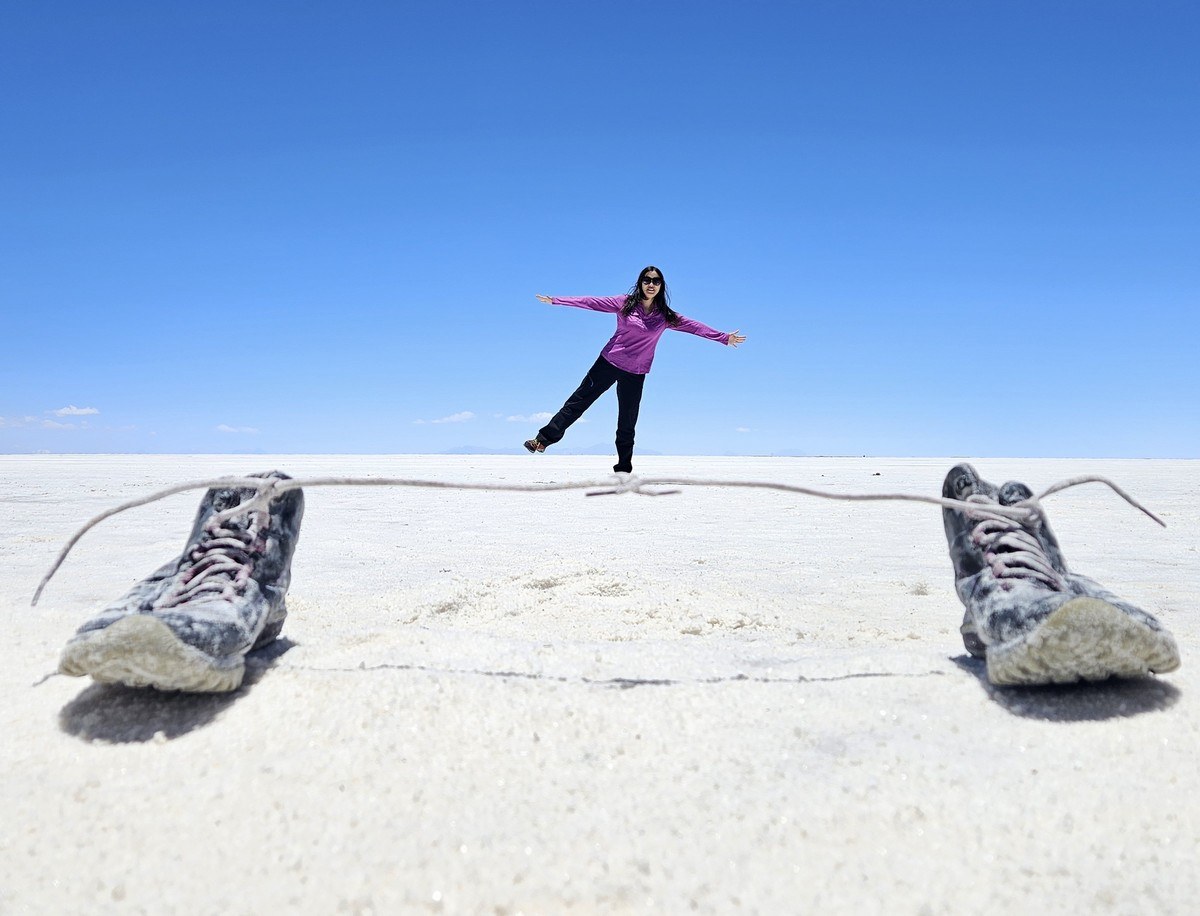
This perspective trick is a popular theme for photos here – you can find millions of them online. But of course we had to take our own! This one, for example. All looks good… except for the shadow strip from the girls, which slightly spoils the illusion. And we don’t use Photoshop!…
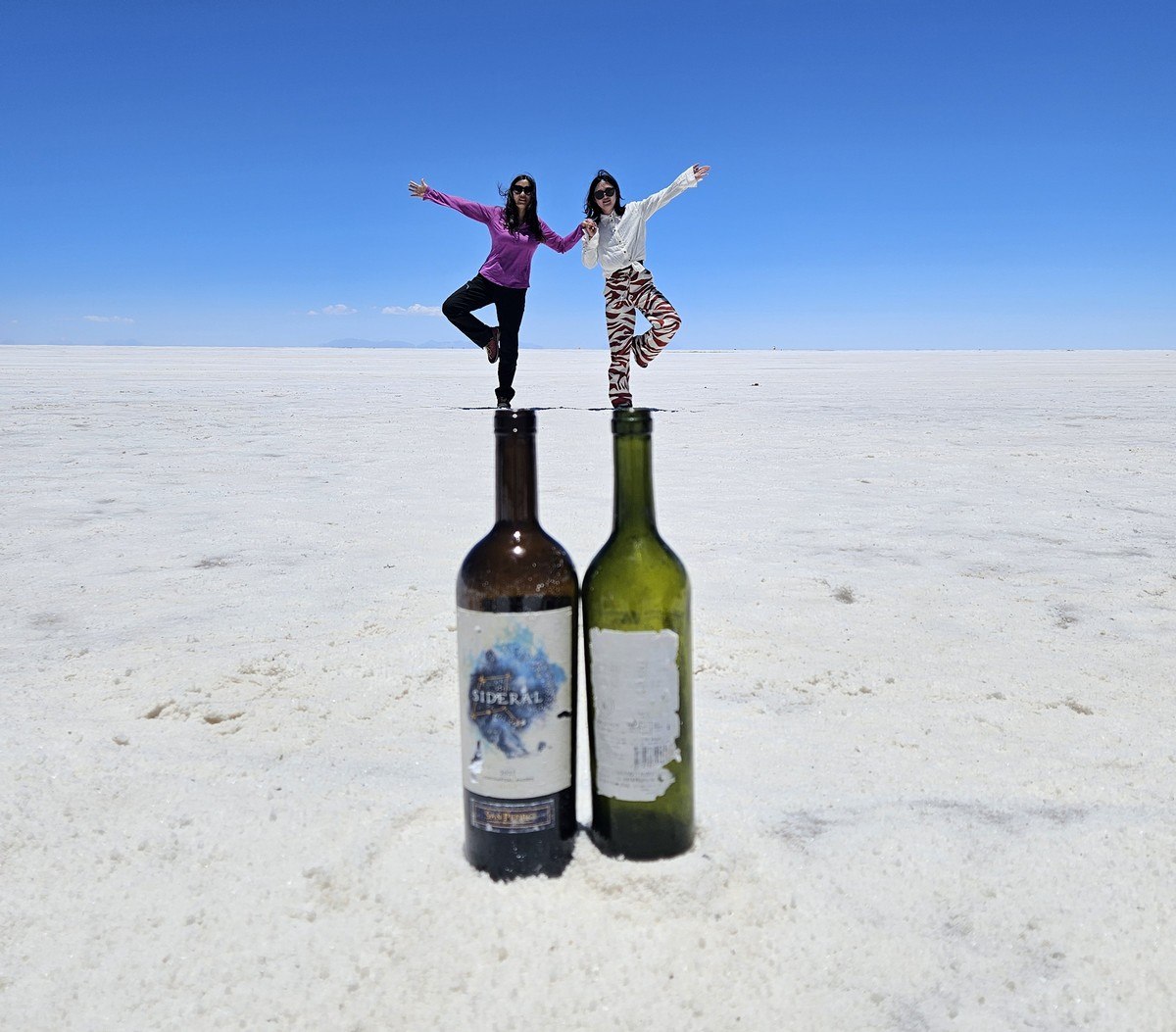
Behind the scenes ->
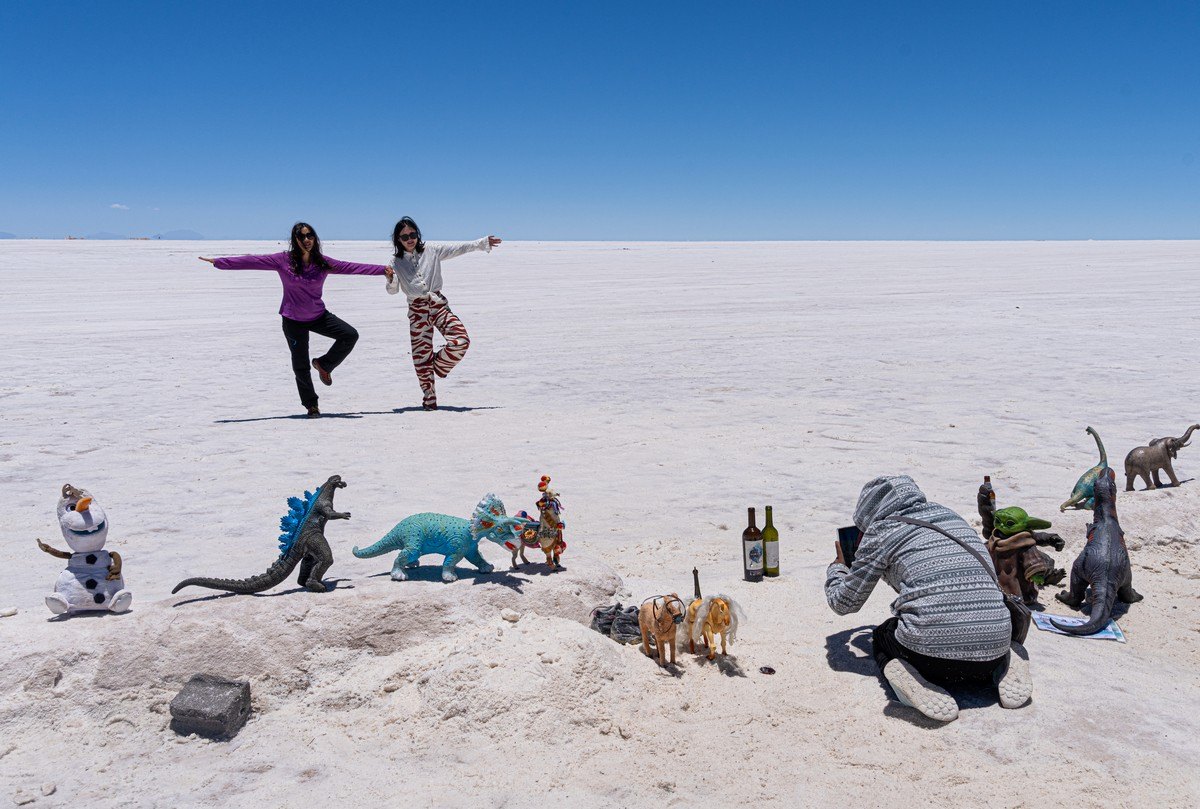
Had to joke around with my beloved wife, of course! :)
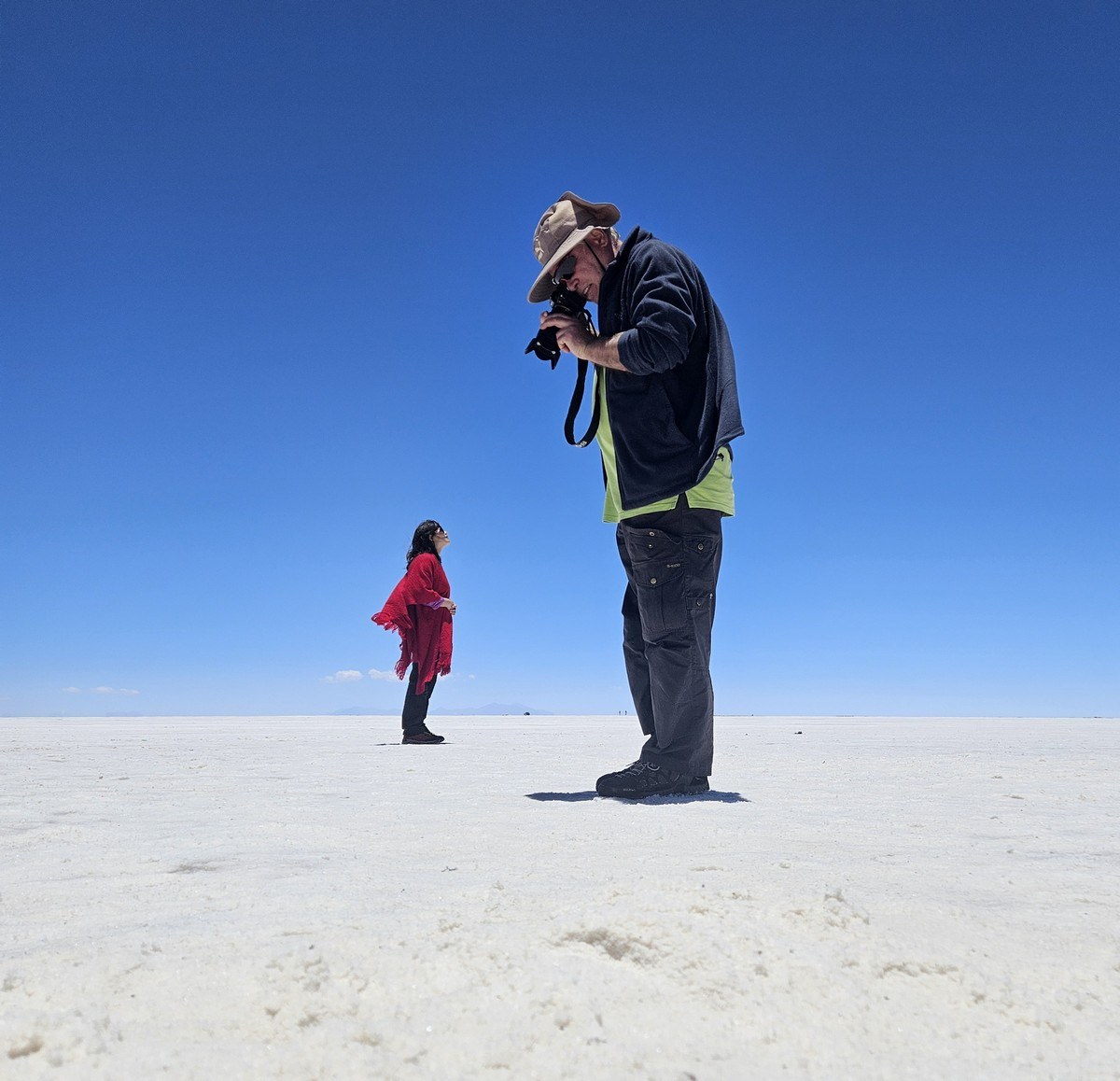
She retaliated immediately:
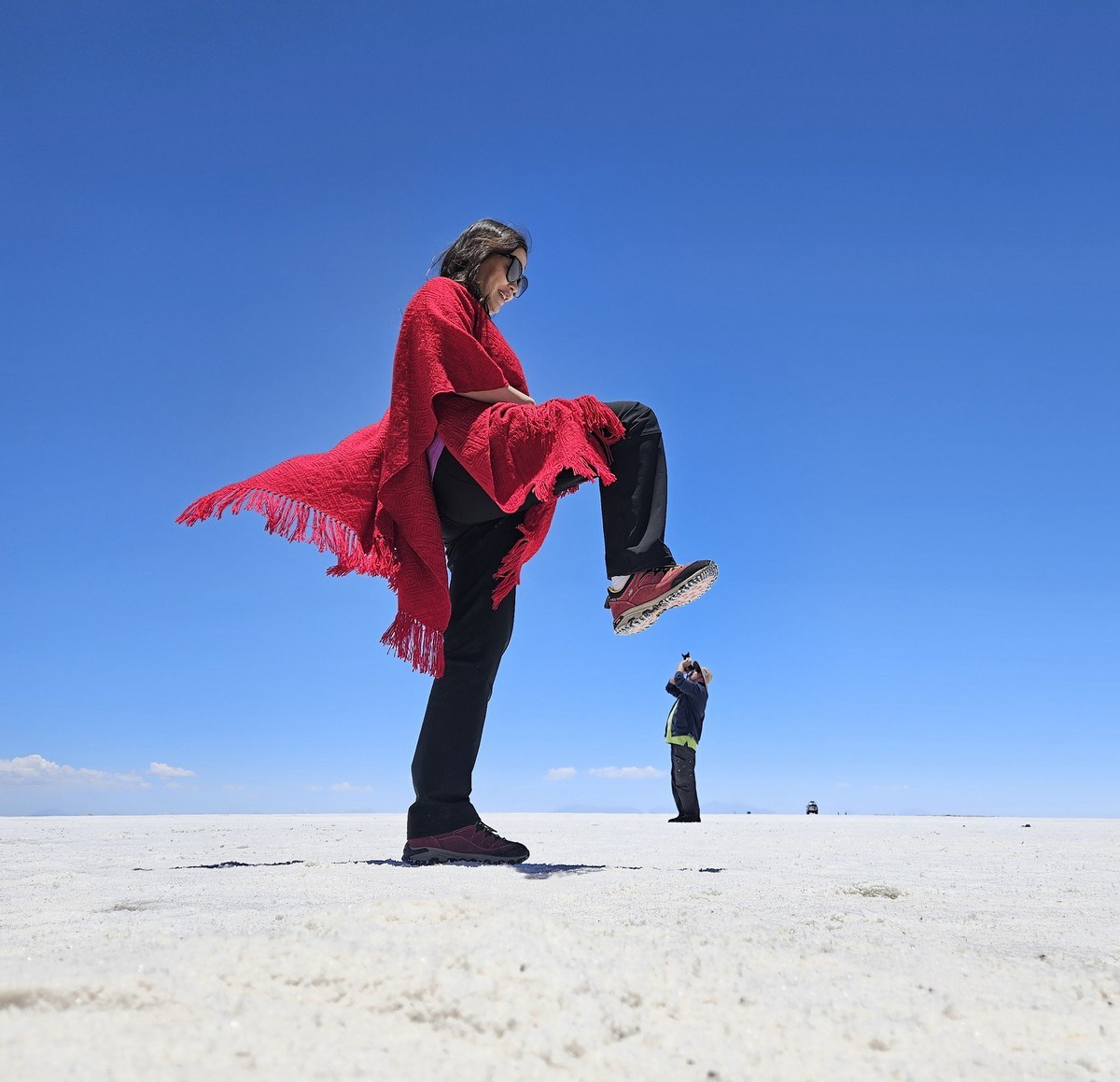
More behind-the-scenes shots:

A lone car tire is placed in the distance for similar trick photos. And it’s surprisingly popular! ->
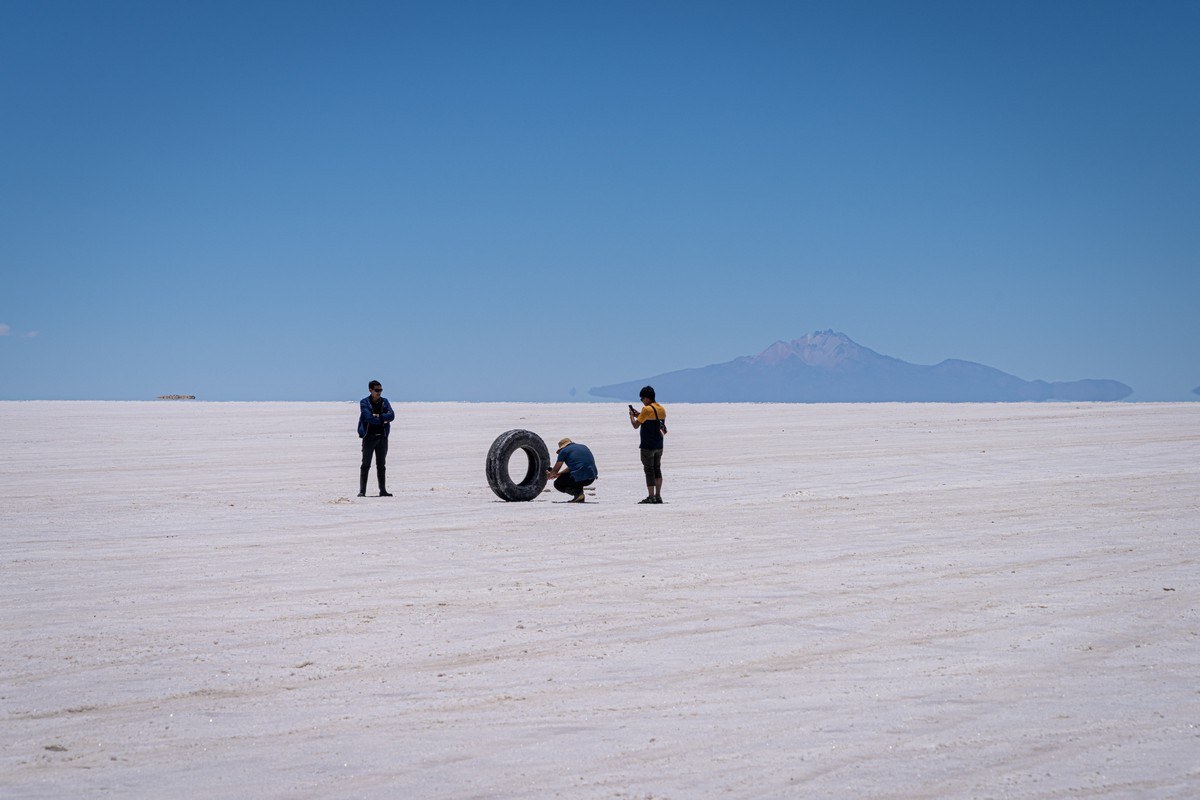
It reminded me of our trip to China’s Chaka Salt Lake last year where there were dozens of installations for Instagram and TikTok photos. But Uyuni is a hundred times bigger, though it has around 200 times fewer tourist gimmicks. Here, even for a simple tire there was a line for photos! Naturally, I had to join in…
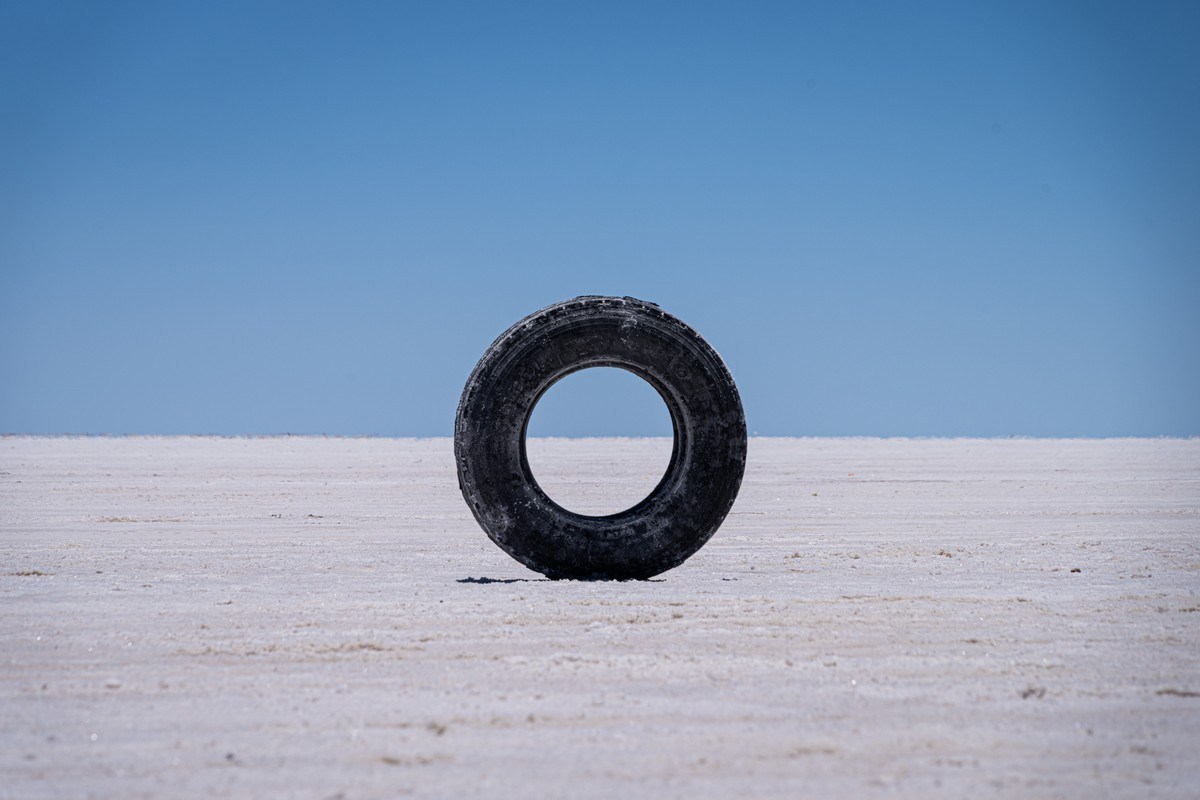
The mirages here are mind-blowing! Distant structures on the horizon seem to float above the salt surface:
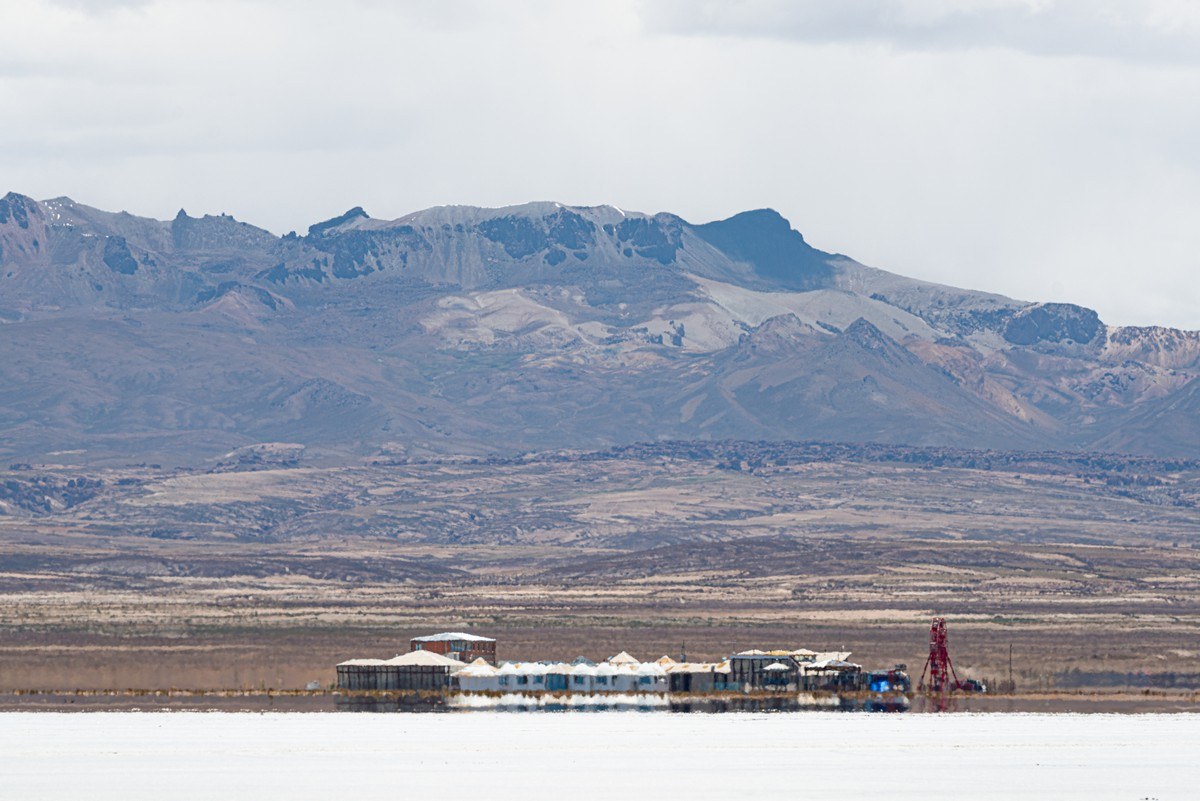
Flags near the springs and some distant objects on the horizon ->
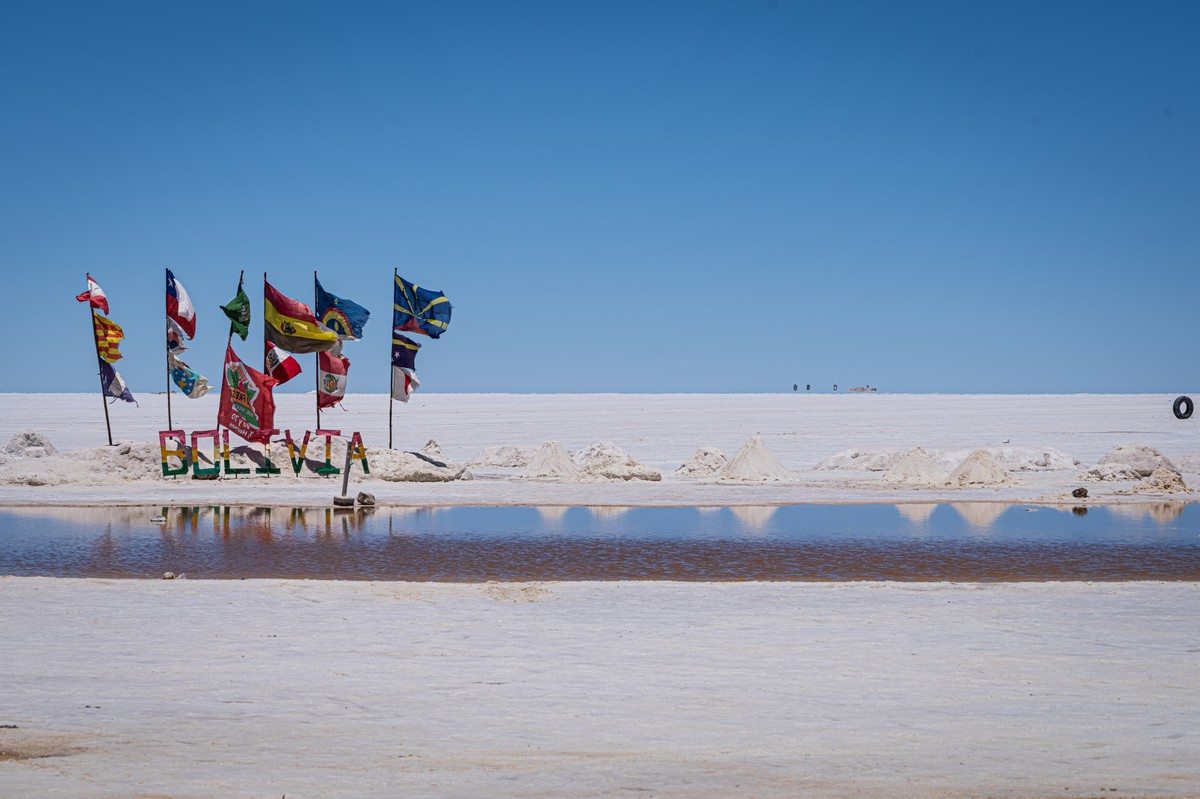
But if you look closer – those objects are actually floating. This isn’t a camera glitch – it’s hot air currents distorting the image:
A group of tourists is resting in the distance:

And something else mysterious over there:
And yes, this is exactly how it looks in real life.
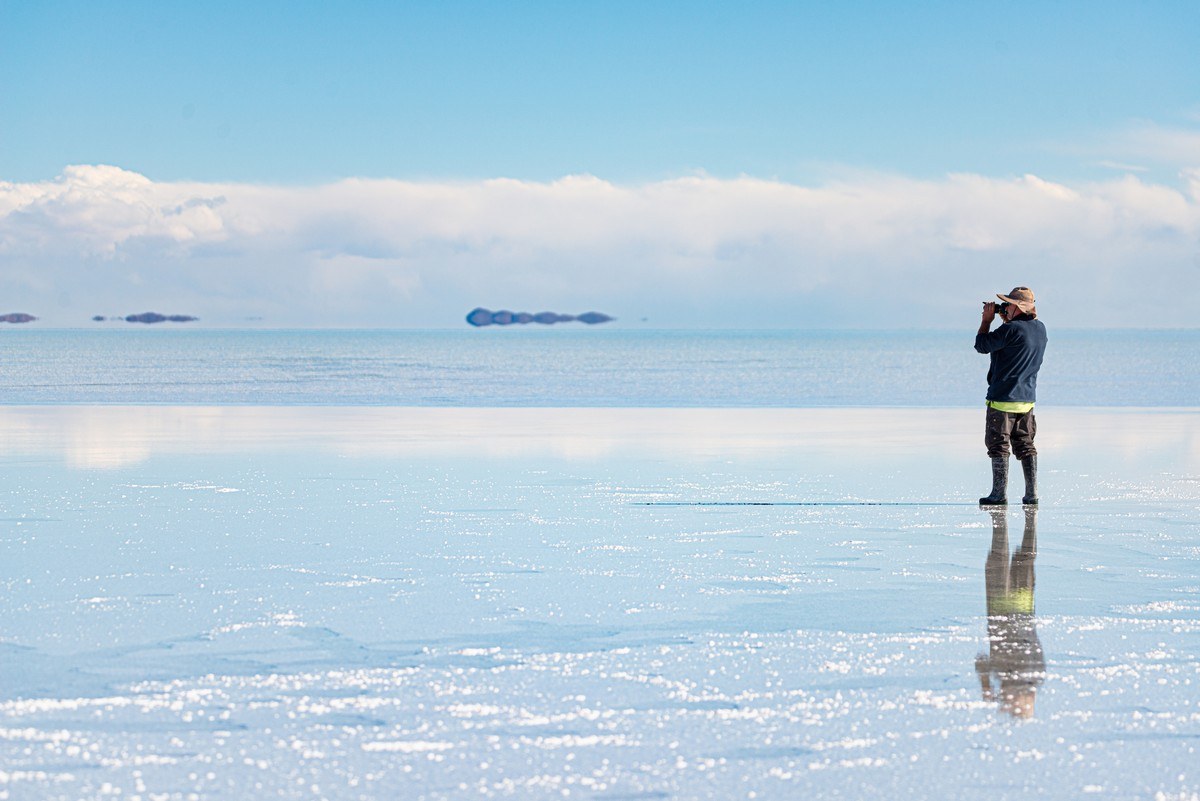
You might be wondering what kind of vehicles can handle these salt flats? After all, driving across this vast salty expanse is a surefire way to wreck a car. And that’s absolutely true.
For that reason, most vehicles here are middle-aged Japanese SUVs – old, reliable, and practically indestructible. Our vehicle had a speedometer in miles, meaning it was likely imported from the U.S.A. (I won’t mention tariffs here:). And here are our trusty rides:
Our drivers take it slow and steady – minimizing the amount of salt that gets lodged under the chassis. Most drivers are careful with their vehicles, but a few go full throttle. Meanwhile, time to be moving on!…
About 10km from the springs and the dinosaur photo sessions, there’s another interesting site – a maze built from blocks of salt along with salt sculptures. The maze is entirely real, featuring an entrance, exit, walls, turns, and dead ends – it’s quite a challenge to navigate through it. You can climb the steps to the outer wall and get a sense of the scale of the adventure ahead. Alright, let’s go!…
We made it to the “central square”:
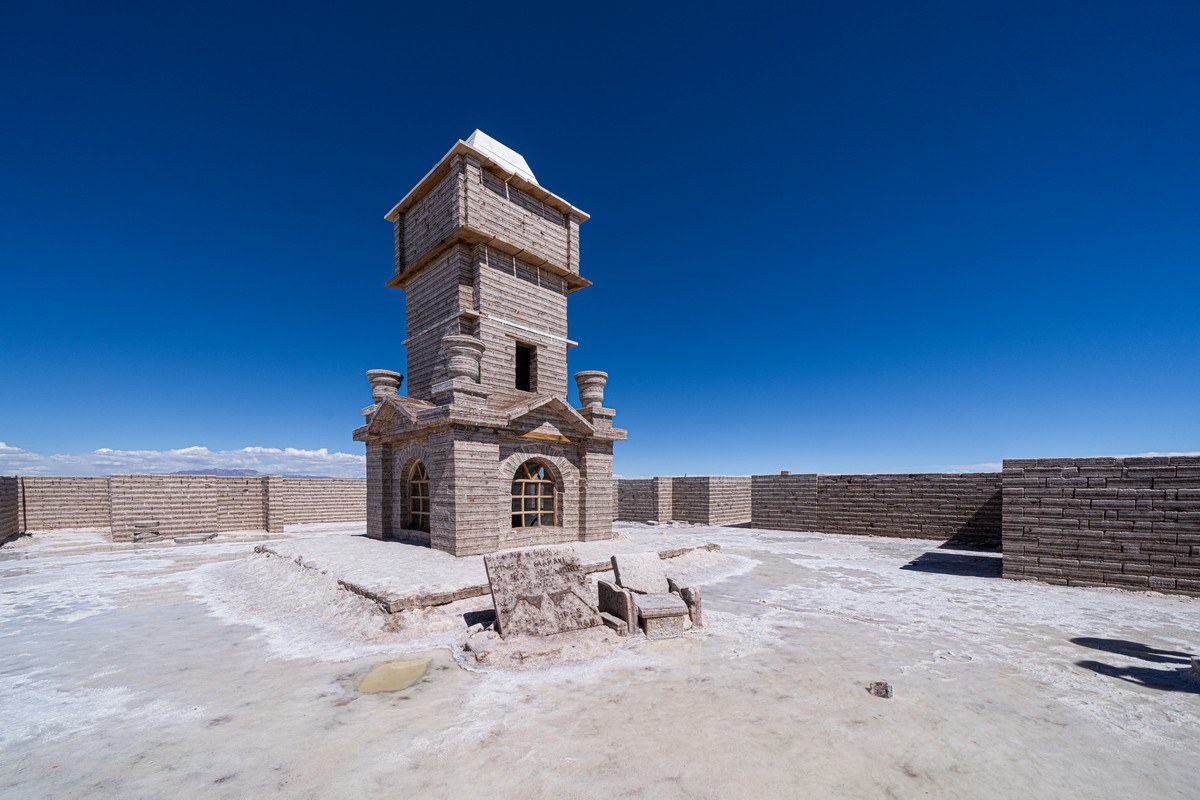
DZ also reached it but got lost on the way out – I had to guide him from above :) ->
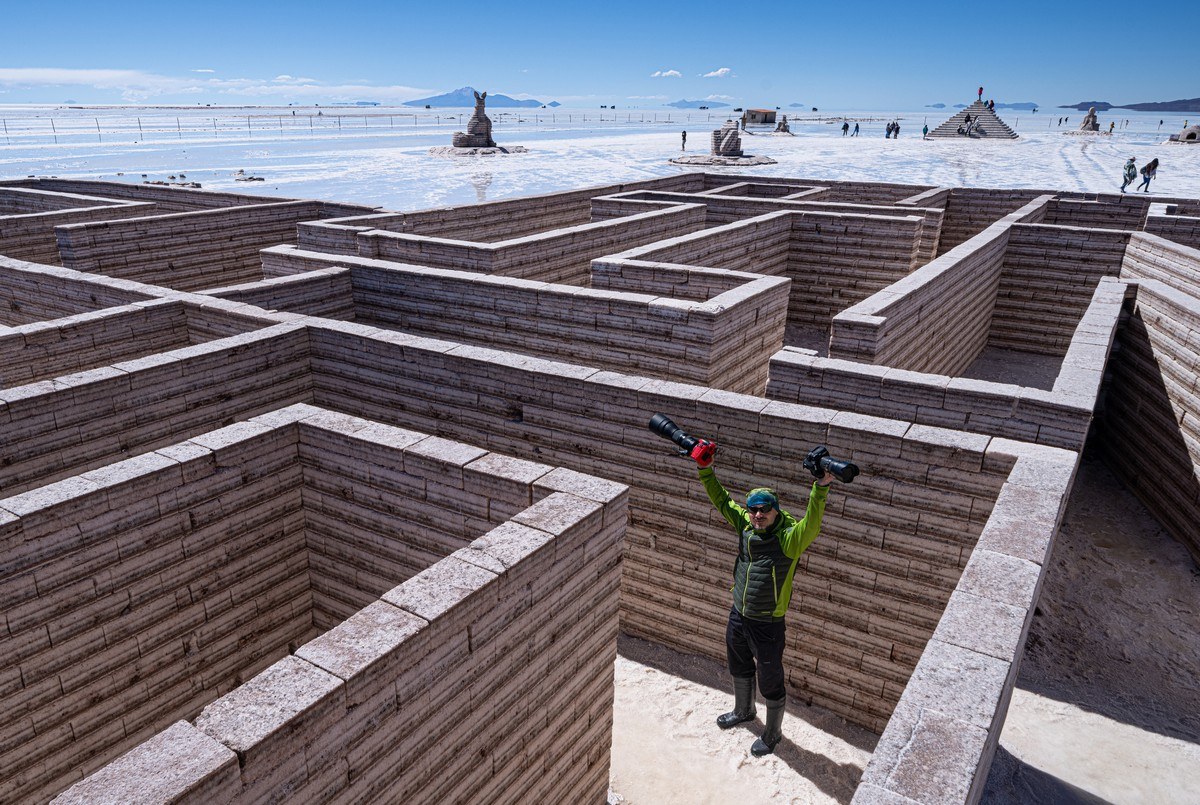
And here’s the exit:
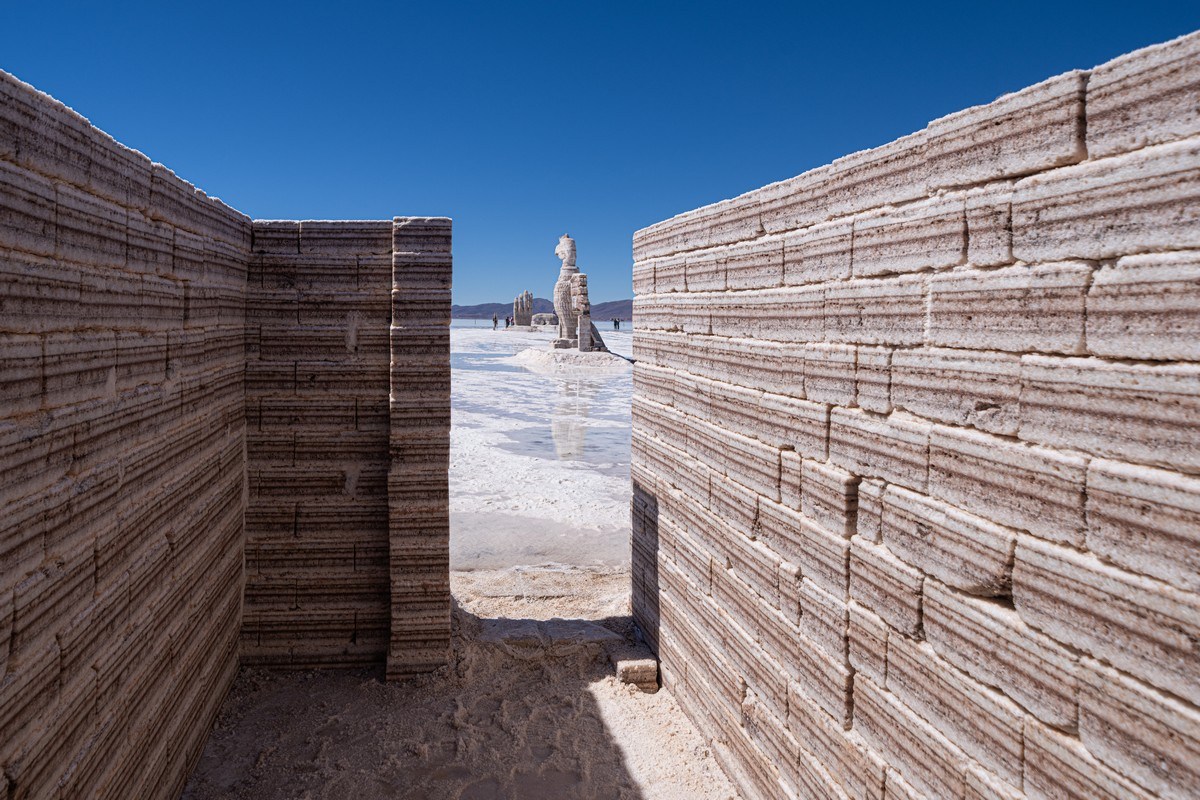
Done. A good bit of fun.
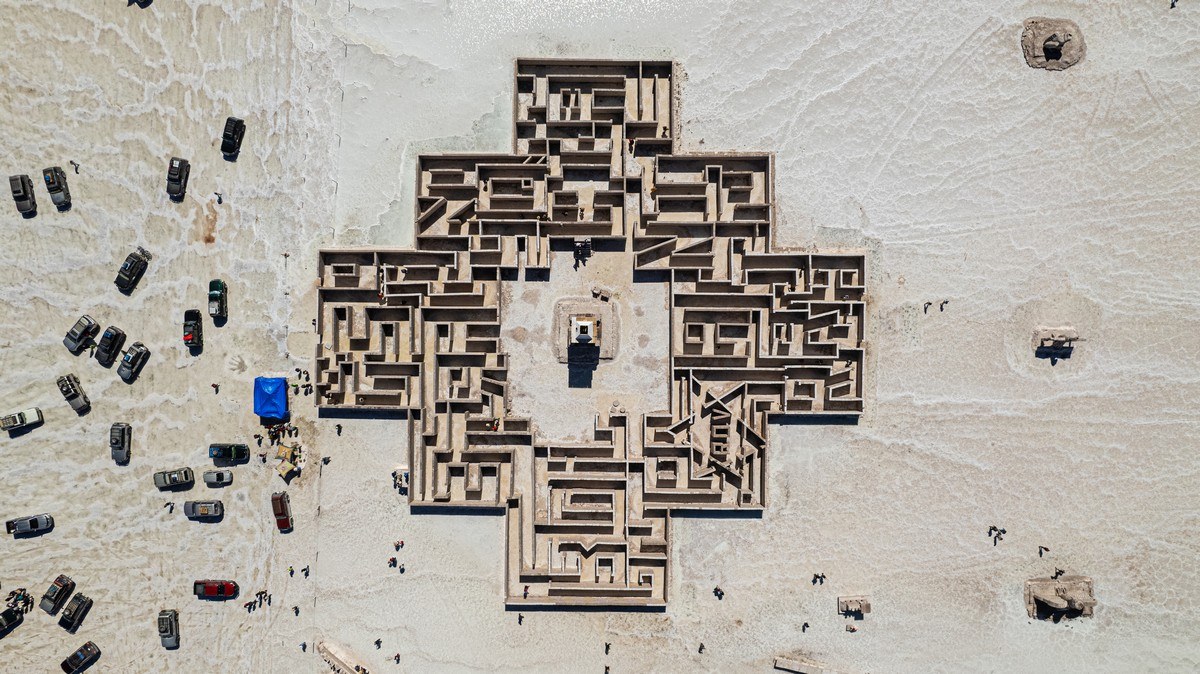
Curiously, if you look closely, you can see the letters “ROV” laid out. I have no idea what it means. Initials of the maze’s creator? ->
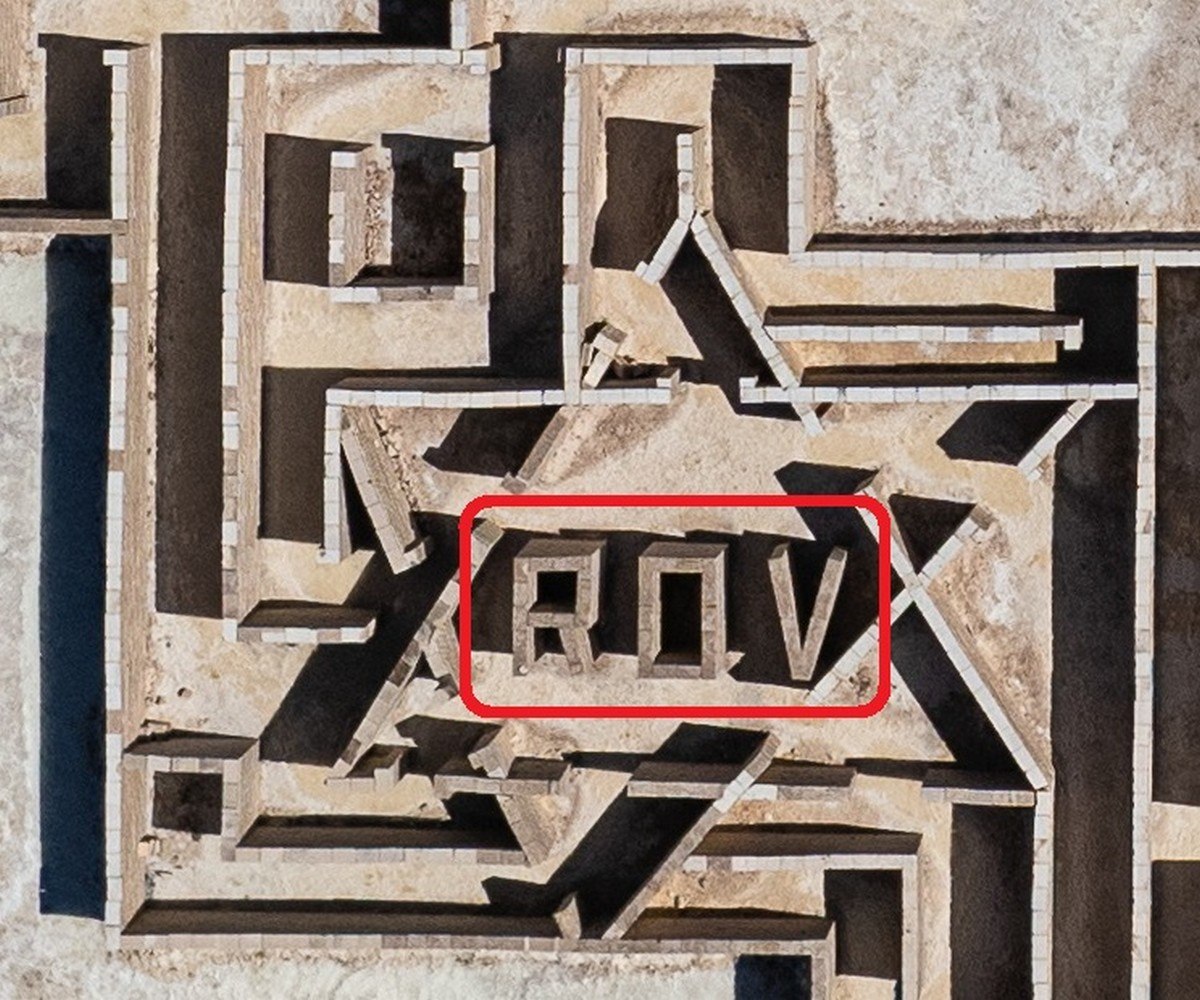
The salt block sculptures are also quite popular with passing tourists, but I still managed to snap some shots without anyone in the frame :) ->
Also, here’s the “Playa Blanca” hotel, which we saw from above while flying into Uyuni. It’s also built from salt blocks, but no longer accommodates guests. But you can still enter and look around. The lobby and restaurant, tables, and chairs – all made of salt!
Unfortunately, we couldn’t see inside the rooms, so we had to settle for looking at the posters on the walls:
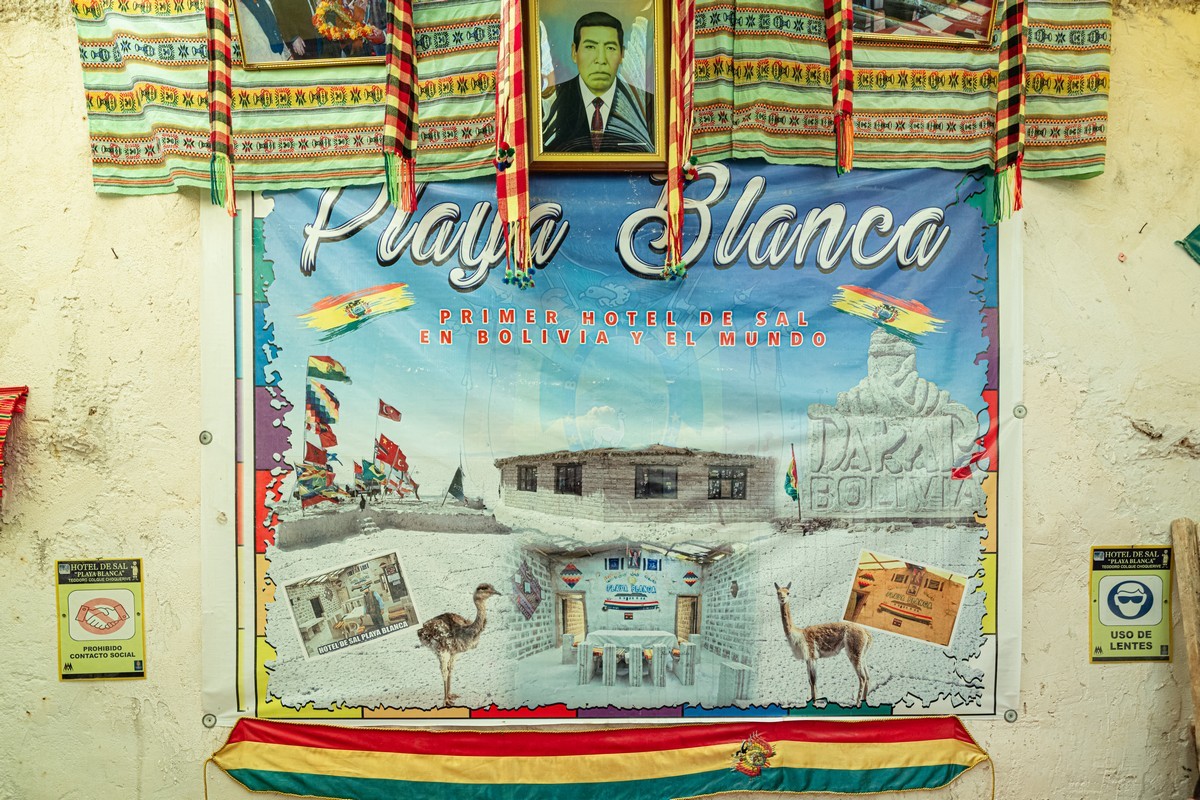
In the 2010s, Dakar Rally stages were held here, as proudly commemorated by a monument – of course made out of salt:
Now it’s time to head to the grand finale – the cherry on top of our Uyuni adventure. We’re heading to a lower area where, during the rainy season, a shallow layer of water accumulates:
I’m not sure how it is at other times of the year, but in mid-January there were two or three centimeters of water over the salt – stretching out for miles! // Fellow travelers mentioned that in February-March the guides said it’d be up to the knees. The scenery is simply fantastic:
Naturally, we weren’t alone here. But the area is vast and everyone stays far apart, so no one gets in anyone’s way.
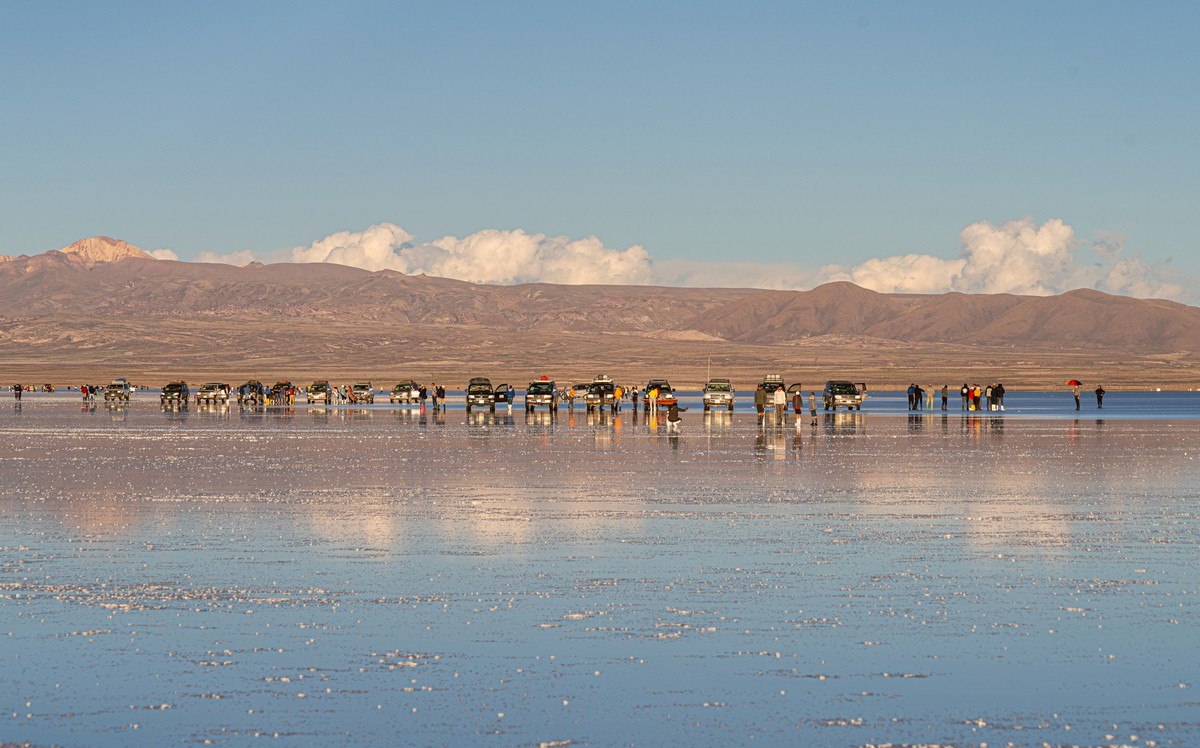
You could walk here endlessly, as far as the eye can see:
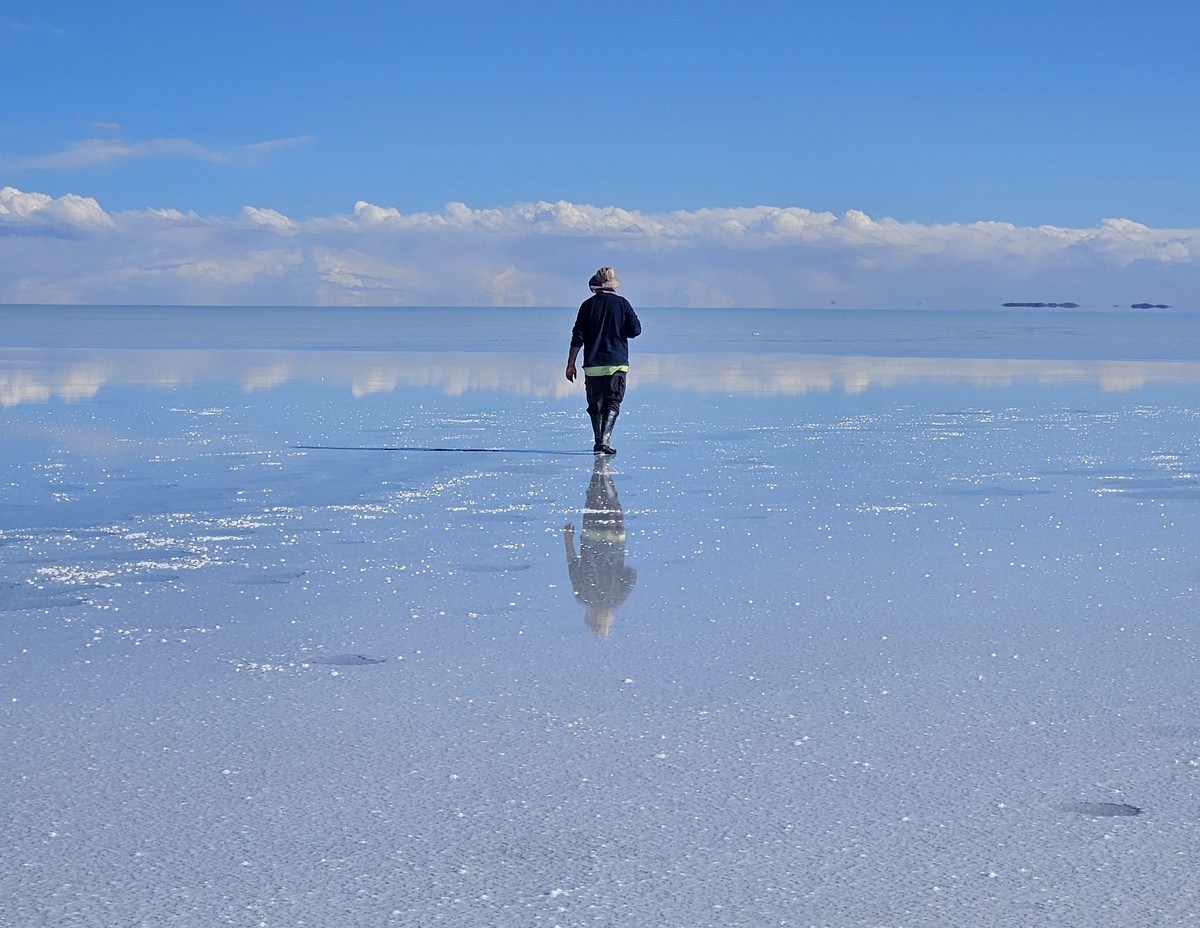
The main thing is to know when to stop :)
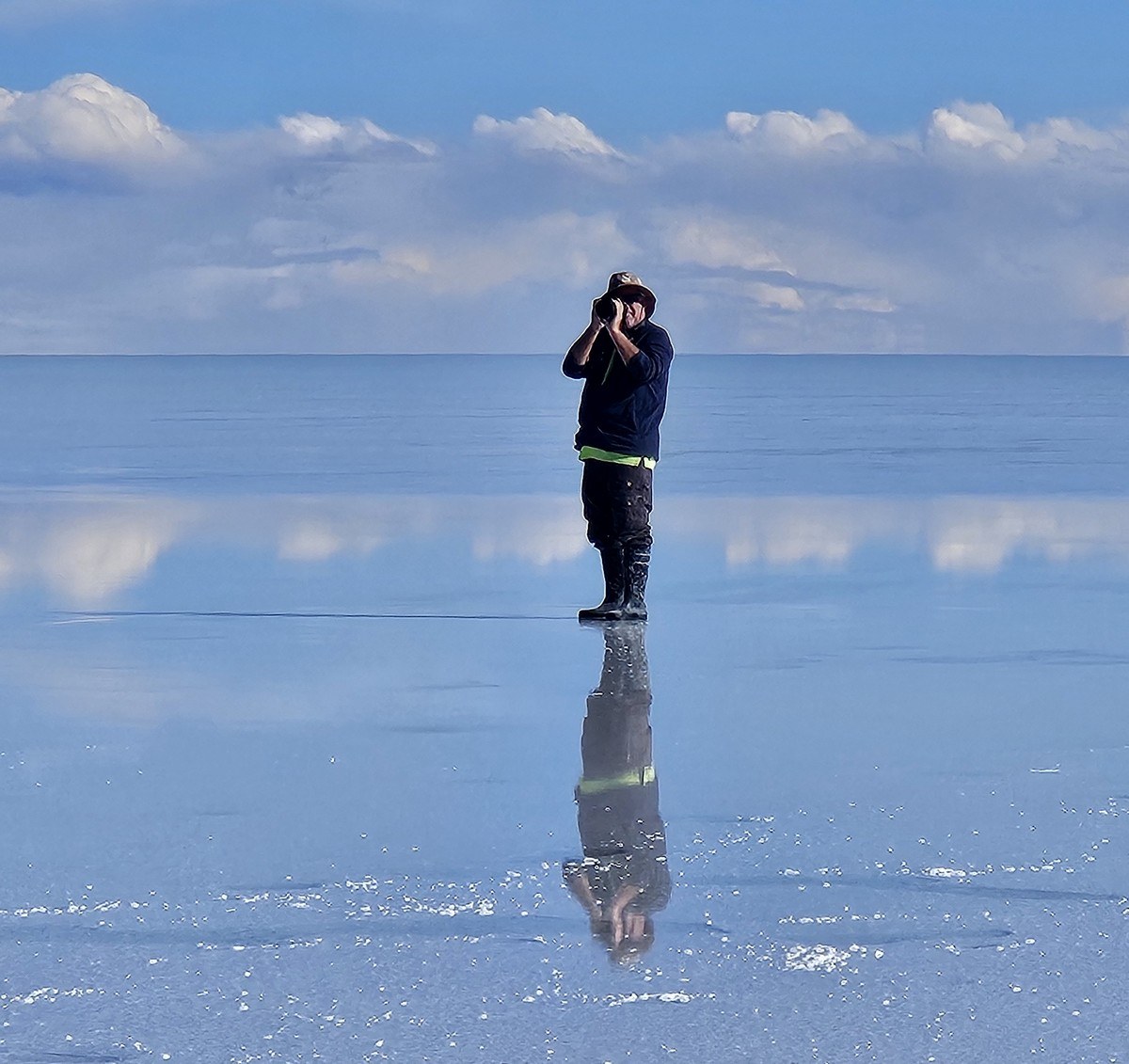
This is the perfect spot for photo shoots and staged shots:
Of course, our neighbors weren’t missing out either :)
This place is simply magical! And to top it all off – sunset! A truly luxurious sight:
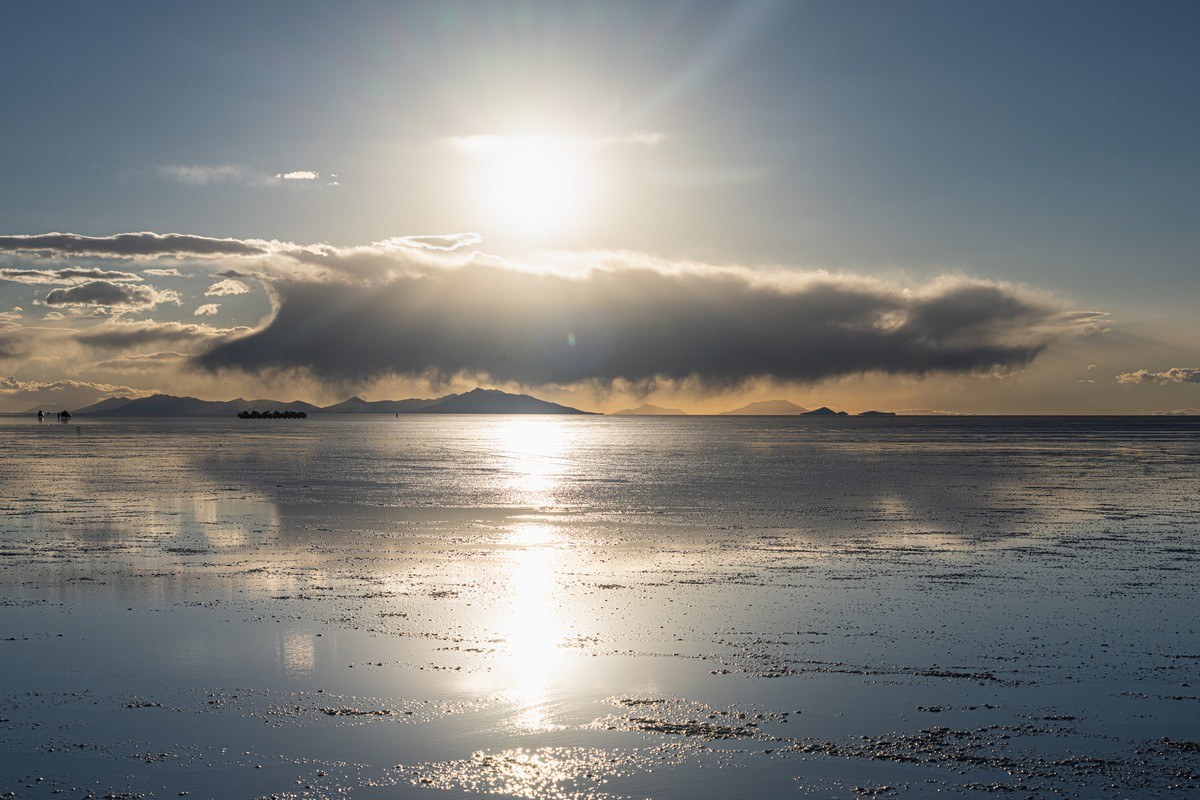
Midori Kuma was ready for evening shots!
And that was that. The Uyuni Salt Flat – done. An incredibly long and eventful day – but oh-so worth it!
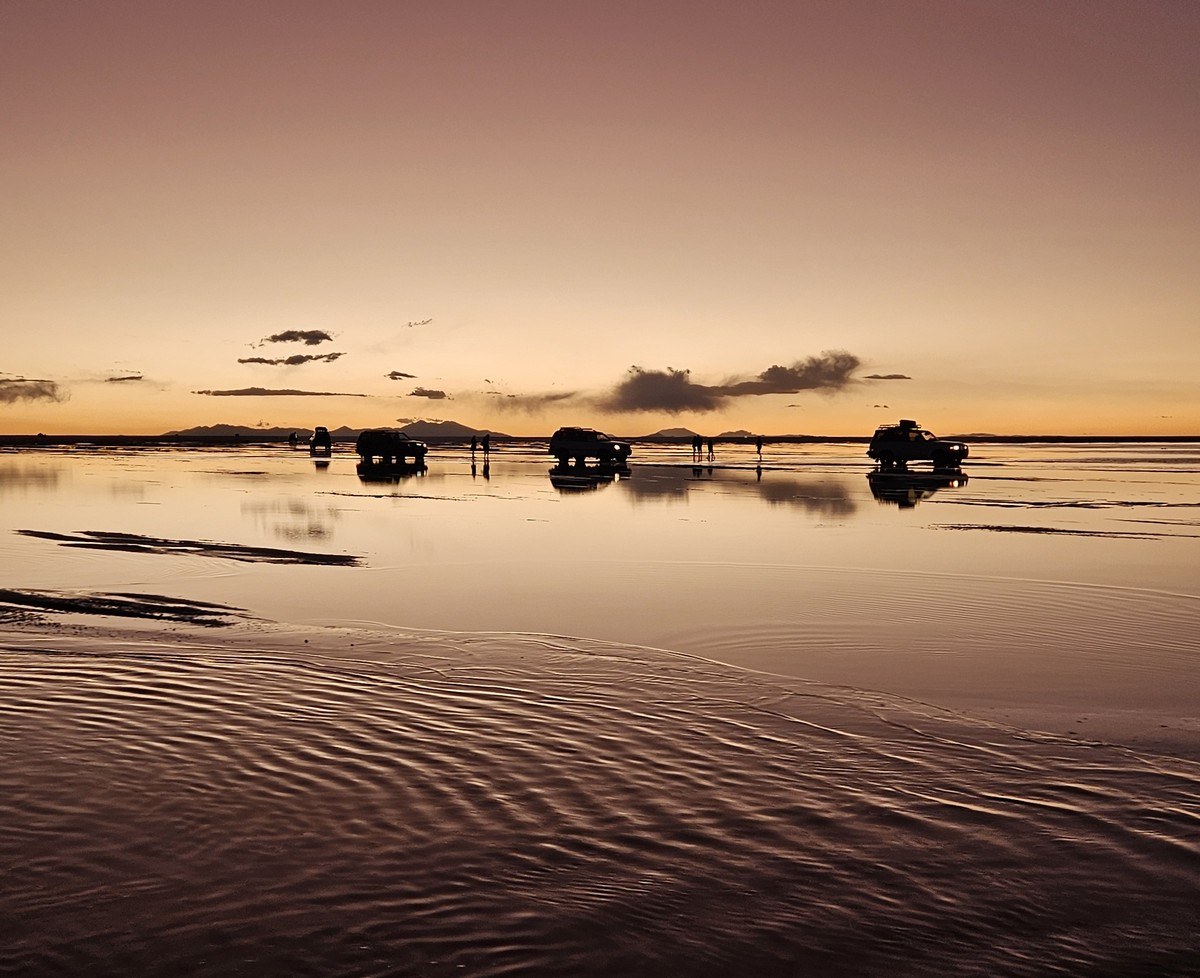
I can now confidently say that it’s undoubtedly one of the most unique and stunningly beautiful places on our planet. No wonder it holds an honorable place on my Top-100 Must-See Places in the World list. And just now, next to the name “Uyuni” on that list, I’ve marked “been there, seen it.” Hooray!
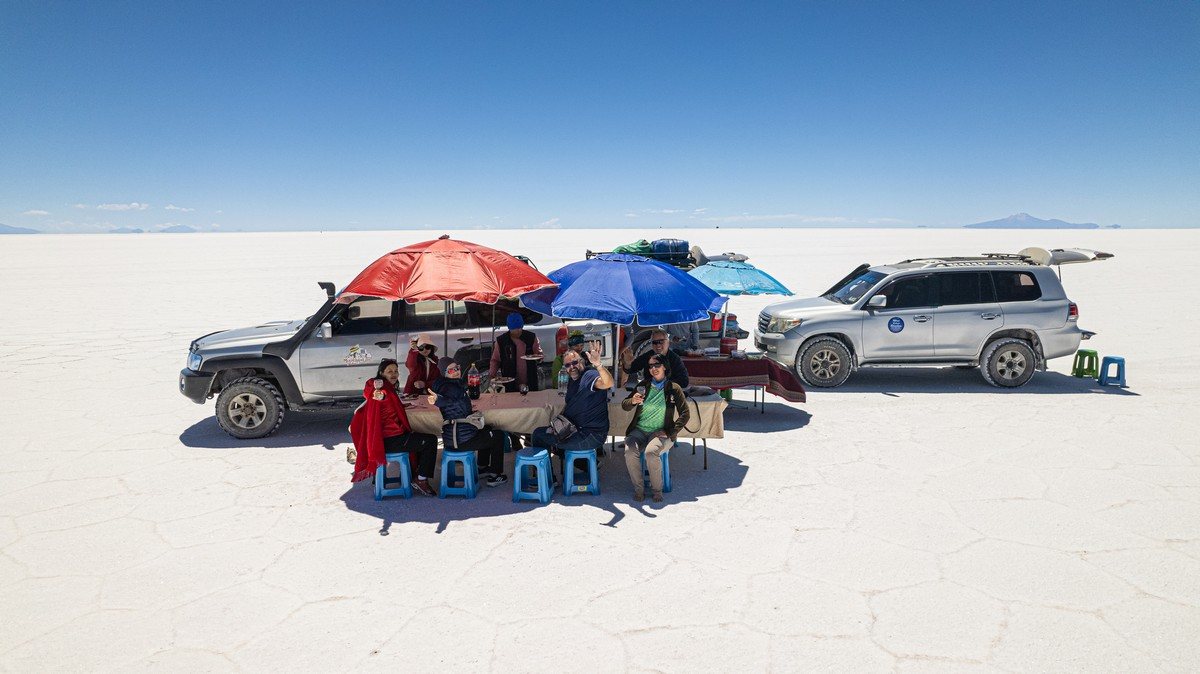
A few more photos to finish – mine and those of fellow travelers:
An incredible place! If you ever get the chance – get there!
Next stop – a tour of the deserts of the Altiplano plateau.
The best photos from our LatAm-2025 trip are here.

